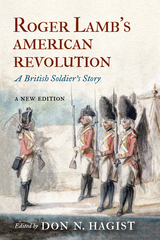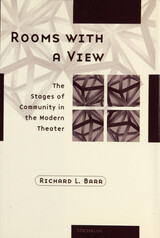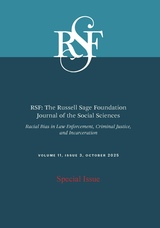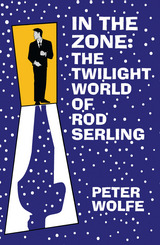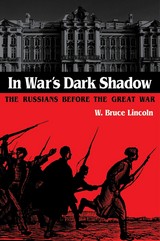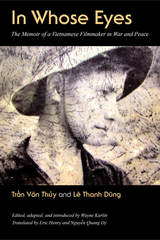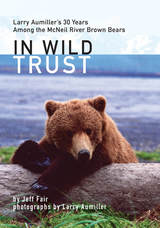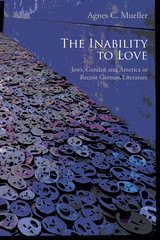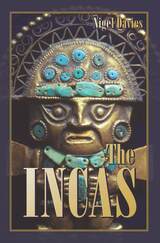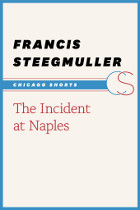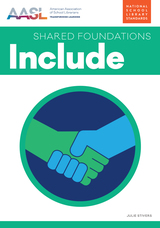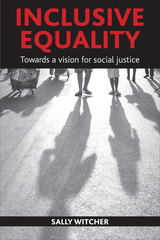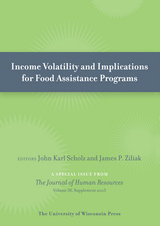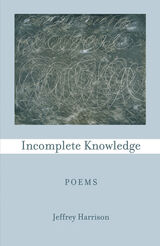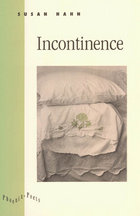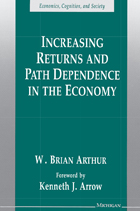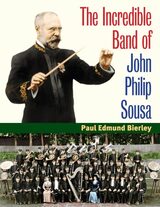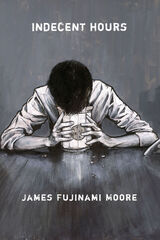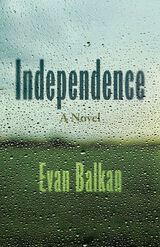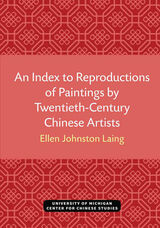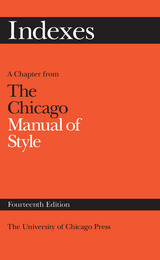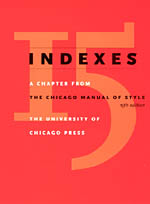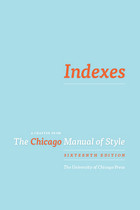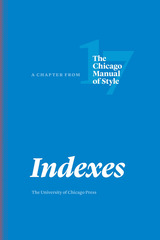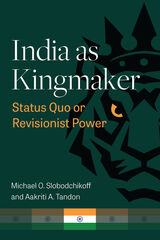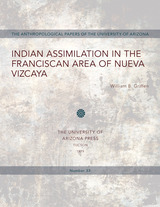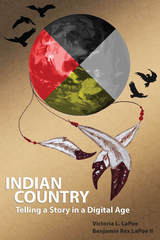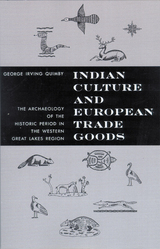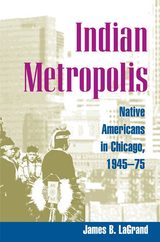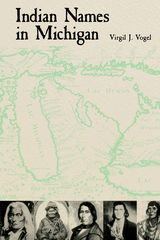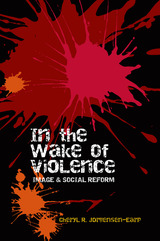 In the Wake of Violence: Image & Social Reform
Cheryl R. Jorgensen-Earp
Michigan State University Press, 2008 How acts of violence are rhetorically "managed" by social movements: In the Wake of Violence explores the immediate and longer term aftermath of violence committed by independent radicals involved in single-issue movements. Cheryl R. Jorgensen-Earp explores several specific incidents in recent history—the arson of a Vail ski resort by environmentalists, the murder of Dr. John Britton by an antiabortion activist, and the torching of a University of California research laboratory by animal rights activists among them—to discover how the perpetrators of the violence and the majority of reformers involved in their movements rhetorically framed the violent act for a potentially outraged public.
In the Wake of Violence, claims Jorgensen-Earp, the perpetrators are often forthcoming with both explanations for and a defense of their actions, casting themselves as righteous actors or martyrs for a cause. However, ardent reformers within the same cause might look with genuine revulsion at the actions of their own radical wing. This study claims that the nonviolent majority in single-issue reform movements employs a predictable constellation of rhetorical strategies to manage the impact of radical fringe violence. The primary goal of this rhetoric is to avoid a backlash against the larger movement by a public alienated by violent acts.
In examining specific rhetorical responses by the nonviolent majority in antiabortion, animal welfare, environmental reform, abolition, and women’s suffrage movements, Jorgensen-Earp considers a wide range of discourse types—from newspaper articles, interviews, and editorials to private letters; from editorial cartoons to the homemade signs of movement activists; and from speeches to modern Internet sites. She discovers that the image restoration techniques brought to bear for a reform cause are similar to those employed by a corporation accused of wrongdoing. Ultimately, she finds that the majority of proponents of the causes she examines believe that the violence can or will be condoned and that it must be rhetorically mitigated.
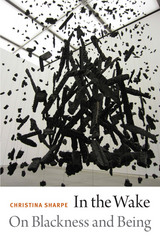 In the Wake: On Blackness and Being
Christina Sharpe
Duke University Press, 2016 In this original and trenchant work, Christina Sharpe interrogates literary, visual, cinematic, and quotidian representations of Black life that comprise what she calls the "orthography of the wake." Activating multiple registers of "wake"—the path behind a ship, keeping watch with the dead, coming to consciousness—Sharpe illustrates how Black lives are swept up and animated by the afterlives of slavery, and she delineates what survives despite such insistent violence and negation. Initiating and describing a theory and method of reading the metaphors and materiality of "the wake," "the ship," "the hold," and "the weather," Sharpe shows how the sign of the slave ship marks and haunts contemporary Black life in the diaspora and how the specter of the hold produces conditions of containment, regulation, and punishment, but also something in excess of them. In the weather, Sharpe situates anti-Blackness and white supremacy as the total climate that produces premature Black death as normative. Formulating the wake and "wake work" as sites of artistic production, resistance, consciousness, and possibility for living in diaspora, In the Wake offers a way forward.
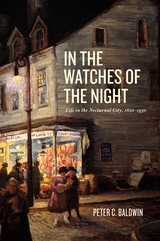 In the Watches of the Night: Life in the Nocturnal City, 1820-1930
Peter C. Baldwin
University of Chicago Press, 2011 Before skyscrapers and streetlights glowed at all hours, American cities fell into inky blackness with each setting of the sun. But over the course of the nineteenth and early twentieth century, new technologies began to light up streets, sidewalks, buildings, and public spaces. Peter C. Baldwin’s evocative book depicts the changing experience of the urban night over this period, visiting a host of actors—scavengers, newsboys, and mashers alike—in the nocturnal city. Baldwin examines work, crime, transportation, and leisure as he moves through the gaslight era, exploring the spread of modern police forces and the emergence of late-night entertainment, to the era of electricity, when social campaigns sought to remove women and children from public areas at night. While many people celebrated the transition from darkness to light as the arrival of twenty-four hours of daytime, Baldwin shows that certain social patterns remained, including the danger of street crime and the skewed gender profile of night work. Sweeping us from concert halls and brothels to streetcars and industrial forges, In the Watches of the Night is an illuminating study of a vital era in American urban history.
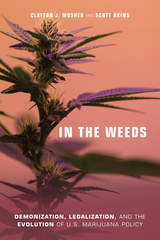 In the Weeds: Demonization, Legalization, and the Evolution of U.S. Marijuana Policy
Clayton J. Mosher and Scott Aikins
Temple University Press, 2019 More and more states are legalizing marijuana in some form. Moreover, a majority of the U.S. population is in favor of the drug for recreational use. In the Weeds looks at how our society has become more permissive in the past 150 years—even though marijuana is still considered a Schedule I drug by the American government. Sociologists Clayton Mosher and Scott Akins take a deep dive into marijuana policy reform, looking at the incremental developments and the historical, legal, social, and political implications of these changes. They investigate the effects, medicinal applications, and possible harms of marijuana. In the Weeds also considers arguments that youth will be heavy users of legalized cannabis, and shows how “weed” is demonized by exaggerations of the drug’s risks and claims of its lack of medicinal value. Mosher and Akins end their timely and insightful book by tracing the distinct paths to the legalization of recreational marijuana in the United States and other countries as well as discussing what the future of marijuana law holds.
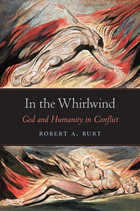 In the Whirlwind: God and Humanity in Conflict
Robert A. Burt
Harvard University Press, 2012 God deserves obedience simply because he’s God—or does he? Inspired by a passion for biblical as well as constitutional scholarship, in this bold exploration Yale Law Professor Robert A. Burt conceptualizes the political theory of the Hebrew and Christian Bibles. God’s authority as expressed in these accounts is not a given. It is no less inherently problematic and in need of justification than the legitimacy of secular government.
In recounting the rich narratives of key biblical figures—from Adam and Eve to Noah, Cain, Abraham, Moses, Job, and Jesus—In the Whirlwind paints a surprising picture of the ambivalent, mutually dependent relationship between God and his peoples. Taking the Hebrew and Christian Bibles as a unified whole, Burt traces God’s relationship with humanity as it evolves from complete harmony at the outset to continual struggle. In almost every case, God insists on unconditional obedience, while humanity withholds submission and holds God accountable for his promises.
Contemporary political theory aims for perfect justice. The Bible, Burt shows, does not make this assumption. Justice in the biblical account is an imperfect process grounded in human—and divine—limitation. Burt suggests that we consider the lessons of this tension as we try to negotiate the power struggles within secular governments, and also the conflicts roiling our public and private lives.
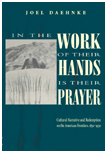 In the Work of Their Hands Is Their Prayer: Cultural Narrative and Redemption on the American Frontiers, 1830-1930
Joel Daehnke
Ohio University Press, 2003 Westward expansion on the North American continent by European settlers generated a flurry of writings on the frontier experience over the course of a hundred years. Asserting that the dominant ideology of America’s Manifest Destiny embodied a tense, often contradictory union of Christian and secular republican views of social progress, In the Work of Their Hands Is Their Prayer investigates the ambivalence of the frontier as it was inscribed with redemptive, historical significance by a host of frontier writers. Enlisting canonical and noncanonical sources, Joel Daehnke examines the manner in which the imagery of the human figure at work and play in the frontier landscape participated in the nationalist, “civilizing” project of westward expansion. While he acknowledges the growing secularization of American life, Professor Daehnke surveys the continuing claims of the Christian redemptive scheme as a powerful symbolic domain for these writers’ meditations on social progress and the potential for human perfectibility in the landscapes of the West. Whether discussing the Edenic imagery of women’s gardens, the advocacy of an ethics of land use, or the affairs of fortune in the mining districts of Nevada, In the Work of Their Hands Is Their Prayer presents an enlightening reexamination of an American ideology of progress and its enduring fascination with mission, Manifest Destiny, and the ends of history. In the Work of Their Hands Is Their Prayer is a welcome addition to the extended library of critical attention to the ideology, history, and literary traditions of the American frontier.
 In the Workshop of History
François Furet
University of Chicago Press, 1985 Those concerned with the practice of history as a discipline and as an intellectual activity will be intrigued by the view of history that François Furet offers in this collection of essays. After twenty-five years as a professional historian at the Ecole des Hautes Etudes and in the ranks of the Annales school, Furet sets out to reexamine the methodological and intellectual cleavages that exist today among historians.
Furet views history as a field bounded at each end by two ideal types. One end is concerned with the history of periods and with the empiricism of "facts" rather than received ideas. At the other end is problem-oriented history, which substitutes for the supposed coherence of a "period" the analytical examination of a question. Furet's own work leans toward the second, more conceptually oriented kind of historiography. The essays in this volume, most of them never before published in English, illustrate the breadth of his approach. Furet's discussion ranges through Tocqueville's conceptual system to present-day America, from the origins of history in France to the Jewish experience in the late twentieth century. Among Furet's recurrent themes is the contention that the historian constructs the object or field of his research rather than receiving it from the past.
In the Zone: The Twilight World of Rod Serling
Peter Wolfe
University of Wisconsin Press, 1997 The classic television show The Twilight Zone explored the possibilities inhering in the ordinary. A Twilight Zone episode moved us by being poignant and intimate, rambunctious or thought provoking. But whether it takes place on an asteroid, in a city pool room, or in the backwoods, it will usually convey both a folklorist’s eye for detail and the born raconteur’s sense of pace. Rod Serling, the show’s originator, main scriptwriter, and artistic director, knew how much burden he could place on his rhetorical and dramatic gifts. Deservedly celebrated as a pioneer fiction writer for television, Serling always grounded his work in the human condition: he wrote movingly about history and loyalty, the grip of everyday reality, and the dangers of both forgetting about one’s ghosts and giving them the upper hand.
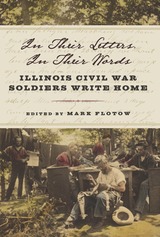 In Their Letters, in Their Words: Illinois Civil War Soldiers Write Home
Edited by Mark Flotow
Southern Illinois University Press, 2019 WINNER, Russell P. Strange Memorial Book of the Year Award from the Illinois State Historical Society, 2020!
A vital lifeline to home during the Civil War, the letters of soldiers to their families and friends remain a treasure for those seeking to connect with and understand the most turbulent period of American history. Rather than focus on the experiences of a few witnesses, this impressively researched book documents 165 Illinois Civil War soldiers’ and sailors’ lives through the lens of their personal letters. Editor Mark Flotow chose a variety of letter writers who hailed from counties throughout the state, served in different branches of the military at different ranks, and represented the gamut of social experiences and war outcomes.
Flotow provides extensive quotations from the letters. By allowing the soldiers to speak for themselves, he captures what mattered most to them. Illinois soldiers wrote about their reasons for enlisting; the nature of training and duties; necessities like eating, sleeping, marching, and making the best of often harsh and chaotic circumstances; Southern culture; slavery; their opinions of commanding officers and the president; disease, medicine, and hospitals; their prisoner-of-war experiences; and the ways they left the army. Through letters from afar, many soldiers sought to manage their homes and farms, while some single men attempted to woo their sweethearts.
Flotow includes brief biographies for each soldier quoted in the book, weaves historical context and analysis with the letters, and organizes them by topic. Thus, intimate details cited in individual letters reveal their significance for those who lived and shaped this tumultuous era. The result is not only insightful history but also compelling reading.
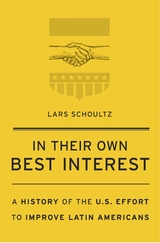 In Their Own Best Interest: A History of the U.S. Effort to Improve Latin Americans
Lars Schoultz
Harvard University Press, 2020 Winner of the William M. LeoGrande Prize
For over a century, the United States has sought to improve the behavior of the peoples of Latin America. Perceiving their neighbors to the south as underdeveloped and unable to govern themselves, U.S. policy makers have promoted everything from representative democracy and economic development to oral hygiene. But is improvement a progressive impulse to help others, or realpolitik in pursuit of a superpower’s interests?
“In this subtle and searing critique of U.S. efforts to ‘uplift’ Latin America, Lars Schoultz challenges us to question the fundamental tenets of the development industry that became entrenched in the U.S. foreign policy bureaucracy over the last century.”
—Piero Gleijeses, author of Visions of Freedom
“In this masterful work, Lars Schoultz provides a companion and follow-up to his classic Beneath the United States…A necessary and rewarding read for scholars and students of U.S. foreign policy and inter-American relations.”
—Renata Keller, The Americas
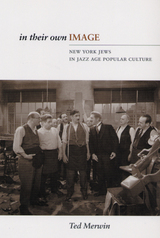 In Their Own Image: New York Jews in Jazz Age Popular Culture
Merwin, Ted
Rutgers University Press, 2006 The Jazz Age of the 1920s is an era remembered for illegal liquor, innovative music and dance styles, and burgeoning ideas of social equality. It was also the period during which second-generation Jews began to emerge as a significant demographic in New York City. In TheirOwn Image examines thegrowing cultural visibility of Jewish life amid this vibrant scene. From the vaudeville routines of Fanny Brice, Eddie Cantor, George Jessel, and Sophie Tucker, to the slew of Broadway comedies about Jewish life and the silent films that showed immigrant families struggling to leave the ghetto, images and representations of Jews became staples of interwar popular culture. Through the performing arts, Jews expressed highly ambivalent feelings about their identification with Jewish and American cultures. Ted Merwin shows how they became American by producing and consuming not images of another group, but images of themselves. As a result, they humanized Jewish stereotypes, softened anti-Semitic attitudes, and laid the groundwork for today’s Jewish comedians. An entertaining look at the role popular culture plays in promoting the acculturation of an ethnic group, In Their Own Image enhances our understanding of American Jewish history and provides a model for the study of other groups and their integration into mainstream society.
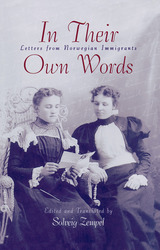 In Their Own Words: Letters from Norwegian Immigrants
Solveig. Zempel
University of Minnesota Press, 1991 For most Norwegians in the nineteenth century, America was a remote and exotic place until the first immigrants began to write home. Their letters were among the most valuable, accessible, and reliable sources of information about the new world and the journey to it. For many immigrants, writing letters home was their most cherished opportunity to communicate their thoughts and feelings in their native language.
Through vivid translations of letters written to family and friends between 1870 and 1945, In Their Own Words traces the stories of nine Norwegian immigrants: farmer, fisherman, gold miner, politician, unmarried mother, housewife, businessman, railroad worker, contractor. Their common bond was the experience of immigration and acculturation, but their individual experiences were manifested in a wide variety of forms.
Solveig Zempel has thoughtfully selected and translated letters rich in personal description and observation to present each writer's subjective view of historical events. Often focusing on the minutiae of daily life and the feelings of the individual immigrant, the letters form a complex, intimate, and colorful mosaic of the immigrant world.
"Zempel has done us a service by choosing letters that are, first of all, of interest in themselves and, second, that must make us think again about the broad brush with which we habitually paint immigrant life." Scandinavian Studies
"Zempel's letters cover a wide range of experiences from 1870 to 1945. In letters to family friends, nine immigrants ranging from a teacher to a railroad worker, an unmarried mother to a politician, recounted their experiences of immigration and community-building during a period of mass migration to this country. The letter writers corresponded from various regions, from both cities and farms about their successes in America; about such mundane matters as the weather, neighbors, and food; about their desire for Ibsen's new book or a visit home for Christmas. Such letters provide invaluable documentation of everyday life." The Annals of Iowa
"Zempel has performed a valuable service for students of American immigration history. This is an eminently readable, entertaining and excellent book. Zempel uses the letters of nine Norwegian immigrants found in archives from St. Paul, Minnesota to Stavanger, Bergen, and Kristiansand, Norway, to superbly depict not only their singular experiences of living, working, marrying, and raising a family but to also convey their sadness, loneliness, joy and hope." Journal of the West
"The variety and scope of the letters from America to Norway make for fascinating reading; they also provide informative insights into the minds and thoughts of new settlers on American soil. The reader will come away from this volume with a deepened awareness of the importance of 'America letters' in understanding the American experience. Readers will feel close to these writers, engaged as they are in private communications with family members and friends they left behind in the homeland." MELUS
"The variety of occupations, backgrounds, and experiences described in the letters make the book a valuable contribution to the understanding of the Norwegian immigrant experience. The thread that weaves all of the letters together is the reaction of each immigrant to his or her new environment." Journal of American Ethnic History
"These carefully selected letters are bountiful, alive, and touch upon historical events as well as the humdrum experiences of daily life. The insight gained from the accounts reveals valuable information about the new world." School Library Journal
Solveig Zempel is chair of the Norwegian Department at St. Olaf College in Northfield, Minnesota
 In Theory and in Practice: Harvard’s Center for International Affairs, 1958–1983
David C. Atkinson
Harvard University Press, 2007 Harvard University inaugurated a new research center devoted to international relations in 1958. The Center for International Affairs (CFIA) was founded by State Department Director of Policy Planning Staff, Robert R. Bowie, at the invitation of McGeorge Bundy, Dean of the Faculty of Arts and Sciences. Joined by Henry A. Kissinger, Edward S. Mason, and Thomas C. Schelling, Bowie quickly established the CFIA as a hub for studying international affairs in the United States. CFIA affiliates produced seminal work on arms control theory, development and modernization theory, and transatlantic relations.
Digging deep into unpublished material in the Harvard, MIT, and Kennedy Library archives, this book is punctuated with personal interviews with influential CFIA affiliates. David Atkinson describes the relationship between foreign policy and scholarship during the Cold War and documents the maturation of a remarkable academic institution. Atkinson’s history of the Center’s first twenty-five years traces the institutional and intellectual development of a research center that, fifty years later, continues to facilitate innovative scholarship. He explores the connection between knowledge and politics, beginning with the Center’s confident first decade and concluding with the second decade, which found the CFIA embroiled in Vietnam-era student protests.
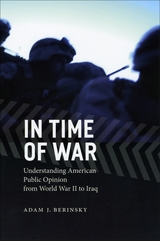 In Time of War: Understanding American Public Opinion from World War II to Iraq
Adam J. Berinsky
University of Chicago Press, 2009 From World War II to the war in Iraq, periods of international conflict seem like unique moments in U.S. political history—but when it comes to public opinion, they are not. To make this groundbreaking revelation, In Time of War explodes conventional wisdom about American reactions to World War II, as well as the more recent conflicts in Korea, Vietnam, the Gulf, Afghanistan, and Iraq. Adam Berinsky argues that public response to these crises has been shaped less by their defining characteristics—such as what they cost in lives and resources—than by the same political interests and group affiliations that influence our ideas about domestic issues. With the help of World War II–era survey data that had gone virtually untouched for the past sixty years, Berinsky begins by disproving the myth of “the good war” that Americans all fell in line to support after the Japanese bombed Pearl Harbor. The attack, he reveals, did not significantly alter public opinion but merely punctuated interventionist sentiment that had already risen in response to the ways that political leaders at home had framed the fighting abroad. Weaving his findings into the first general theory of the factors that shape American wartime opinion, Berinsky also sheds new light on our reactions to other crises. He shows, for example, that our attitudes toward restricted civil liberties during Vietnam and after 9/11 stemmed from the same kinds of judgments we make during times of peace. With Iraq and Afghanistan now competing for attention with urgent issues within the United States, In Time of War offers a timely reminder of the full extent to which foreign and domestic politics profoundly influence—and ultimately illuminate—each other.
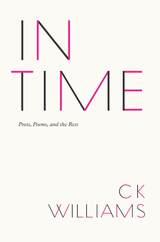 In Time: Poets, Poems, and the Rest
C. K. Williams
University of Chicago Press, 2012 Winner of the National Book Award, the Pulitzer Prize for Poetry, and numerous other awards, C. K. Williams is one of the most distinguished poets of his generation. Known for the variety of his subject matter and the expressive intensity of his verse, he has written on topics as resonant as war, social injustice, love, family, sex, death, depression, and intellectual despair and delight. He is also a gifted essayist, and In Time collects his best recent prose along with an illuminating series of interview excerpts in which he discusses a wide range of subjects, from his own work as a poet and translator to the current state of American poetry as a whole. In Time begins with six essays that meditate on poetic subjects, from reflections on such forebears as Philip Larkin and Robert Lowell to “A Letter to a Workshop,” in which he considers the work of composing a poem. In the book’s innovative middle section, Williams extracts short essays from interviews into an alphabetized series of reflections on subjects ranging from poetry and politics to personal accounts of his own struggles as an artist. The seven essays of the final section branch into more public concerns, including an essay on Paris as a place of inspiration, “Letter to a German Friend,” which addresses the issue of national guilt, and a concluding essay on aging, into which Williams incorporates three moving new poems. Written in his lucid, powerful, and accessible prose, Williams’s essays are characterized by reasoned and complex judgments and a willingness to confront hard moral questions in both art and politics. Wide-ranging and deeply thoughtful, In Time is the culmination of a lifetime of reading and writing by a man whose work has made a substantial contribution to contemporary American poetry.
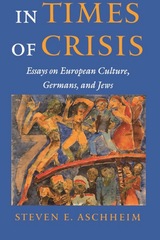 In Times of Crisis: Essays on European Culture, Germans, and Jews
Steven E. Aschheim
University of Wisconsin Press, 2001 The nineteenth- and twentieth-century relationship between European culture, German history, and the Jewish experience produced some of the West’s most powerful and enduring intellectual creations—and, perhaps in subtly paradoxical and interrelated ways, our century’s darkest genocidal moments. In Times of Crisis explores the flashpoints of this vexed relationship, mapping the coordinates of a complex triangular encounter of immense historical import.
In essays that range from the question of Nietzsche’s legacy to the controversy over Daniel Goldhagen’s Hitler’s Willing Executioners, the distinguished historian Steven E. Aschheim presents this encounter as an ongoing dialogue between two evolving cultural identities. He touches on past dimensions of this exchange (such as the politics of Weimar Germany) and on present dilemmas of grasping and representing it (such as the Israeli discourse on the Holocaust). His work inevitably traces the roots and ramifications of Nazism but at the same time brings into focus historical circumstances and contemporary issues often overshadowed or distorted by the Holocaust.
These essays reveal the ubiquitous charged inscriptions of Nazi genocide within our own culture and illuminate the projects of some later thinkers and historians—from Hannah Arendt to George Mosse to Saul Friedlander—who have wrestled with its problematics and sought to capture its essence. From the broadly historical to the personal, from the politics of Weimar Germany to the experience of growing up German Jewish in South Africa, the essays expand our understanding of German Jewish history in particular, but also of historical processes in general.
In Touch: Encounters between Art and Research
Hans-Jörg Rheinberger
Diaphanes, 2026 Considers the work of seven artists through the framework of art as research.
The entanglements between science and art have always been multiple, even if they are not always readily noticeable. In this volume, historian and philosopher of science Hans-Jörg Rheinberger reflects on the work of seven different artists, apprehending artworks not as art-historical exegeses, but rather ongoing research processes with their own character and specificities, more akin to scientific experimentation.
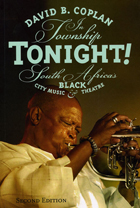 In Township Tonight!: South Africa's Black City Music and Theatre, Second Edition
David B. Coplan
University of Chicago Press, 2008 David B. Coplan’s pioneering social history of black South Africa’s urban music, dance, and theatre established itself as a classic soon after its publication in 1985. As the first substantial history of black performing arts in South Africa, In Township Tonight! was championed by a broad range of scholars and treasured by fans of South African music. Now completely revised, expanded, and updated, this new edition takes account of developments over the last thirty years while reflecting on the massive changes in South African politics and society since the end of the apartheid era.
In vivid detail, Coplan comprehensively explores more than three centuries of the diverse history of South Africa’s black popular culture, taking readers from indigenous musical traditions into the world of slave orchestras, pennywhistlers, clergyman-composers, the gumboot dances of mineworkers, and touring minstrelsy and vaudeville acts. This up-to-date edition of a landmark work will be welcomed by scholars of ethnomusicology and African studies, world music fans, and anyone concerned with South Africa and its development.
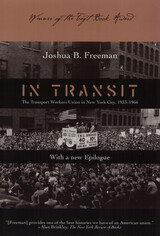 In Transit: Transport Workers Union In Nyc 1933-66
Joshua Freeman
Temple University Press, 2001 This history of New York transit workers from the Great Depression to the monumental 1966 transit strike shows how, through collective action, the men and women who operated the world's largest transit system brought about a virtual revolution in their daily lives. Joshua Freeman's detailed descriptions of both transit work and transit workers, and his full account of the formation and development of the Transport Workers Union provide new insight into the nature of modern industrial unionism. Freeman pays particular attention to the role of Communists and veterans of the Irish Republican Army—including TWU president Michael J. Quill—in organizing and leading the union, as well as to the Catholic labor activists who were the principal union dissidents. Freeman also explores the intense political struggles over the New York transit system. He links the TWU's pioneering role in public sector unionism to worker militancy and the union's deep involvement in New York politics. His portrait of Fiorello La Guardia's determined opposition to the TWU belies La Guardia's pro-labor reputation. By combining social and political history with the study of collective bargaining, In Transit makes a major contribution to the history of American labor, radicalism, and urban politics. Now with a new epilogue that frames the history of the union in the context of labor’s revival and recent changes in TWU’s leadership, In Transit is an intimate portrait of the politics of mass transit and public sector unionism, and one of the most detailed reconstructions to date of the social processes of industrial unionism. This book will appeal to anyone interested in New York City's subways, politics, history, and labor.
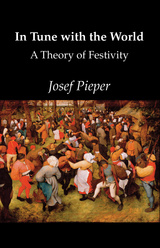 In Tune With The World
Josef Pieper
St. Augustine's Press, 1999 In this stimulating and still-timely study, Josef Pieper takes up a theme of paramount importance to his thinking – that festivals belong by rights among the great topics of philosophical discussion. As he develops his theory of festivity, the modern age comes under close and painful scrutiny. It is obvious that we no longer know what festivity is, namely, the celebration of existence under various symbols Pieper exposes the pseudo-festivals, in their harmless and their sinister forms: traditional feasts contaminated by commercialism; artificial holidays created in the interest of merchandisers; holidays by coercion, decreed by dictators the world over; festivals as military demonstrations; holidays empty of significance. And lastly we are given the apocalyptic vision of a nihilistic world which would seek its release not in festivities but in destruction. Formulated with Pieper's customary clarity and elegance, enhanced by brilliantly chosen quotations, this is an illuminating contribution to the understanding of traditional and contemporary experience.
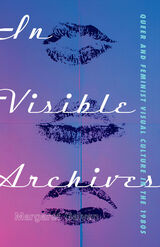 In Visible Archives: Queer and Feminist Visual Culture in the 1980s
Margaret Galvan
University of Minnesota Press, 2023 Analyzing how 1980s visual culture provided a vital space for women artists to theorize and visualize their own bodies and sexualities
In 1982, the protests of antiporn feminists sparked the censorship of the Diary of a Conference on Sexuality, a radical and sexually evocative image-text volume whose silencing became a symbol for the irresolvable feminist sex wars. In Visible Archives documents the community networks that produced this resonant artifact and others, analyzing how visual culture provided a vital space for women artists to theorize and visualize their own bodies and sexualities. Margaret Galvan explores a number of feminist and cultural touchstones—the feminist sex wars, the HIV/AIDS crisis, the women in print movement, and countercultural grassroots periodical networks—and examines how visual culture interacts with these pivotal moments. She goes deep into the records to bring together a decade’s worth of research in grassroots and university archives that include comics, collages, photographs, drawings, and other image-text media produced by women, including Hannah Alderfer, Beth Jaker, Marybeth Nelson, Roberta Gregory, Lee Marrs, Alison Bechdel, Gloria Anzaldúa, and Nan Goldin. The art highlighted in In Visible Archives demonstrates how women represented their bodies and sexualities on their own terms and created visibility for new, diverse identities, thus serving as blueprints for future activism and advocacy—work that is urgent now more than ever as LGBTQ+ and women’s rights face challenges and restrictions across the nation.
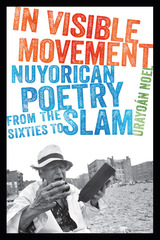 In Visible Movement: Nuyorican Poetry from the Sixties to Slam
Urayoan Noel
University of Iowa Press, 2014 Since the 1960s, Nuyorican poets have explored and performed Puerto Rican identity both on and off the page. Emerging within and alongside the civil rights movements of the 1960s, the foundational Nuyorican writers sought to counter the ethnic/racial and institutional invisibility of New York City Puerto Ricans by documenting the reality of their communities in innovative and sometimes challenging ways. Since then, Nuyorican poetry has entered the U.S. Latino literary canon and has gained prominence in light of the spoken-word revival of the past two decades, a movement spearheaded by the Nuyorican Poetry Slams of the 1990s. Today, Nuyorican poetry engages with contemporary social issues such as the commodification of the body, the institutionalization of poetry, the gentrification of the barrio, and the national and global marketing of identity. What has not changed is a continued shared investment in a poetics that links the written word and the performing body.
The first book-length study specifically devoted to Nuyorican poetry, In Visible Movement is unique in its historical and formal breadth, ranging from the foundational poets of the 1960s and 1970s to a variety of contemporary poets emerging in and around the Nuyorican Poets Cafe “slam” scene of the 1990s and early 2000s. It also unearths a largely unknown corpus of poetry performances, reading over forty years of Nuyorican poetry at the intersection of the printed and performed word, underscoring the poetry’s links to vernacular and Afro-Puerto Rican performance cultures, from the island’s oral poets to the New York sounds and rhythms of Latin boogaloo, salsa, and hip-hop. With depth and insight, Urayoán Noel analyzes various canonical Nuyorican poems by poets such as Pedro Pietri, Victor Hernández Cruz, Miguel Algarín, Miguel Piñero, Sandra María Esteves, and Tato Laviera. He discusses historically overlooked poets such as Lorraine Sutton, innovative poets typically read outside the Nuyorican tradition such as Frank Lima and Edwin Torres, and a younger generation of Nuyorican-identified poets including Willie Perdomo, María Teresa Mariposa Fernández, and Emanuel Xavier, whose work has received only limited critical consideration. The result is a stunning reflection of how New York Puerto Rican poets have addressed the complexity of identity amid diaspora for over forty years.
 In Visible Touch: Modernism and Masculinity
Edited by Terry Smith
University of Chicago Press, 1997 In this collection, outstanding historians and theorists explore the representation of heterosexual masculinity embodied in modernist art.
Examining such major European modernists as Cézanne, Caillebotte, Matisse, Wyndham Lewis, and Boccioni, these writings offer a history of how artists sought to shape their sexuality in their work. In turn, the essays also show how the artists were shaped by the historical shifts in the gender order and by the exchanges between sexualities occurring in their social worlds. For example, the piece on Wyndham Lewis shows how he subscribed to an exaggerated masculinism, while the essays on Boccioni and Matisse bring out the efforts by these men to understand feminine sexuality.
In the theoretical essays, Bernard Smith questions modernism itself as a style category. And Richard Shiff and W.J.T. Mitchell trace the consequences for art theory of recognizing the physical presence of modernist artworks and the agency of imagery in our encounter with contemporary art.
In War's Dark Shadow: The Russians before the Great War
W. Bruce Lincoln
Northern Illinois University Press, 2003
In the quarter century before World War I, change came to Russia at a dizzying pace. The industrial revolution, the building of the Trans-Siberian Railroad, the disastrous Russo-Japanese War, and the Revolution of 1905 drastically reshaped the lives of both the ruling classes and ordinary people. Imperial Russia was home to more than a hundred million men and women, but by the time Vladimir Lenin announced the Bolsheviks' revolutionary victory, one in three had either perished or fled in exile.
In War's Dark Shadow explores the lives, thoughts, and hopes of the Russian people as they entered the twentieth century.
In Whose Eyes: The Memoir of a Vietnamese Filmmaker in War and Peace
Tran Van Thuy
University of Massachusetts Press, 2016 Tran Van Thuy is a celebrated Vietnamese filmmaker of more than twenty award-winning documentaries. A cameraman for the People's Army of Vietnam during the Vietnam War, he went on to achieve international fame as the director of films that address the human costs of the war and its aftermath.
Thuy's memoir, when published in Vietnam in 2013, immediately sold out. In this translation, English-language readers are now able to learn in rich detail about the life and work of this preeminent artist. Written in a gentle and charming style, the memoir is filled with reflections on war, peace, history, freedom of expression, and filmmaking. Thuy also offers a firsthand account of the war in Vietnam and its aftermath from a Vietnamese perspective, adding a dimension rarely encountered in English-language literature.
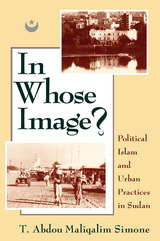 In Whose Image?: Political Islam and Urban Practices in Sudan
T. Abdou Maliqalim Simone
University of Chicago Press, 1994 A Muslim scholar with extensive experience in Africa, T. Abdou Maliqalim Simone was recruited by the Islamic fundamentalist Shari‘a Movement in Sudan to act as consultant for its project to unite Muslims and non-Muslims in Khartoum's shanty towns. Based on his interviews with hundreds of individuals during this time, plus extensive historical and archival research, In Whose Image? is a penetrating examination of the use of Islam as a tool for political transformation.
Drawing a detailed portrait of political fundamentalism during the 1985-89 period of democratic rule in the Sudan, Simone shows how the Shari‘a Movement attempted to shape a viable social order by linking religious integrity and economic development, where religious practice was to dominate all aspects of society and individuals' daily lives. However, because Sudanese society is remarkably diverse ethnically and religiously, this often led to conflict, fragmentation, and violence in the name of Islam.
Simone's own Islamic background leads him to deplore the violence and the devastating psychological, economic, and cultural consequences of one form of Islamic radicalism, while holding to hope that a viable form of this inherently political religion can in fact be applied. As a counterpoint, he ends with a discussion of South Africa's Call of Islam, which seeks political unity through a more tolerant interpretation of Islam.
As an introduction to religious discourse in Africa, this book will be widely read by students and scholars throughout African Studies, Religious Studies, Anthropology, and Political Science.
In Wild Trust: Larry Aumiller's Thirty Years Among the McNeil River Brown Bears
Jeff Fair
University of Alaska Press, 2017 For thirty years, Larry Aumiller lived in close company with the world’s largest grouping of brown bears, returning by seaplane every spring to the wilderness side of Cook Inlet, two hundred and fifty miles southwest of Anchorage to work as a manager, teacher, guide, and more. Eventually—without the benefit of formal training in wildlife management or ecology—he become one of the world’s leading experts on brown bears, the product of an unprecedented experiment in peaceful coexistence.
This book celebrates Aumiller’s achievement, telling the story of his decades with the bears alongside his own remarkable photographs. As both professional wildlife managers and ordinary citizens alike continue to struggle to bridge the gap between humans and the wild creatures we’ve driven out, In Wild Trust is an inspiring account of what we can achieve.
The Inability to Love: Jews, Gender, and America in Recent German Literature
Agnes C. Mueller
Northwestern University Press, 2014 The Inability to Love borrows its title from Alexander and Margarete Mitscherlich’s 1967 landmark book The Inability to Mourn, which discussed German society’s lack of psychological reckoning with the Holocaust. Challenging that notion, Agnes Mueller turns to recently published works by prominent contemporary German, non-Jewish writers to examine whether there has been a thorough engagement with German history and memory. She focuses on literature that invokes Jews, Israel, and the Holocaust. Mueller’s aim is to shed light on pressing questions concerning German memories of the past, and on German images of Jews in Germany at a moment that s ideologically and historically fraught.
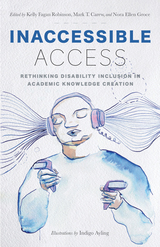 Inaccessible Access: Rethinking Disability Inclusion in Academic Knowledge Creation
Kelly Fagan Robinson
Rutgers University Press, 2025 Inaccessible Access ethnographically addresses barriers to inclusion within knowledge-making. It focuses on the social, environmental, communicative, and epistemological barriers that people with disabilities confront and embody throughout the course of their learning and living and in the specific context of their higher education institutions and in research. It is presented by a neurodiverse, disabled, and non-cis cohort of authors, all of whom acknowledge a continuum of (in)access that is available to each contributor contingent on their inherent intersectionalities and alterities. The authors and editors of this book foreground the work that has yet to be done on recognizing the value of nonnormative ways of approaching, being in, and knowing research and higher education, particularly in cases where disablity-centered epistemologies are sidelined in confrontation with institutional norms, even within existing discourses concerning equality and alterity.
 In-action: Viennese Actionism and the Passivities of Performance Art
Caroline Lillian Schopp
University of Chicago Press, 2025 A novel approach to performance art and its history that revisits Viennese Actionism, one of the most controversial episodes of the 1960s.
Viennese Actionism represents a notorious case within art history, often cited but little studied, especially in the United States. By carefully looking at the unsettling performances that define this movement, Caroline Lillian Schopp offers a vital corrective to the narrative. Schopp observes that contrary to the reception of their graphic violence, many performances explore passivity, vulnerability, and dependence in gestures of “in-action.” Viennese Actionism registers hesitations about the liberatory ethos of the 1960s, amplified by Austria’s marginalized postwar social and artistic culture. In dialogue with feminist theory, In-action assembles a vocabulary for performance art without the standards of self-assertion, emancipation, and expressive action that continue to inform how art and politics are understood today.
Decentering the traditional focus on the male protagonists of Viennese Actionism—Günter Brus, Otto Muehl, Hermann Nitsch, and Rudolf Schwarzkogler—Schopp draws attention to women who performed with them, including Anna Brus, Hanel Koeck, and Ingrid Wiener. Doing so brings into view how these performances scrutinize intimate relationships like marriages, partnerships, and friendships, as well as the conventions of traditional artistic media such as painting and tapestry.
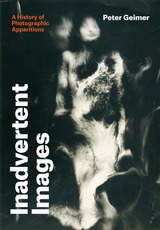 Inadvertent Images: A History of Photographic Apparitions
Peter Geimer
University of Chicago Press, 2018 As an artistic medium, photography is uniquely subject to accidents, or disruptions, that can occur in the making of an artwork. Though rarely considered seriously, those accidents can offer fascinating insights about the nature of the medium and how it works. With Inadvertent Images, Peter Geimer explores all kinds of photographic irritation from throughout the history of the medium, as well as accidental images that occur through photo-like means, such as the image of Christ on the Shroud of Turin, brought into high resolution through photography. Geimer’s investigations complement the history of photographic images by cataloging a corresponding history of their symptoms, their precarious visibility, and the disruptions threatened by image noise. Interwoven with the familiar history of photography is a secret history of photographic artifacts, spots, and hazes that historians have typically dismissed as “spurious phenomena,” “parasites,” or “enemies of the photographer.” With such photographs, it is virtually impossible to tell where a “picture” has been disrupted—where the representation ends and the image noise begins. We must, Geimer argues, seek to keep both in sight: the technical making and the necessary unpredictability of what is made, the intentional and the accidental aspects, representation and its potential disruption.
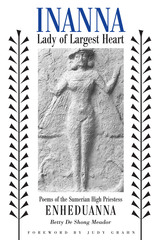 Inanna, Lady of Largest Heart: Poems of the Sumerian High Priestess Enheduanna
By Betty De Shong Meador
University of Texas Press, 2001 That these poems deal immediately with the very popular 'goddess literature' and with an individual woman in a most important historical situation should give this work widespread appeal.-John Maier, SUNY College at Brockport, cotranslator of the Epic of GilgameshThe earliest known author of written literature was a woman named Enheduanna, who lived in ancient Mesopotamia around 2300 BCE. High Priestess to the moon god Nanna, Enheduanna came to venerate the goddess Inanna above all gods in the Sumerian pantheon. The hymns she wrote to Inanna constitute the earliest written portrayal of an ancient goddess. In their celebration of Enheduanna's relationship with Inanna, they also represent the first existing account of an individual's consciousness of her inner life. This book provides the complete texts of Enheduanna's hymns to Inanna, skillfully and beautifully rendered by Betty De Shong Meador, who also discusses how the poems reflect Enheduanna's own spiritual and psychological liberation from being an obedient daughter in the shadow of her ruler father. Meador frames the poems with background information on the religious and cultural systems of ancient Mesopotamia and the known facts of Enheduanna's life. With this information, she explores the role of Inanna as the archetypal feminine, the first goddess who encompasses both the celestial and the earthly and shows forth the full scope of women's potential.
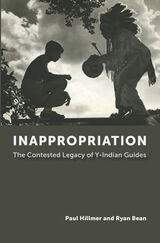 Inappropriation: The Contested Legacy of Y-Indian Guides
Paul Hillmer
University of Missouri Press, 2023 In 1926, Harold Keltner, a YMCA Boys Work secretary from St. Louis, and Joe Friday, a member of the Canadian Ojibwe First Peoples, channeled white middle-class fascination with Native Americans into what became the Y-Indian Guides youth program, engaging over a half million participants across the nation at the height of its 77-year history. Intended to soften the stereotypical stern father, the program traced a complicated thread of American history, touching upon themes of family, race, class, and privilege.
The Y-Indian Guides was a father-son (and later parent-child) program that encouraged real and enduring bonds through play and an authentic appreciation of family. While “playing Indian” seemed harmless to most participants during the program’s heyday, Paul Hillmer and Ryan Bean demonstrate the problematic nature of its methods. In the process of seeking to admire and emulate Indigenous Peoples, Y-Indian Guide participants often misrepresented American Indians and reinforced harmful stereotypes. Ultimately, this history demonstrates many ways in which American culture undermines and harms its Indigenous communities.
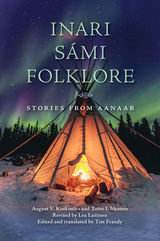 Inari Sámi Folklore: Stories from Aanaar
August V. Koskimies and Toivo I. Itkonen, revised by Lea Laitinen; Edited and translated by Tim Frandy
University of Wisconsin Press, 2020 A rich multivoiced anthology of folktales, legends, joik songs, proverbs, riddles, and other verbal art, this is the most comprehensive collection of Sámi oral tradition available in English to date. Collected by August V. Koskimies and Toivo I. Itkonen in the 1880s from nearly two dozen storytellers from the arctic Aanaar (Inari) region of northeast Finland, the material reveals a complex web of social relations that existed both inside and far beyond the community.
First published in 1918 only in the Aanaar Sámi language and in Finnish, this anthology is now available in a centennial English-language edition for a global readership. Translator Tim Frandy has added biographies of the storytellers, maps and period photos, annotations, and a glossary. In headnotes that contextualize the stories, he explains such underlying themes as Aanaar conflicts with neighboring Sámi and Finnish communities, the collapse of the wild reindeer populations less than a century before, and the pre-Christian past in Aanaar. He introduces us to the bawdy humor of Antti Kitti, the didacticism of Iisakki Mannermaa, and the feminist leanings of Juho Petteri Lusmaniemi, emphasizing that folktales and proverbs are rooted in the experiences of individuals who are links in a living tradition.
 Inaugural Wounds: The Shaping of Desire in Five Nineteenth-Century English Narratives
Robert E. Lougy
Ohio University Press, 2004 Desire, Jacques Lacan suggests, is a condition or expression of our wounded nature. But because such desire is also unconscious, it can be expressed only indirectly, for what we consciously desire is hardly ever what we really want. Desire makes itself known, but disguises its presence—appearing, for example, in unconscious but repetitive, and sometimes even self-destructive, patterns of behavior. Informed by the voices of Freud and Lacan regarding the nature of language and desire, Inaugural Wounds examines the ways in which five major nineteenth-century English writers explored the trajectories and shapes of desire. Arguing that we need to give to novels the same kind of close scrutiny we give to poetry, author Robert Lougy suggests that when we do so, we discover that they often astound us by the resonance and range of their language, as well as by their ability to take us to strange and haunting places. The five narratives examined—Charles Dickens’s Martin Chuzzlewit, William Thackeray’s Journey from Cornhill to Grand Cairo, Elizabeth Gaskell’s Ruth, Wilkie Collins’s The Woman in White, and Thomas Hardy’s Jude the Obscure—testify to the mysterious origins of desire. Although each of the novels tells its own story in its own way, they share a fascination with the nature of desire itself. Drawing upon recent work that has challenged historicist approaches toward nineteenth-century British literature, Professor Lougy uses the insights of psychoanalysis to enable us to more fully appreciate the depth and power of these novels. Of great value to Victorian and psychoanalytic scholars, Inaugural Wounds will be useful for teaching undergraduates as well.
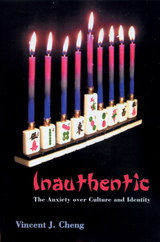 Inauthentic: The Anxiety over Culture and Identity
Vincent J. Cheng
Rutgers University Press, 2004 Modern and contemporary cultures are increasingly marked by an anxiety over a perceived loss of authentic cultural identity. In this book, Vincent J. Cheng examines why we still cling to notions of authenticity in an increasingly globalized world that has exploded notions of authentic essences and absolute differences.
Who is “authentic” and who is “other” in a given culture? Who can speak for the “other?” What do we mean by authenticity? These are critical questions that today’s world––brought closer together and yet pulled farther apart by globalism and neocolonialism––has been unable to answer. Inauthentic compellingly probes these issues through revealing case studies on the pursuit of authenticity and identity.
Each chapter explores the ways in which we construct “authenticity” in order to replace seemingly vacated identities, including: the place of minorities in academia; mixed-race dynamics; the popularity of Irish culture in America; the Good Friday agreement in Northern Ireland; Jewish American identity; the status of Jewish America in relation to Israel and Palestine; the cultural problems of international adoptions; and the rapidly changing nature of the Asian American population in the United States.
Inauthentic combines the scholarly and the personal, informed argument and human interest. It will undoubtedly appeal to academic scholars, as well as to a broader reading audience.
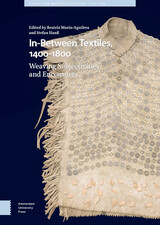 In-Between Textiles, 1400-1800: Weaving Subjectivities and Encounters
Beatriz Marín-Aguilera
Amsterdam University Press, 2023 In-Between Textiles is a decentred study of how textiles shaped, disrupted, and transformed subjectivities in the age of the first globalisation. The volume presents a radically cross-disciplinary approach that brings together world-leading anthropologists, archaeologists, art historians, conservators, curators, historians, scientists, and weavers to reflect on the power of textiles to reshape increasingly contested identities on a global scale between 1400 and 1800. Contributors posit the concept of “in-between textiles,” building upon Homi Bhabha’s notion of in-betweenness as the actual material ground of the negotiation of cultural practices and meanings; a site identified as the battleground over strategies of selfhood and the production of identity signs troubled by colonialism and consumerism across the world. In-Between Textiles establishes cutting-edge conversations between textile studies, critical cultural theory, and material culture studies to examine how textiles created and challenged experiences of subjectivity, relatedness, and dis/location that transformed social fabrics around the globe.
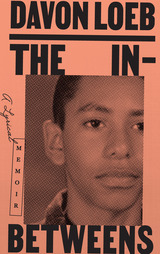 The In-Betweens: A Lyrical Memoir
Davon Loeb
West Virginia University Press, 2023 “Utterly captivating and resonant.” —Chicago Review of Books
“Gorgeously told.” —Philadelphia Inquirer
“Resonant. . . . Engagingly delivered, candid reflections on heritage and identity.” —Kirkus Reviews
The In-Betweens tells the story of a biracial boy becoming a man, all the while trying to find himself, trying to come to terms with his white family, and trying to find his place in American society. A rich narrative in the tradition of Justin Torres’s We the Animals and Bryan Washington’s Memorial, Davon Loeb’s memoir is relevant to the country’s current climate and is part of the necessary rewrite of the nation’s narrative and identity. The son of a Black mother with deep family roots in Alabama and a white Jewish man from Long Island, Loeb grows up in a Black family in the Pine Barrens of New Jersey as one of the few nonwhite children in their suburban neighborhood. Despite his many and ongoing efforts to fit in, Loeb acutely feels his difference—he is singled out in class during Black History Month; his hair doesn’t conform to the latest fad; coaches and peers assume he is a talented athlete and dancer; and on the field trip to the Holocaust Museum, he is the Black Jew. But all is not struggle. In lyrical vignettes, Loeb vibrantly depicts the freedom, joys, and wonder of childhood; the awkwardness of teen years, first jobs, first passions. Loeb tells an individual story universally, and readers, regardless of subjectivity and relation, will see themselves throughout The In-Betweens.
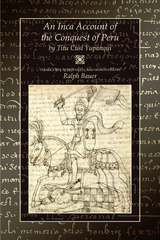 An Inca Account of the Conquest of Peru
Titu Cusi Yupanqui
University Press of Colorado, 2005 Available in English for the first time, An Inca Account of the Conquest of Peru is a firsthand account of the Spanish invasion, narrated in 1570 by Diego de Castro Titu Cusi Yupanqui - the penultimate ruler of the Inca dynasty - to a Spanish missionary and transcribed by a mestizo assistant. The resulting hybrid document offers an Inca perspective on the Spanish conquest of Peru, filtered through the monk and his scribe. Titu Cusi tells of his father's maltreatment at the hands of the conquerors; his father's ensuing military campaigns, withdrawal, and murder; and his own succession as ruler. Although he continued to resist Spanish attempts at "pacification," Titu Cusi entertained Spanish missionaries, converted to Christianity, and then, most importantly, narrated his story of the conquest to enlighten Emperor Phillip II about the behavior of the emperor's subjects in Peru. This vivid narrative illuminates the Incan view of the Spanish invaders and offers an important account of indigenous resistance, accommodation, change, and survival in the face of the European conquest. Informed by literary, historical, and anthropological scholarship, Bauer's introduction points out the hybrid elements of Titu Cusi's account, revealing how it merges native Andean and Spanish rhetorical and cultural practices. Supported in part by the Colorado Endowment for the Humanities.
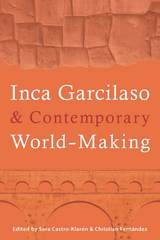 Inca Garcilaso and Contemporary World-Making
Sara Castro-Klarén
University of Pittsburgh Press, 2016 This edited volume offers new perspectives from leading scholars on the important work of Inca Garcilaso de la Vega (1539–1616), one of the first Latin American writers to present an intellectual analysis of pre-Columbian history and culture and the ensuing colonial period. To the contributors, Inca Garcilaso’s Royal Commentaries of the Incas presented an early counter-hegemonic discourse and a reframing of the history of native non-alphabetic cultures that undermined the colonial rhetoric of his time and the geopolitical divisions it purported. Through his research in both Andean and Renaissance archives, Inca Garcilaso sought to connect these divergent cultures into one world.
This collection offers five classical studies of Royal Commentaries previously unavailable in English, along with seven new essays that cover topics including Andean memory, historiography, translation, philosophy, trauma, and ethnic identity. This cross-disciplinary volume will be of interest to students and scholars of Latin American history, culture, comparative literature, subaltern studies, and works in translation.
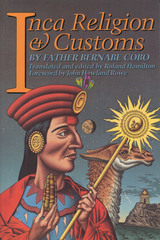 Inca Religion and Customs
By Bernabe Cobo
University of Texas Press, 1990 Completed in 1653, Father Bernabe Cobo's Historia del Nuevo Mundo is an important source of information on pre-conquest and colonial Spanish America. Though parts of the work are now lost, the remaining sections which have been translated offer valuable insights into Inca culture and Peruvian history. Inca Religion and Customs is the second translation by Roland Hamilton from Cobo's massive work. Beginning where History of the Inca Empire left off, it provides a vast amount of data on the religion and lifeways of the Incas and their subject peoples. Despite his obvious Christian bias as a Jesuit priest, Cobo objectively and thoroughly describes many of the religious practices of the Incas. He catalogs their origin myths, beliefs about the afterlife, shrines and objects of worship, sacrifices, sins, festivals, and the roles of priests, sorcerers, and doctors. The section on Inca customs is equally inclusive. Cobo covers such topics as language, food and shelter, marriage and childrearing, agriculture, warfare, medicine, practical crafts, games, and burial rituals. Because the Incas apparently had no written language, such postconquest documents are an important source of information about Inca life and culture. Cobo's work, written by one who wanted to preserve something of the indigenous culture that his fellow Spaniards were fast destroying, is one of the most accurate and highly respected.
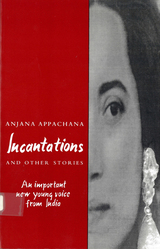 "Incantations" and Other Stories: An Important New Young Voice From India
Appachana, Anjana
Rutgers University Press, 1992 This first collection of fiction by Anjana Appachana provides stories that are beautifully written, the characters in them carefully and respectfully drawn. All the stories are set in India, but the people in them seem somehow displaced within their own society—a society in transition but a transition that does not come fast enough to help them. Appachana manages to capture the pervasive humor, poignancy, and self-delusion of the lives of the people she observes, but she does so without seeming to pass judgments on them. She focuses on unexpected moments, as if catching her characters off guard, lovingly exposing the fragile surfaces of respectability and convention that are so much a part of every society, but particularly strong in India, with its caste system, gender privileges, and omnipresent bureaucracies.
All life seems to be prescribed; these characters bravely or cautiously confront the rules and regulations or finally give in to them resignedly—any small triumphs they achieve are never clear-cut. One of the most unusual aspects of many of the stories is the way in which they are informed by but never ruled by the author's feminism. She never lectures her readers but lets us see for ourselves: a bride caught in a hopeless marriage where she has given up all rights to any life of her own, a hapless college student who is confined to campus for minor infractions just at the time when she had an appointment for an abortion, a young girl who keeps the dark secret of her sister's rape, a woman executive and a digruntled male clerk both trapped in the intricate bureaucracy of their business firm and the roles they must play to survive there. By turns warm, gullible, arrogant and bigoted, all of these characters live their lives amid contradictions and double standards, superstitions and impossible dreams. Appachana's vision is unique, her writing superb. Readers will thank her for allowing them to enter territory that is at once distant and exotic but also familiar and recognizable.
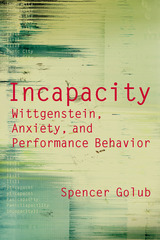 Incapacity: Wittgenstein, Anxiety, and Performance Behavior
Spencer Golub
Northwestern University Press, 2014 In this highly original study of the nature of performance, Spencer Golub uses the insights of Ludwig Wittgenstein into the way language works to analyze the relationship between the linguistic and the visual in the work of a broad range of dramatists, novelists, and filmmakers, among them Richard Foreman, Mac Wellman, Peter Handke, David Mamet, and Alfred Hitchcock. Like Wittgenstein, these artists are concerned with the limits of language’s representational capacity. For Golub, it is these limits that give Wittgenstein’s thought a further, very personal significance—its therapeutic quality with respect to the Obsessive Compulsive Disorder from which he suffers. Underlying what Golub calls “performance behavior” is Wittgenstein’s notion of “pain behavior”—that which gives public expression to private experience. Golub charts new directions for exploring the relationship between theater and philosophy, and even for scholarly criticism itself.
 Incarceration and Race in Michigan: Grounding the National Debate in State Practice
Lynn O. Scott
Michigan State University Press, 2019 State and local policies are key to understanding how to reduce prison populations. This anthology of critical and personal essays about the need to reform criminal justice policies that have led to mass incarceration provides a national perspective while remaining grounded in Michigan. Major components in this volume include a focus on current research on the impact of incarceration on minority groups, youth, and the mentally ill; and a focus on research on Michigan’s leadership in the area of reentry. Changes in policy will require a change in the public’s problematic images of incarcerated people. In this volume, academic research is combined with first-person narratives and paintings from people who have been directly affected by incarceration to allow readers to form more personal connections with those who face incarceration. At a time when much of the push to reduce prison populations is focused on the financial cost to states and cities, this book emphasizes the broader social and human costs of mass incarceration.
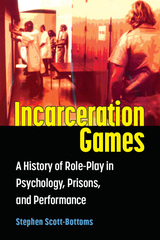 Incarceration Games: A History of Role-Play in Psychology, Prisons, and Performance
Stephen Scott-Bottoms
University of Michigan Press, 2024 Do you want to play a game?
Incarceration Games reexamines the complex history and troubled legacy of improvised, interactive role-playing experiments. With particular attention to the notorious Stanford prison study, the author draws on extensive archival research and original interviews with many of those involved, to refocus attention on the in-game choices of the role-players themselves.
Role-playing as we understand it today was initially developed in the 1930s as a therapeutic practice within the New York state penal system. This book excavates that history and traces the subsequent adoption of these methods for lab experimentation, during the postwar “stage production era” in American social psychology. It then examines the subsequent mutation of the Stanford experiment, in particular, into cultural myth—exploring the ways in which these distorted understandings have impacted on everything from reality TV formats to the “enhanced interrogation” of real-world terror suspects. Incarceration Games asks readers to reconsider what they thought they knew about this tangled history, and to look at it again from the role-player’s perspective.
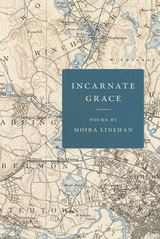 Incarnate Grace
Moira Linehan
Southern Illinois University Press, 2015 In her collection Incarnate Grace, poet Moira Linehan explores, questions, and ultimately celebrates her attempt to live in the temple of the present. After learning she has breast cancer, the poet struggles to live an examined life. Alienated and estranged from her own body, she turns her cancer into “these binoculars, / this new way of looking,” and uses it as a way of fixing herself firmly within the moment. As she travels Ireland and the Pacific Northwest, her busy mind moves from the knot in her breast to the knots in her knitting to the illuminated knots of The Book of Kells to the tossing, knotted surface of the sea; from the margins of her surgery—clean but not ideal—to the margins of illuminated manuscripts. She links the mundane to the mythic, intertwining connections between scripture and nature, storms and loss, winter and light, breast cancer and embroidery. As she returns to her home on a small pond in Massachusetts, she takes with her the fruits of her travels: the incarnate grace of the ordinary. Vivid and compelling, Incarnate Grace finds beauty in the worst of circumstances and redemption in the fabric of daily life.
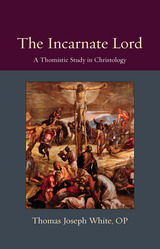 The Incarnate Lord
Thomas Josepth White, OP
Catholic University of America Press, 2015 The Incarnate Lord, then, considers central themes in Christology from a metaphysical perspective. Particular attention is given to the hypostatic union, the two natures of Christ, the knowledge and obedience of Jesus, the passion and death of Christ, his descent into hell, and resurrection. A central concern of the book is to argue for the perennial importance of ontological principles of Christology inherited from patristic and scholastic authors. However, the book also seeks to advance an interpretation of Thomistic Christology in a modern context. The teaching Aquinas, then, is central to the study, but it is placed in conversation with various modern theologians, such as Karl Barth, Karl Rahner and Hans Urs von Balthasar. Ultimately the goal of the work is to suggest how traditional Catholic theology might thrive under modern conditions, and also develop fruitfully from engaging in contemporary controversies.
 Incarnate Love: Essays in Orthodox Ethics, Second Edition
Vigen Guroian
University of Notre Dame Press, 2002 Incarnate Love is a major contribution to both Orthodox ethics and to Christian self-understanding. Completely revised with a new preface and two additional chapters, this work aims to articulate a social ethic that can make sense of the Orthodox experience in the United States, as well as challenge the Orthodox tradition to formulate a new strategy for church and societal interaction.
VIGEN GUROIAN is professor of theology and ethics at Loyola College in Maryland.
----------
"It is a great delight to encounter a fresh voice in the field of Christian ethics, especially when that voice speaks for a very rich strand within the Christian tradition and one which is seldom heard in contemporary discussion of ethical questions. . . . The dialogue among Christian ethicists is greatly enriched by the active participation of such a well-informed, perceptive, and challenging voice from the Orthodox tradition." --Heythrop Journal
"This is a good book . . . it deserves careful and attentive reading as a well-informed, competent, and well-articulated piece of theological writing." --Greek Orthodox Theological Review
". . . here is a striking breakthrough into the field of ethics by a scholar of the Armenian Orthodox Church in America. In this collection of well-crafted, provocative essays, Guroian interacts creatively with such contemporary ethicists as R. J. Neuhaus, J. C. Murray, S. Hauerwas, J. H. Yoder, and S. Harakas." --Journal of the Evangelical Theological Society
". . . insightful and provocative . . . these essays provide rich food for thought. This is a welcome volume--devoted to thinking about ethics within a theological context, but concerned with large social questions . . . one of the very few accessible works in Orthodox ethics." --Religious Studies Review
"[Guroian's] book breaks new ground by confronting in a radical but constructive manner the teaching of Eastern Christianity with the ethical thought of the Western church." --Theological Book Review
"Not for many years have I read a more invigorating book." --Paul Ramsey
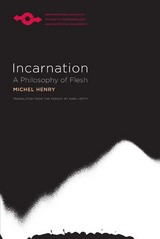 Incarnation: A Philosophy of Flesh
Michel Henry; Translated from the French by Karl Hefty
Northwestern University Press, 2015 In his book Incarnation: A Philosophy of the Flesh, Michel Henry starts with the opposition of the sensible and living flesh, as we experience it permanently from the inside, to our inert and material body, as we can see it from the outside, similar to the other objects we can find in the world. The flesh doesn’t fit at all in his terminology with the soft part of our material and objective body, by opposition to the bones for example, but to what he called in his previous books our subjective body. For Michel Henry, an object doesn’t possess interiority, it is not living, it doesn’t feel itself and doesn’t feel that it is touched; it doesn’t do the subjective experience of being touched.
After having placed the difficult problem of the incarnation in an historical perspective going back to the thought of the Fathers of the Church, he makes in this book a critical review of the phenomenological tradition that leads to the reversal of phenomenology. He then proposes to elaborate a phenomenology of the flesh which leads to the notion of a not constituted original flesh given in the "Arch-revelation" of Life, as well as a phenomenology of Incarnation.
Although the flesh is traditionally understood as the place of sin, it is also in Christianity the place of salvation, which consists in the deification of man, that’s to say in the fact of becoming Son of God, to come back to the eternal and absolute Life we had forgotten getting lost in the world, caring only about things and ourselves. In the fault, we make the tragic experience of our powerlessness to do the good we would like to do and of our inability to avoid the evil. In this way in front of the magic body of the other, that’s the anguished desire to meet the life in it that leads to the fault. In the night of the lovers, the sexual act couples two impulsive movements, but the erotic desire fails to reach the pleasure of the other where it is experienced, in a total loving fusion. The erotic relation is however doubled by a pure affective relation, foreign to the carnal coupling, a relation made of mutual gratitude or of love. That’s this affective dimension that is denied in this way of violence that is pornography, which extracts the erotic relation from the pathos of life to abandon it to the world, and which consists in a real profanation of life.
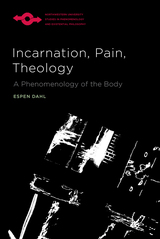 Incarnation, Pain, Theology: A Phenomenology of the Body
Espen Dahl
Northwestern University Press, 2024 How the phenomenology of pain allows us to rethink human incarnation
While the phenomenological tradition has carefully treated both the objective and the lived body, Espen Dahl explores a dimension of the body that does not fall neatly into either category, suggesting that philosophers should take account of the inner density of our organic, material body. By integrating the dimension of “flesh-and-blood” into the phenomenological notion of the body, Dahl argues that it is possible to reach a more adequate notion of human incarnation. The author explores the body in its subjectivity and its resistance, in activity founded on passivity, and in the ambiguous limits of its skin. The phenomenon of pain is given particular attention in this investigation, since pain is, as Dahl argues, what makes the body inescapably manifest in its otherwise hidden dimensions, including its ambiguity and vulnerability. Related to this focus, Dahl also engages with the Christian theological concerns of incarnation, pain, and hope. Phenomenologists have long drawn on this religious inheritance, particularly in what has been dubbed the French “theological turn.” In a similar manner, Incarnation, Pain, Theology: A Phenomenology of the Body draws on these theological sources while firmly holding to its philosophical commitments in methodological approach and analytic aims.
The Incas
Nigel Davies
University Press of Colorado, 1995 The Inca Empire's immense territory spanned more than 2,000 miles - from Ecuador to Chile - at the time of the Spanish invasion, yet Inca culture remains largely a mystery. The Incas did not leave pictorial codices and documents in their native language as the Maya and Aztec did and they narrated to Spanish chroniclers just a few of the multiple alternative histories maintained by descendants of various rulers.
In this classic work, Nigel Davies offers a clear view into Inca political history, economy, governance, religion, art, architecture, and daily life. The Incas has become a classic in its many years in print; readers and scholars interested in ancient American cultures will relish this paperback edition.
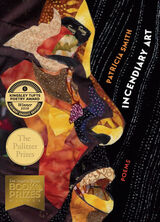 Incendiary Art: Poems
Patricia Smith
Northwestern University Press, 2017 Winner, 2017 Los Angeles Times Book Prize
Finalist, 2018 Pulitzer Prize for Poetry
Winner, NAACP Image Award for Outstanding Literary Work in the Poetry category
Winner, 2018 Kingsley Tufts Poetry Award
Winner, 2018 BCALA Best Poetry Award
Winner, Abel Meeropol Award for Social Justice
Finalist, Neustadt International Prize for Literature
Winner, 2021 Ruth Lilly Poetry Prize
One of the most magnetic and esteemed poets in today’s literary landscape, Patricia Smith fearlessly confronts the tyranny against the black male body and the tenacious grief of mothers in her compelling new collection, Incendiary Art. She writes an exhaustive lament for mothers of the "dark magicians," and revisits the devastating murder of Emmett Till. These dynamic sequences serve as a backdrop for present-day racial calamities and calls for resistance. Smith embraces elaborate and eloquent language— "her gorgeous fallen son a horrid hidden / rot. Her tiny hand starts crushing roses—one by one / by one she wrecks the casket’s spray. It’s how she / mourns—a mother, still, despite the roar of thorns"— as she sharpens her unerring focus on incidents of national mayhem and mourning. Smith envisions, reenvisions, and ultimately reinvents the role of witness with an incendiary fusion of forms, including prose poems, ghazals, sestinas, and sonnets. With poems impossible to turn away from, one of America’s most electrifying writers reveals what is frightening, and what is revelatory, about history.
 Incest and Influence: The Private Life of Bourgeois England
Adam Kuper
Harvard University Press, 2009 Like many gentlemen of his time, Charles Darwin married his first cousin. In fact, marriages between close relatives were commonplace in nineteenth-century England, and Adam Kuper argues that they played a crucial role in the rise of the bourgeoisie.
Incest and Influence shows us just how the political networks of the eighteenth-century aristocracy were succeeded by hundreds of in-married bourgeois clans—in finance and industry, in local and national politics, in the church, and in intellectual life. In a richly detailed narrative, Kuper deploys his expertise as an anthropologist to analyze kin marriages among the Darwins and Wedgwoods, in Quaker and Jewish banking families, and in the Clapham Sect and their descendants over four generations, ending with a revealing account of the Bloomsbury Group, the most eccentric product of English bourgeois endogamy.
These marriage strategies were the staple of novels, and contemporaries were obsessed with them. But there were concerns. Ideas about incest were in flux as theological doctrines were challenged. For forty years Victorian parliaments debated whether a man could marry his deceased wife’s sister. Cousin marriage troubled scientists, including Charles Darwin and his cousin Francis Galton, provoking revolutionary ideas about breeding and heredity.
This groundbreaking study brings out the connection between private lives, public fortunes, and the history of imperial Britain.
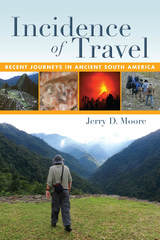 Incidence of Travel: Recent Journeys in Ancient South America
Jerry D. Moore
University Press of Colorado, 2017 In Incidence of Travel, archaeologist Jerry Moore draws on his personal experiences and historical and archaeological studies throughout South America to explore and understand the ways traditional peoples created cultural landscapes in the region. Using new narrative structures, Moore introduces readers to numerous archaeological sites and remains, describing what it is like to be in the field and sparking further reflection on what these places might have been like in the past. From the snow-capped mountains of Colombia to the arid deserts of Peru and Chile, ancient peoples of South America built cities, formed earthen mounds, created rock art, and measured the cosmos—literally inscribing their presence and passage throughout the continent. Including experiences ranging from the terrifying to the amusing, Moore’s travels intersect with the material traces of traditional cultures. He refers to this intersection as "the incidence of travel." Braiding the tales of his own journeys with explanations of the places he visits through archaeological, anthropological, and historical contexts, Moore conveys the marvelous and intriguing complexities of prehistoric and historic peoples of South America and the ways they marked their presence on the land. Combining travel narrative and archaeology in a series of essays—accounts of discoveries, mishaps of travel, and encounters with modern people living in ancient places—Incidence of Travel will engage any general reader, student, or scholar with interest in archaeology, anthropology, Latin American history, or storytelling.
The Incident at Naples
Francis Steegmuller
University of Chicago Press, 2008 Born in Australia, novelist Shirley Hazzard first moved to Naples as a young woman in the 1950s to take up a job with the United Nations. It was the beginning of a long love affair with the city, in which the Naples of Pliny, Gibbon, and Auden constantly became reanimated by new experiences, as Hazzard was joined in her travels by her husband, the editor and critic Francis Steegmuller. In The Incident at Naples, a classic essay first published by the New Yorker, Steegmuller recollects on how he was, as a tourist to the city, robbed and injured and then treated in a series of hospitals. What can The Incident at Naples teach us? A town shadowed by both the symbol and the reality of Vesuvius can never fail to acknowledge the essential precariousness of life—nor, as Hazzard and Steegmuller discover, the human compassion, generosity, and friendship that are necessary to sustain it.
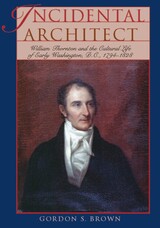 Incidental Architect: William Thornton and the Cultural Life of Early Washington, D.C., 1794–1828
Gordon S. Brown
Ohio University Press, 2009 While the majority of scholarship on early Washington focuses on its political and physical development, in Incidental ArchitectGordon S. Brown describes the intellectual and social scene of the 1790s and early 1800s through the lives of a prominent couple whose cultural aspirations served as both model and mirror for the city’s own.
When William and Anna Maria Thornton arrived in Washington, D.C., in 1794, the new nation’s capital was little more than a raw village. The Edinburgh–educated Thornton and his accomplished wife brought with them the values of the Scottish Enlightenment, an enthusiasm for the arts, and a polished urbanity that was lacking in the little city emerging from the swamps along the Potomac. Thornton’s talents were manifold: He is perhaps best known as the original architect of the Capitol building, but he also served as a city commissioner and as director of the Patent Office, where his own experimentation in steam navigation embroiled him in a long-running dispute with inventor Robert Fulton.
In spite of their general preoccupation with politics and real estate development, Washington’s citizens gradually created a network of cultural institutions—theaters, libraries and booksellers, music venues, churches, schools, and even colleges and intellectual associations—that began to satisfy their aspirations.
Incidental Architect is a fascinating account of how the city’s cultural and social institutions were shaped by its earliest citizens.
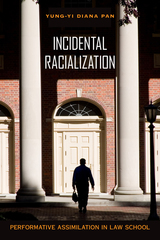 Incidental Racialization: Performative Assimilation in Law School
Yung-Yi Diana Pan
Temple University Press, 2017 Despite the growing number ofAsian American and Latino/a law students, many panethnic students still feel as if they do not belong in this elite microcosm, which reflects the racial inequalities in mainstream American society. While in law school, these students—often from immigrant families, and often the first to go to college—have to fight against racialized and gendered stereotypes. In Incidental Racialization, Diana Pan rigorously explores how systemic inequalities are produced and sustained in law schools. Through interviews with more than 100 law students and participant observations at two law schools, Pan examines how racialization happens alongside professional socialization. She investigates how panethnic students negotiate their identities, race, and gender in an institutional context. She also considers how their lived experiences factor into their student organization association choices and career paths. Incidental Racialization sheds light on how race operates in a law school setting for both students of color and in the minds of white students. It also provides broader insights regarding racial inequalities in society in general.
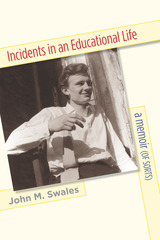 Incidents in an Educational Life: A Memoir (of Sorts)
John M. Swales
University of Michigan Press, 2009 Incidents in an Educational Life chronicles the educational journey of John M. Swales. A leading scholar in the field of Applied Linguistics and its subfield of English for Specific Purposes, Swales has taught across the globe in places such as Italy, Sweden, Libya, the United Kingdom, and the University of Michigan. His memoir offers a rare glimpse into the professional journey of a prominent scholar and educator. Incidents in an Educational Life explores the lessons Swales learned by teaching and by being taught. The story follows his gradual transformation from an English as a Second Language teacher to one of the leading international figures in his field, stopping along the way to tell the sometimes amusing, sometimes painful anecdotes that have made him the recognized educator he is today. His entertaining prose make this volume a must-read for anyone considering the field, or the many ways in which we all become teachers. John M. Swales is one of the leading international scholars in the field of English for Specific Purposes. He retired in the summer of 2006 from the University of Michigan after teaching at multiple universities overseas. He is the co-author of the international bestseller Academic Writing for Graduate Students (3rd ed.).
 Incidents in the Life of a Slave Girl: Written by Herself, Now with "A True Tale of Slavery" by John S. Jacobs, Enlarged Edition
Harriet A. Jacobs and John S. Jacobs; edited by Jean Fagan Yellin
Harvard University Press, 2000 THIS EDITION HAS BEEN REPLACED BY A NEWER EDITION.
This enlarged edition of the most significant and celebrated slave narrative now completes the Jacobs family saga, surely one of the most memorable in all of American history. John Jacobs's short slave narrative, A True Tale of Slavery, published in London in 1861, adds a brother's perspective to Harriet Jacobs's own autobiography. It is an exciting addition to this now classic work, as John Jacobs presents additional historical information about family life so well described already by his sister. Importantly, it presents the people, places, and events Harriet Jacobs wrote about from the different perspective of a male narrator. Once more, Jean Yellin, who discovered this long-lost document, supplies annotation and authentication. She has also brought her Introduction up to date.
Incidents in the Life of a Slave Girl: Written by Herself, with “A True Tale of Slavery” by John S. Jacobs
Harriet A. Jacobs and John S. Jacobs; edited by Jean Fagan Yellin
Harvard University Press, 2009 This enlarged edition of the most significant and celebrated slave narrative completes the Jacobs family saga, surely one of the most memorable in all of American history. John S. Jacobs’s short slave narrative, A True Tale of Slavery, published in London in 1861, adds a brother’s perspective to Harriet A. Jacobs’s autobiography. It is an exciting addition to this now classic work, as John Jacobs presents further historical information about family life so well described already by his sister. Once more, Jean Fagan Yellin, who discovered this long-lost document, supplies annotation and authentication.
This is the standard edition of Incidents in the Life of a Slave Girl, reissued here in the John Harvard Library and updated with a new bibliography.
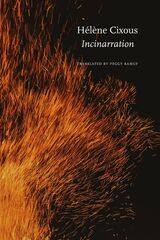 Incinarration: What Do We Carry?
Hélène Cixous
Seagull Books, 2026 A genre-defying book about survival, transformation, and the human ability to rise from the ashes.
Hélène Cixous’s powerful new book, masterfully translated by Peggy Kamuf, is a vivid journey through fire. From the ashes of wars, wildfires, and upheaval, Cixous traces a dramatic path across time—from the Second World War and the Nazi occupation of Oran to the European wildfires of 2022—weaving a rich, intimate narrative that merges history, autobiography, and myth. With her piercing, lyrical voice, Cixous confronts the human cost of destruction and upheaval, and asks a universal question: What do we carry with us when everything we know is falling to ashes?
In Incinarration, Cixous finds hope in the power of words, memory, and imagination to illuminate our darkest moments and redeem the future. As forests burn and regimes collapse, Cixous shows us how stories become a form of resistance—a way to remember, to bear testimony, and to find renewal in the face of oblivion.
 Incitement: Anwar al-Awlaki’s Western Jihad
Alexander Meleagrou-Hitchens
Harvard University Press, 2020 The definitive account of the career and legacy of the most influential Western exponent of violent jihad.
Anwar al-Awlaki was, according to one of his followers, “the main man who translated jihad into English.” By the time he was killed by an American drone strike in 2011, he had become a spiritual leader for thousands of extremists, especially in the United States and Britain, where he aimed to make violent Islamism “as American as apple pie and as British as afternoon tea.” Alexander Meleagrou-Hitchens draws on extensive research among al-Awlaki’s former colleagues, friends, and followers, including interviews with convicted terrorists, to explain how he established his network and why his message resonated with disaffected Muslims in the West.
A native of New Mexico, al-Awlaki rose to prominence in 2001 as the imam of a Virginia mosque attended by three of the 9/11 hijackers. After leaving for Britain in 2002, he began delivering popular lectures and sermons that were increasingly radical and anti-Western. In 2004 he moved to Yemen, where he eventually joined al-Qaeda and oversaw numerous major international terrorist plots. Through live video broadcasts to Western mosques and universities, YouTube, magazines, and other media, he soon became the world’s foremost English-speaking recruiter for violent Islamism. One measure of his success is that he has been linked to about a quarter of Islamists convicted of terrorism-related offenses in the United States since 2007.
Despite the extreme nature of these activities, Meleagrou-Hitchens argues that al-Awlaki’s strategy and tactics are best understood through traditional social-movement theory. With clarity and verve, he shows how violent fundamentalists are born.
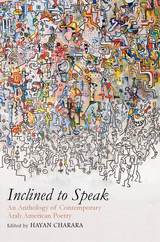 Inclined to Speak: An Anthology of Contemporary Arab American Poetry
Hayan Charara
University of Arkansas Press, 2008 At no other time in American history has our imagination been so engrossed with the Arab experience. An indispensable and historic volume, Inclined to Speak gathers together poems, from the most important contemporary Arab American poets, that shape and alter our understanding of this experience. These poems also challenge us to reconsider what it means to be American. Impressive in its scope, this book provides readers with an astonishing array of poetic sensibilities, touching on every aspect of the human condition. Whether about culture, politics, loss, art, or language itself, the poems here engage these themes with originality, dignity, and an unyielding need not only to speak, but also to be heard. Here are thirty-nine poets offering up 160 poems. Included in the anthology are Naomi Shihab Nye, Samuel Hazo, D. H. Melhem, Lawrence Joseph, Khaled Mattawa, Mohja Khaf, Matthew Shenoda, Kazim Ali, Nuar Alsadir, Fady Joudah, and Lisa Suhair Majaj. Charara has written a lengthy introduction about the state of Arab American poetry in the country today and short biographies of the poets and provided an extensive list of further readings.
Include
Julie Stivers
American Library Association, 2022 Include, part of a six-volume series on the Shared Foundations in AASL’s National School Library Standards, brings together a chorus of school librarians, scholars, and students representing a wide range of races, ethnicities, experiences, and identities. This book offers - an understanding of why the concept of Include is paramount to school librarian practice, supported by key research to share and inspire the inclusion of learner and educator voices and experiences;
- an explanation of what it looks like to successfully integrate the Include Shared Foundation in terms of collection, space, and instruction;
- useable guidance that school librarians can confidently incorporate in their settings , including easy-to-implement ideas, inspiring stories, events, and transformation; and
- reflections, questions, and action steps to help readers move their practice forward.
Inclusion, Diversity and Innovation in Translation Education
Edited by Alejandro Bolaños García-Escribano and Mazal Oaknín
University College London, 2024 Diversity equity and inclusion meet foreign language and translation education.
In Inclusion, Diversity and Innovation in Translation Education, editors Alejandro Bolaños, García-Escribano, and Mazal Oaknín, emphasize the latest developments in literary and audiovisual translation education and teaching foreign languages while exploring the relevance of equality, diversity, and inclusion. They propose best practices and pieces of training, inviting readers to incorporate social issues affecting marginalized groups in their language and translation teaching practices.
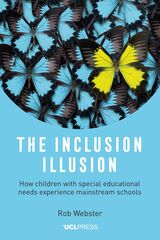 The Inclusion Illusion: How Children with Special Educational Needs Experience Mainstream Schools
Rob Webster
University College London, 2022 An examination of contemporary inclusive pedagogy and how it is failing students with special educational needs and disabilities.
Inclusion conjures images of children with special educational needs and disabilities (SEND) learning in classes alongside peers in a mainstream school. For pupils in the UK with high-level SEND, who have an Education, Health and Care Plan (formerly a Statement), this implies an everyday educational experience similar to that of their typically developing classmates. Yet in vital respects, they are worlds apart.
Based on the UK’s largest observation study of pupils with high-level SEND, this book exposes how attendance at a mainstream school is no guarantee of receiving a mainstream education. Observations of nearly 1,500 lessons in English schools show that these students’ everyday experience of school is characterized by separation and segregation. Furthermore, interviews with nearly five hundred pupils, parents, and school staff reveal the effect of this marginalization on the quality of their education. The book argues that inclusion is an illusion. The way schools are organized and how classrooms are composed creates a form of structural exclusion that preserves mainstream education for typically developing pupils and justifies offering a diluted pedagogy for pupils with high-level SEND. Ultimately, the book suggests why a more authentic form of inclusion is needed, and how it might be achieved.
Inclusion in New Danish Cinema: Sexuality and Transnational Belonging
Meryl Shriver-Rice
Intellect Books, 2015 Often recognized as one of the happiest countries in the world, Denmark, like its Scandinavian neighbors, is known for its progressive culture, which is also reflected in its national cinema. It is not surprising, then, that Danish film boasts as many successful women film directors as men, uses scripts that are often cowritten by the director and the screenwriter, and produces one of the largest numbers of queer films directed by and starring women. Despite all this, Danish film is not widely written about, especially in English. Inclusion in New Danish Cinema brings this vibrant culture to English-language audiences. Meryl Shriver-Rice argues that Denmark has demonstrated that film can reinforce cultural ethics and political values while also navigating the ongoing and mounting forces of digital communication and globalization.
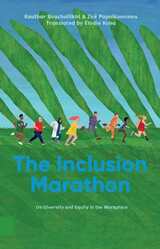 The Inclusion Marathon: On Diversity and Equity in the Workplace
Zoë Papaikonomou
Amsterdam University Press, 2023 In recent years, more and more organisations have realised that diversity and inclusion in the workplace is both crucial and enormously beneficial. But how do you stop this realisation from remaining empty words and flashy statements, and turn awareness into action?
In The Inclusion Marathon, Kauthar Bouchallikht and Zoë Papaikonomou interview 41 practitioners and researchers about their knowledge and experience within the field of diversity, equity and inclusion in the Netherlands. These experts discuss different approaches and the bumps and barriers they come across. The Inclusion Marathon is a revealing book exploring the persistent lack of diversity and equity within many organisations. At the same time, it is a constructive, concrete guide to how organisations may become more diverse, equitable and inclusive.
The Inclusion Marathon is an extensive English summary of the Dutch book De inclusiemarathon.
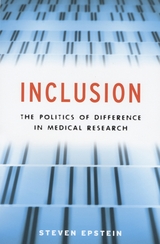 Inclusion: The Politics of Difference in Medical Research
Steven Epstein
University of Chicago Press, 2007 With Inclusion, Steven Epstein argues that strategies to achieve diversity in medical research mask deeper problems, ones that might require a different approach and different solutions.
Formal concern with this issue, Epstein shows, is a fairly recent phenomenon. Until the mid-1980s, scientists often studied groups of white, middle-aged men—and assumed that conclusions drawn from studying them would apply to the rest of the population. But struggles involving advocacy groups, experts, and Congress led to reforms that forced researchers to diversify the population from which they drew for clinical research. While the prominence of these inclusive practices has offered hope to traditionally underserved groups, Epstein argues that it has drawn attention away from the tremendous inequalities in health that are rooted not in biology but in society.
“Epstein’s use of theory to demonstrate how public policies in the health profession are shaped makes this book relevant for many academic disciplines. . . . Highly recommended.”—Choice
“A masterful comprehensive overview of a wide terrain.”—Troy Duster, Biosocieties
 The Inclusive Corporation: A Disability Handbook for Business Professionals
Griff Hogan
Ohio University Press, 2003 Because of the Americans with Disabilities Act and the enormous market of aging adults coping with impairments, disability has become an important issue for all businesses. The Inclusive Corporation is the first book to address comprehensively this issue of disability as it relates to all of the areas critical to effective business management.
The Inclusive Corporation succinctly presents disability-related information and resources that business managers need, and does so in a way that is highly readable and easy to use. The book is respectful and understanding of business requirements, while at the same time conveying a comprehensive knowledge of disability issues.
Matters of legal compliance, social responsibility, recruitment, diversity, employee supervision, customer service, product design and marketing — all are dealt with in The Inclusive Corporation. The result of the author's many years of experience working with businesses to improve their ability to include disabled people both as customers and employees, The Inclusive Corporation will be welcomed by people with disabilities and by business professionals nationwide.
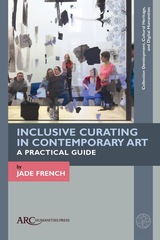 Inclusive Curating in Contemporary Art: A Practical Guide
Jade French
Arc Humanities Press, 2021 Recent decades have witnessed concerns over representation, inclusion, and social justice move from the margins to the centre of museum practice. While a growing number of institutions seek to reflect the diversity of their communities in exhibition-making, gaps remain in understanding applied approaches and practices. This book presents the inclusion of new voices and perspectives into the museum via "inclusive curating," a facilitated process empowering a wide demographic of people to become curators. Grounded in a case study, this book offers guidance in putting inclusive curating into action alongside a range of practical resources and key debates. Curating is often considered an exclusive job for a privileged few. But, by breaking it down using methods demonstrated throughout this book, not only does curating become more usable for more people, it also contributes to understanding the process and practices by which our cultural spaces can become democratized.
Inclusive Dance: The Story of Touchdown Dance
Katy Dymoke
Intellect Books, 2023 Personal accounts of the work of Touchdown Dance and inclusivity in dance performance projects.
Inclusive Dance offers a concise ethnography of disability arts and a historiographic overview of the field in the 1980s when many new disability arts groups emerged in the UK. It focuses in particular on the inclusive teaching modalities of Touchdown Dance, which was the work of dancer Steve Paxton and theater-maker and psychotherapist Anne Kilcoyne. It involved visually impaired and sighted adults in a dyadic movement form called Contact Improvisation. Katy Dymoke took over Touchdown Dance in 1994, and this book draws on archives, participant accounts, and personal experience to detail the work of Touchdown Dance and its effects on its participants since its founding. Three guests from Touchdown Dance contribute eyewitness accounts of the methods and performance projects.
Inclusive Equality: A Vision for Social Justice
Sally Witcher
Bristol University Press, 2014
At a time of tremendous economic upheaval and fiery political contests, the possibility of viable social cohesion— and social justice—seems dimmer than ever. In this ambitious, wide-ranging book, Sally Witcher asks what it takes to create a better-functioning society. Weaving together literature on poverty, discrimination, and social exclusion, she formulates a vision for social justice as “inclusive equality,” a novel approach that reveals clear, practical ways to design and deliver social policy. Making complex material accessible, she uncovers just what social justice means and how we can achieve it.
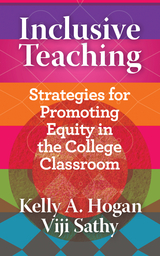 Inclusive Teaching: Strategies for Promoting Equity in the College Classroom
Kelly A. Hogan
West Virginia University Press, 2022 Award-winning teachers offer practical tips for addressing inequities in the college classroom and for making all students feel welcome and included.
In a book written by and for college teachers, Kelly Hogan and Viji Sathy provide tips and advice on how to make all students feel welcome and included. They begin with a framework describing why explicit attention to structure enhances inclusiveness in both course design and interactions with and between students. Inclusive Teaching then provides practical ways to include more voices in a series of contexts: when giving instructions for group work and class activities, holding office hours, communicating with students, and more. The authors finish with an opportunity for the reader to reflect on what evidence to include in a teaching dossier that demonstrates inclusive practices. The work of two highly regarded specialists who have delivered over a hundred workshops on inclusive pedagogy and who contribute frequently to public conversations on the topic, Inclusive Teaching distills state-of-the-art guidance on addressing privilege and implicit bias in the college classroom. It seeks to provide a framework for individuals and communities to ask, Who is being left behind and what can teachers do to add more structure?
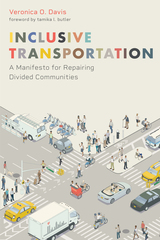 Inclusive Transportation: A Manifesto for Repairing Divided Communities
Veronica O. Davis
Island Press, 2023 Transportation planners, engineers, and policymakers in the US face the monumental task of righting the wrongs of their predecessors while charting the course for the next generation. This task requires empathy while pushing against forces in the industry that are resistant to change. How do you change a system that was never designed to be equitable? How do you change a system that continues to divide communities and cede to the automobile?
In Inclusive Transportation: A Manifesto for Repairing Divided Communities, transportation expert Veronica O. Davis shines a light on the inequitable and often destructive practice of transportation planning and engineering. She calls for new thinking and more diverse leadership to create transportation networks that connect people to jobs, education, opportunities, and to each other.
Inclusive Transportation is a vision for change and a new era of transportation planning. Davis explains why centering people in transportation decisions requires a great shift in how transportation planners and engineers are trained, how they communicate, the kind of data they collect, and how they work as professional teams. She examines what “equity” means for a transportation project, which is central to changing how we approach and solve problems to create something safer, better, and more useful for all people.
Davis aims to disrupt the status quo of the transportation industry. She urges transportation professionals to reflect on past injustices and elevate current practice to do the hard work that results in more than an idea and a catchphrase.
Inclusive Transportation is a call to action and a practical approach to reconnecting and shaping communities based on principles of justice and equity.
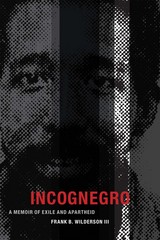 Incognegro: A Memoir of Exile and Apartheid
Frank B. Wilderson III
Duke University Press, 2008 In 1995, a South African journalist informed Frank Wilderson, one of only two American members of the African National Congress (ANC), that President Nelson Mandela considered him "a threat to national security." Wilderson was asked to comment. Incognegro is that "comment." It is also his response to a question posed five years later in a California university classroom: "How come you came back?" Although Wilderson recollects his turbulent life as an expatriate during the furious last gasps of apartheid, Incognegro is at heart a quintessentially American story. During South Africa's transition, Wilderson taught at universities in Johannesburg and Soweto by day. By night, he helped the ANC coordinate clandestine propaganda, launch psychological warfare, and more. In this mesmerizing political memoir, Wilderson's lyrical prose flows from unspeakable dilemmas in the red dust and ruin of South Africa to his return to political battles raging quietly on US campuses and in his intimate life. Readers will find themselves suddenly overtaken by the subtle but resolute force of Wilderson's biting wit, rare vulnerability, and insistence on bearing witness to history no matter the cost.
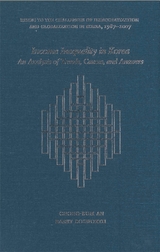 Income Inequality in Korea: An Analysis of Trends, Causes, and Answers
Chong-Bum An and Barry Bosworth
Harvard University Press, 2013 In the early 1990s, South Korea was showcased as a country that had combined extraordinary economic growth with a narrowing of income distribution, achieving remarkably low rates of unemployment and poverty. In the years following the financial crisis of 1997–1998, however, these rates ballooned to pre-crisis levels, giving rise to the perception that the gap between the rich and the poor in Korea had once again widened.
Income Inequality in Korea explores the relationship between economic growth and social developments in Korea over the last three decades. Analyzing the forces behind the equalizing trends in the 1980s and early 1990s, and the deterioration evident in the post-crisis years, Chong-Bum An and Barry Bosworth investigate the macroeconomic conditions, gains in educational attainment, demographic changes and conditions in labor markets, and social welfare policies that have contributed to the evolution of income inequality over time.
The authors also raise fundamental questions about whether the pre-crisis pattern of combining strong economic growth with improving equality can be restored, as well as how government policies might be designed to promote that objective. The book concludes with a discussion of some proposals for improving the efficacy of redistributive policies in Korea.
Income, Saving, and the Theory of Consumer Behavior
James S. Duesenberry
Harvard University Press The study applies modern psychology and sociology to the analysis of consumer behavior. Beginning with a new consumer behavior theory modifying the Keynesian consumption function, it reaches out, finally, to include the larger aspects of business and economic stability.
 Income, Wealth, and the Maximum Principle
Martin L. Weitzman
Harvard University Press, 2003 This compact and original exposition of optimal control theory and applications is designed for graduate and advanced undergraduate students in economics. It presents a new elementary yet rigorous proof of the maximum principle and a new way of applying the principle that will enable students to solve any one-dimensional problem routinely. Its unified framework illuminates many famous economic examples and models.
This work also emphasizes the connection between optimal control theory and the classical themes of capital theory. It offers a fresh approach to fundamental questions such as: What is income? How should it be measured? What is its relation to wealth?
The book will be valuable to students who want to formulate and solve dynamic allocation problems. It will also be of interest to any economist who wants to understand results of the latest research on the relationship between comprehensive income accounting and wealth or welfare.
Incommensurability, Incomparability, and Practical Reason
Ruth Chang
Harvard University Press, 1997 Can quite different values be rationally weighed against one another? Can the value of one thing always be ranked as greater than, equal to, or less than the value of something else? If the answer to these questions is no, then in what areas do we find commensurability and comparability unavailable? And what are the implications for moral and legal decision making? In this book, some of the sharpest minds in philosophy struggle with these questions.
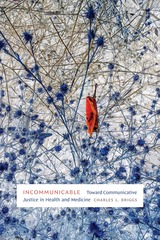 Incommunicable: Toward Communicative Justice in Health and Medicine
Charles L. Briggs
Duke University Press, 2024 In Incommunicable, Charles L. Briggs examines the long-standing presumptions that medical discourse translates easily across geographic, racial, and class boundaries. Bringing linguistic and medical anthropology into conversation with Black and decolonial theory, he theorizes the failure in health communication as incommunicability, which negatively affects all patients, doctors, and healthcare providers. Briggs draws on W. E. B. Du Bois and the work of three philosopher-physicians—John Locke, Frantz Fanon, and Georges Canguilhem—to show how cultural models of communication and health have historically racialized people of color as being incapable of communicating rationally and understanding biomedical concepts. He outlines incommunicability through a study of COVID-19 discourse, in which health professionals defined the disease based on scientific medical knowledge in ways that reduced varieties of nonprofessional knowledge about COVID-19 to “misinformation” and “conspiracy theories.” This dismissal of nonprofessional knowledge led to a failure of communication that eroded trust in medical expertise. Building on efforts by social movements and coalitions of health professionals and patients to craft more just and equitable futures, Briggs helps imagine health systems and healthcare discourses beyond the oppressive weight of communicability and the stigma of incommunicability.
Incomplete Knowledge: Poems
Jeffrey Harrison
Four Way Books, 2006 This collection consists at its core of a sequence of poems that speak to the loss of the writer’s brother to suicide. These poems stun us by their restraint and simplicity, and by their astonishment that this life, so important to so many, could be extinguished in such a manner. Harrison’s poems are impeccably crafted and move through narrative seamlessly—dry, naive, vulnerable, always accessible.
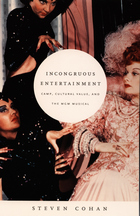 Incongruous Entertainment: Camp, Cultural Value, and the MGM Musical
Steven Cohan
Duke University Press, 2005 With their lavish costumes and sets, ebullient song and dance numbers, and iconic movie stars, the musicals that mgm produced in the 1940s seem today to epitomize camp. Yet they were originally made to appeal to broad, mainstream audiences. In this lively, nuanced, and provocative reassessment of the mgm musical, Steven Cohan argues that this seeming incongruity—between the camp value and popular appreciation of these musicals—is not as contradictory as it seems. He demonstrates that the films’ extravagance and queerness were deliberate elements and keys to their popular success. In addition to examining the spectatorship of the mgm musical, Cohan investigates the genre’s production and marketing, paying particular attention to the studio’s employment of a largely gay workforce of artists and craftspeople. He reflects on the role of the female stars—including Judy Garland, Debbie Reynolds, Esther Williams, and Lena Horne—and he explores the complex relationship between Gene Kelley’s dancing and his masculine persona. Cohan looks at how, in the decades since the 1950s, the marketing and reception of the mgm musical have negotiated the more publicly recognized camp value attached to the films. He considers the status of Singin’ in the Rain as perhaps the first film to be widely embraced as camp; the repackaging of the musicals as nostalgia and camp in the That’s Entertainment! series as well as on home video and cable; and the debates about Garland’s legendary gay appeal among her fans on the Internet. By establishing camp as central to the genre, Incongruous Entertainment provides a new way of looking at the musical.
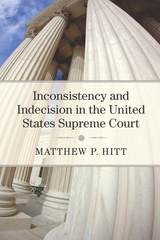 Inconsistency and Indecision in the United States Supreme Court
Matthew P. Hitt
University of Michigan Press, 2019 The United States Supreme Court exists to resolve constitutional disputes among lower courts and the other branches of government, allowing elected officials, citizens, and businesses to act without legal uncertainty. American law and society function more effectively when the Court resolves these ambiguous questions of Constitutional law. Since lower courts must defer to its reasoning, the Court should also promulgate clear and consistent legal doctrine, giving a reason for its judgment that a majority of justices support.
Yet a Court that prioritizes resolving many disputes will at times produce contradictory sets of opinions or fail to provide a rationale and legal precedent for its decision at all. In either case, it produces an unreasoned judgment. Conversely, a Court that prioritizes logically consistent doctrine will fail to resolve many underlying disputes in law and society. Inconsistency and Indecision in the United States Supreme Court demonstrates that over time, institutional changes, lobbied for by the justices, substantially reduced unreasoned judgments in the Court’s output, coinciding with a reduction in the Court’s caseload. Hence, the Supreme Court historically emphasized the first goal of dispute resolution, but evolved into a Court that prioritizes the second goal of logically consistent doctrine. As a result, the Court today fails to resolve more underlying questions in law and society in order to minimize criticism of its output from other elites. In so doing, the modern Court often fails to live up to its Constitutional obligation.
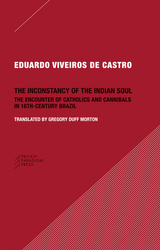 The Inconstancy of the Indian Soul: The Encounter of Catholics and Cannibals in 16-century Brazil
Eduardo Viveiros de Castro
Prickly Paradigm Press, 2011 In the mid-sixteenth century, Jesuit missionaries working in what is now Brazil were struck by what they called the inconstancy of the people they met, the indigenous Tupi-speaking tribes of the Atlantic coast. Though the Indians appeared eager to receive the Gospel, they also had a tendency to forget the missionaries’ lessons and “revert” to their natural state of war, cannibalism, and polygamy. This peculiar mixture of acceptance and rejection, compulsion and forgetfulness was incorrectly understood by the priests as a sign of the natives’ incapacity to believe in anything durably. In this pamphlet, world-renowned Brazilian anthropologist Eduardo Viveiros de Castro situates the Jesuit missionaries’ accounts of the Tupi people in historical perspective, and in the process draws out some startling and insightful implications of their perceived inconstancy in relation to anthropological debates on culture and religion.
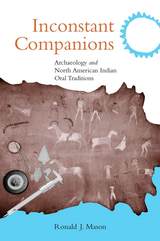 Inconstant Companions: Archaeology and North American Indian Oral Traditions
Ronald J. Mason
University of Alabama Press, 2008 One of the most significant theoretical issues in contemporary American archaeology—the role of oral tradition in scientific research. Ronald J. Mason explores the tension between aboriginal oral traditions and the practice of archaeology in North America. That exploration is necessarily interdisciplinary and set in a global context. Indeed, the issues at stake are universal in the current era of intellectual "decolonization" and multiculturalism. Unless committed to writing, even the most esteemed utterances are inevitably forgotten with the passing of generations, however much the succeeding ones try to reproduce what they think they had heard. Writing shares with archaeo-logical remains a greater, if unequal, durability. Through copious examples across academic and ethnographic spectra and over millennia, Mason examines the disparate functions of traditional "ways of knowing" in contrast to the paradigm of science and critical historiography.
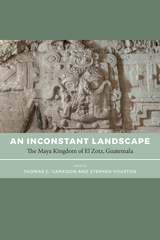 An Inconstant Landscape: The Maya Kingdom of El Zotz, Guatemala
Thomas G. Garrison
University Press of Colorado, 2020 Presenting the results of six years of archaeological survey and excavation in and around the Maya kingdom of El Zotz, An Inconstant Landscape paints a complex picture of a dynamic landscape over the course of almost 2,000 years of occupation. El Zotz was a dynastic seat of the Classic period in Guatemala. Located between the renowned sites of Tikal and El Perú-Waka’, it existed as a small kingdom with powerful neighbors and serves today as a test-case of political debility and strength during the height of dynastic struggles among the Classic Maya.
In this volume, contributors address the challenges faced by smaller polities on the peripheries of powerful kingdoms and ask how subordination was experienced and independent policy asserted. Leading experts provide cutting-edge analysis in varied topics and detailed discussion of the development of this major site and the region more broadly. The first half of the volume contains a historical narrative of the cultural sequence of El Zotz, tracing the changes in occupation and landscape use across time; the second half provides deep technical analyses of material evidence, including soils, ceramics, stone tools, and bone.
The ever-changing, inconstant landscapes of peripheral kingdoms like El Zotz reveal much about their more dominant—and better known—neighbors. An Inconstant Landscape offers a comprehensive, multidisciplinary view of this important but under-studied site, an essential context for the study of the Classic Maya in Guatemala, and a premier reference on the subject of peripheral kingdoms at the height of Maya civilization.
Contributors: Timothy Beach, Nicholas Carter, Ewa Czapiewska-Halliday, Alyce de Carteret, William Delgado, Colin Doyle, James Doyle, Laura Gámez, Jose Luis Garrido López, Yeny Myshell Gutiérrez Castillo, Zachary Hruby, Melanie Kingsley, Sheryl Luzzadder-Beach, Cassandra Mesick Braun, Sarah Newman, Rony Piedrasanta, Edwin Román, and Andrew K. Scherer
Incontinence
Susan Hahn
University of Chicago Press, 1993 Charged with sensuality, ferocity, and despair, this sequence of poems follows the progress of a central character's passionate romance. Hahn's fevered book of human emotions becomes a powerful rumination on love, aging, and mutability in general.
"Stitching together tropes about writing and technique, as well as hunting and the loss of sexual innocence, [Hahn] marks and exploits the body with surgical precision in order to explore the peripheries of the personal lyric. She wants to take poetry to the most tangible and sensual extremes. It's often uncomfortable, and yet as often results in a poetry of generous, piercing honesty, as if (to rewrite Bradford) it's by the body we are 'plainly told.'"—David Baker, Poetry
"Incontinence has an enormous, almost epic sweep."—Chicago Sun-Times
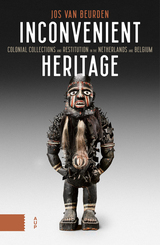 Inconvenient Heritage: Colonial Collections and Restitution in the Netherlands and Belgium
Jos van Beurden
Amsterdam University Press, 2022 The discussion about objects, ancestral remains and archives from former colonial territories is becoming increasingly heated. Over the centuries, a multitude of items – including a cannon of the King of Kandy, power-objects from DR Congo, Benin bronzes, Javanese temple statues, Maori heads and strategic documents – has ended up in museums and private collections in Belgium and the Netherlands by improper means. Since gaining independence, former colonies have been calling for the return of their lost heritage. As continued possession of these objects only grows more uncomfortable, governments and museums must decide what to do. How did these objects get here? Are they all looted, and how can we find out? How does restitution work in practice? Are there any appealing examples? How do other former colonial powers deal with restitution? Do former colonies trust their intentions? The answers to these questions are far from unambiguous, but indispensable for a balanced discussion.
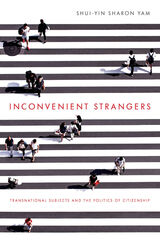 Inconvenient Strangers: Transnational Subjects and the Politics of Citizenship
Shui-yin Sharon Yam
Ohio State University Press, 2019 Winner, 2021 CCCC Outstanding Book Award
Inconvenient Strangers: Transnational Subjects and the Politics of Citizenship draws attention to how intersecting networks of power—particularly race and ethnicity, gender, and social class—marginalize transnational subjects who find themselves outside a dominant citizenship that privileges familiarity and socioeconomic and racial superiority. In this study of how neoliberal ideas limit citizenship for marginalized populations in Hong Kong, Shui-yin Sharon Yam examines how three transnational groups—mainland Chinese maternal tourists, Southeast Asian migrant domestic workers, and South Asian permanent residents—engage with the existing citizenry and gain recognition through circulating personal narratives.
Coupling transnational feminist studies with research on emotions, Yam analyzes court cases, interviews, social media discourse, and the personal narratives of Hong Kong’s marginalized groups to develop the concept of deliberative empathy—critical empathy that prompts an audience to consider the structural sources of another’s suffering while deliberating one’s own complicity in it. Yam argues that storytelling and familial narratives can promote deliberative empathy among the audience as both a political and ethical response—carrying the affective power to jolt the dominant citizenry out of their usual xenophobic attitudes and ultimately prompt them to critically consider the human conditions they share with the marginalized and move them toward more ethical coalitions.
 Incorporating the Digital Commons: Corporate Involvement in Free and Open Source Software
Benjamin J. Birkinbine
University of Westminster Press, 2020 The concept of ‘the commons’ has been used as a framework to understand resources shared by a community rather than a private entity, and it has also inspired social movements working against the enclosure of public goods and resources. One such resource is free (libre) and open source software (FLOSS). FLOSS emerged as an alternative to proprietary software in the 1980s. However, both the products and production processes of FLOSS have become incorporated into capitalist production. For example, Red Hat, Inc. is a large publicly traded company whose business model relies entirely on free software, and IBM, Intel, Cisco, Samsung, Google are some of the largest contributors to Linux, the open-source operating system. This book explores the ways in which FLOSS has been incorporated into digital capitalism. Just as the commons have been used as a motivational frame for radical social movements, it has also served the interests of free-marketeers, corporate libertarians, and states to expand their reach by dragging the shared resources of social life onto digital platforms so they can be integrated into the global capitalist system. The book concludes by asserting the need for a critical political economic understanding of the commons that foregrounds (digital) labour, class struggle, and uneven power distribution within the digital commons as well as between FLOSS communities and their corporate sponsors.
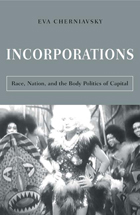 Incorporations: Race, Nation, and the Body Politics of Capital
Eva Cherniavsky
University of Minnesota Press, 2006 An exploration of race, Hollywood, and the commodification of the body Incorporations offers a new way of thinking about issues of race, bodies, and commodity culture. Moving beyond the study of identity and difference in media, Eva Cherniavsky asserts that race can be understood as a sign of the body’s relation to capital. In Incorporations, Cherniavsky interrogates the interplay of nationalism, colonialism, and capitalism in the production of racial embodiment. Testing the links between race and capital, Incorporations examines how media culture transmutes white bodies into commodity-images in such films as Blonde Venus, A Touch of Evil, and Fargo, in the television series The Simpsons, and in the fiction of Octavia Butler and Leslie Marmon Silko. Cherniavsky posits an innovative approach to whiteness studies that does not focus on the emancipatory possibilities of cross-racial identification.Working with the tools of critical race theory as well as postcolonial and cultural studies, Cherniavsky demonstrates how representations of racial embodiment have evolved, and suggests that “race” is the condition of exchangeable bodies under capital.
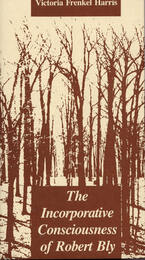 The Incorporative Consciousness of Robert Bly
Victoria Frenkel Harris
Southern Illinois University Press, 1991
Victoria Frenkel Harris traces the aesthetic journey of poet Robert Bly from his early structured works of mystical imagery and lyrical landscapes to his recent explorations of intimate relationships and male socialization.
Examining the various ways Bly’s prose poems articulate his opposition to the Vietnam War and his recent writings manipulate more formal patterns in detailing the intricacies of human relationships, Harris labels this evolution in form, subject, and imagery the incorporative consciousness, incorporative because it assimilates Jungian psychological categories, international poetic traditions, and a compelling breadth of topics.
Harris relies in part on contemporary feminist theory to throw revealing new light on Bly’s recent works. Though sympathetic to Bly, Harris finds that—in spite of his affirmation of the interaction of psychic, creative, and intellectual energies in both sexes—the poet’s later, erotic poems tend to objectify women in counterproductive ways. Bly’s idealization of woman as a Jungian universal, Harris contends, can blind him toward actual women.
Harris is at her best as she delimits with balance and precision the full complexity of the poet’s work.
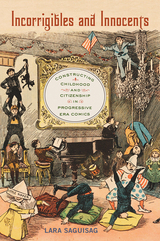 Incorrigibles and Innocents: Constructing Childhood and Citizenship in Progressive Era Comics
Saguisag, Lara
Rutgers University Press, 2019 Nominated for Eisner Award | Winner of the 2018 Ray and Pat Browne Award | Winner of the Charles Hatfield Book Prize from the CSS
Histories and criticism of comics note that comic strips published in the Progressive Era were dynamic spaces in which anxieties about race, ethnicity, class, and gender were expressed, perpetuated, and alleviated. The proliferation of comic strip children—white and nonwhite, middle-class and lower class, male and female—suggests that childhood was a subject that fascinated and preoccupied Americans at the turn of the century. Many of these strips, including R.F. Outcault’s Hogan’s Alley and Buster Brown, Rudolph Dirks’s The Katzenjammer Kids and Winsor McCay’s Little Nemo in Slumberland were headlined by child characters. Yet no major study has explored the significance of these verbal-visual representations of childhood. Incorrigibles and Innocents addresses this gap in scholarship, examining the ways childhood was depicted and theorized in late nineteenth- and early twentieth-century comic strips. Drawing from and building on histories and theories of childhood, comics, and Progressive Era conceptualizations of citizenship and nationhood, Lara Saguisag demonstrates that child characters in comic strips expressed and complicated contemporary notions of who had a right to claim membership in a modernizing, expanding nation.
 Increase And Multiply: Governing Cultural Reproduction In Early Modern England
David Glimp
University of Minnesota Press, 2003 A wide-ranging study of the ideology of population control in early modern England Across the sixteenth and seventeenth centuries, a growing notion of the value of a large populace created a sense of urgency about reproduction; accordingly, a wide array of English writers of the time voiced the need not merely to add more people but also to ensure that England had an abundance of the right kinds of people. This need, in turn, called for a variety of institutions to train—and thus make, through a kind of nonbiological procreation—pious, enterprising, and dutiful subjects. In Increase and Multiply, David Glimp examines previously unexplored links between this emergent demographic mentality and Renaissance literature. Glimp’s analysis centers on humanist pedagogy as a mechanism for creating people capable of governing both themselves and others. Acknowledging the ways in which authors such as Sidney, Shakespeare, and Milton advance their own work by appealing to this vision, Glimp argues that their texts allow us to read the scope and limits of this generative ideal, its capacity to reinforce order and to become excessive and destabilizing. His work provides unprecedented insight into the role of fantasies of nonbiological reproduction in early modern political theory, government practice, and literary production.
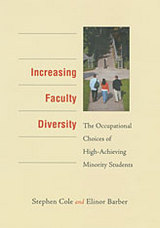 Increasing Faculty Diversity: The Occupational Choices of High-Achieving Minority Students
Stephen Cole and Elinor Barber
Harvard University Press, 2003 In recent years, colleges have successfully increased the racial diversity of their student bodies. They have been less successful, however, in diversifying their faculties. This book identifies the ways in which minority students make occupational choices, what their attitudes are toward a career in academia, and why so few become college professors.
Working with a large sample of high-achieving minority students from a variety of institutions, the authors conclude that minority students are no less likely than white students to aspire to academic careers. But because minorities are less likely to go to college and less likely to earn high grades within college, few end up going to graduate school. The shortage of minority academics is not a result of the failure of educational institutions to hire them; but of the very small pool of minority Ph.D. candidates. In examining why some minorities decide to become academics, the authors conclude that same-race role models are no more effective than white role models and that affirmative action contributes to the problem by steering minority students to schools where they perform relatively poorly. They end with policy recommendations on how more minority students might be attracted to an academic career.
Increasing Returns and Path Dependence in the Economy
W. Brian Arthur
University of Michigan Press, 1994 This book brings together Professor Arthur’s pioneering article and provide a comprehensive presentation of his exciting vision of an economics that incorporates increasing returns. After a decade of resistance from economists, these ideas are now being widely discussed and adopted, as Kenneth Arrow recounts in his foreword. In fundamental ways they are changing our views of the working economy.
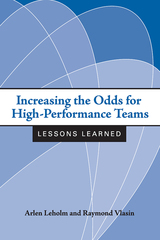 Increasing the Odds for High-Performance Teams: Lessons Learned
Arlen Leholm
Michigan State University Press, 2006 Have you ever wondered why some work teams greatly out-perform others within the same organizational settings? Have you questioned whether work teams from very different sectors of the economy and society achieved a high performance level by using similar means? Have you considered what you or others might do to help eams increase their chances of becoming truly high performing? Increasing the Odds for High-Performance Teams is written for the business leader who is inquisitive but busy—who seeks new lessons about high team performance but wants them to be succinct and efficient.
The book is intended to assist professionals in private, public, and not-for-profit organizations who want to use teams to enhance job performance. Also, it is intended to be helpful to the team members, team leaders, mentors, coaches, and administrators across these sectors who want to diagnose their team and organizational conditions, in order to make improvements.
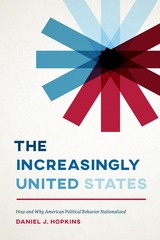 The Increasingly United States: How and Why American Political Behavior Nationalized
Daniel J. Hopkins
University of Chicago Press, 2018 In a campaign for state or local office these days, you’re as likely today to hear accusations that an opponent advanced Obamacare or supported Donald Trump as you are to hear about issues affecting the state or local community. This is because American political behavior has become substantially more nationalized. American voters are far more engaged with and knowledgeable about what’s happening in Washington, DC, than in similar messages whether they are in the South, the Northeast, or the Midwest. Gone are the days when all politics was local.
With The Increasingly United States, Daniel J. Hopkins explores this trend and its implications for the American political system. The change is significant in part because it works against a key rationale of America’s federalist system, which was built on the assumption that citizens would be more strongly attached to their states and localities. It also has profound implications for how voters are represented. If voters are well informed about state politics, for example, the governor has an incentive to deliver what voters—or at least a pivotal segment of them—want. But if voters are likely to back the same party in gubernatorial as in presidential elections irrespective of the governor’s actions in office, governors may instead come to see their ambitions as tethered more closely to their status in the national party.
 The Incredible Afterlives of Dr. Stevenson: One Scientist's Epic Quest for Evidence of Reincarnation, Apparitions, Poltergeists, and Other Matters of the Soul
Jesse Bering
University of Chicago Press The untold story of an iconoclastic scientist: a psychiatrist who dedicated his career to documenting consciousness after death.
While Ian Stevenson (1918–2007) was an academic psychiatrist with a serious demeanor, right down to his three-piece suits and wingtip shoes, he made his name researching an unusual topic for a behavioral scientist: the afterlife. For over four decades, Stevenson traveled the globe investigating cases of reincarnation, apparitions, possessions, and near-death experiences. At the time of his death, Stevenson was widely regarded as one of the most influential figures in parapsychology, a field devoted to psychic phenomena and paranormal experiences.
Set against the colorful backdrop of parapsychology’s rise and fall, from Victorian séances to modern media spectacles, The Incredible Afterlives of Dr. Stevenson captures Stevenson’s relentless quest for evidence of consciousness beyond the grave. Jesse Bering, himself a psychologist, interweaves Stevenson’s research with vivid stories of the larger-than-life characters who shaped his path—from Eileen Garrett, the fearless medium, to Chester Carlson, the inventor of Xerox photocopying and Stevenson’s unlikely patron. Through never-before-seen letters and candid interviews with Stevenson’s surviving family members, readers glimpse the inner turmoil of a scientist struggling to balance his revolutionary ideas with the skepticism of his academic peers as well as those closest to him. Along the way, Bering, a researcher whose own trailblazing work on the psychology of afterlife beliefs had led him to believe it was all just an illusion, is forced to rethink his own worldview. Are psychic phenomena examples of our living brains giving credence to the absurd? Or tantalizing glimmers of life after death?
Equal parts scientific detective story and intimate biography, The Incredible Afterlives of Dr. Stevenson shines a light on a significant figure whose life and work have not yet been fully explored. Bering boldly confronts readers with the complicated legacy of a man who many see as a Galileo-like rebel with groundbreaking ideas, ones that still have the power to upend everything we know about what it means to be human.
The Incredible Band of John Philip Sousa
Paul E. Bierley
University of Illinois Press, 2010 John Philip Sousa (1854-1932) is an American icon. Most famous for his military marches, the composer-bandmaster led a disciplined group of devoted musicians on numerous American tours and around the world, shaping a new cultural landscape. Paul E. Bierley documents every aspect of the "March King's" band: its history, its star performers, its appearances on recordings and radio, and the problems they faced on their 1911 trip around the world. Enhanced by more than 120 images and photographs, The Incredible Band of John Philip Sousa also contains six statistical appendixes detailing where the band played, a complete list of musicians, instrumentation of the band, program listings, and a discography
The Incredible Scream Machine: A History of the Roller Coaster
Robert Cartmell
University of Wisconsin Press, 1987 In 1984 America celebrated the one hundredth anniversary of the first successful roller coaster device: La Marcus A. Thompson’s switchback railway, erected at Coney Island. Robert Cartmell examines every phase of roller coaster history, from the use of the roller coaster by Albert Einstein to demonstrate his theory of physics, to John Allen’s use of psychology in designing one.
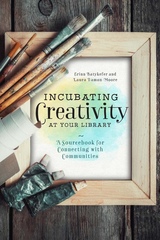 Incubating Creativity at Your Library: A Sourcebook for Connecting with Communities
Laura Damon-Moore
American Library Association, 2019 Creativity needs a platform. As technology consultant David Weinberger puts it, “A platform provides resources that lets other people build things.” The library is an ideal platform, and in this book Batykefer and Damon-Moore, creators of the Library as Incubator Project, share the experiences of numerous creative library workers and artists who are making it happen. Their stories will show you how to move beyond merely responding to community needs towards actively building a platform with your community. And best of all, you don’t need to start from scratch—rather, you amplify what’s already working. Filled with ideas and initiatives that can be customized to suit your library and its community, this book - discusses the four elements (Resources, Invitations, Partnerships & Engagement, and Staff) and the two lenses (Community-Led and Evaluation) of the Creative Library platform;
- outlines six steps for surveying your community’s artistic landscape;
- gives methods for expanding partnerships and connections with individuals and organizations through exploration, hands-on learning, and engagement with the community;
- shares perspectives on the “ideal library” from several artists, with three examples of artist-in-residence programs;
- offers examples of community invitations in action, such as the Pittsburgh Fiberarts Guild workshops on creating flowers using recycled materials;
- shows how to use “orphan photos” from your archives for creative inspiration;
- advises on using qualitative evaluations to effectively “weed” your initiatives; and
- shares tips for encouraging library staff to express their creativity, turning avocations into library initiatives like Handmade Crafternoons, the Yahara Music Library, or BOOKLESS.
By building on existing elements at your library and filling in the gaps with community-driven additions, your library can be a space that cultivates creativity in both its users and staff.
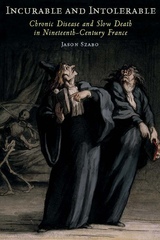 Incurable and Intolerable: Chronic Disease and Slow Death in Nineteenth-Century France
Jason Szabo
Rutgers University Press, 2009 Terminal illness and the pain and anguish it brings are experiences that have touched millions of people in the past and continue to shape our experience of the present. Hospital machines that artificially support life and monitor vital signs beg the question: Is there not anything that medical science can offer as solace? Incurable and Intolerable looks at the history of incurable illness from a variety of perspectives, including those of doctors, patients, families, religious counsel, and policy makers. This compellingly documented and well-written history illuminates the physical, emotional, social, and existential consequences of chronic disease and terminal illness, and offers an original look at the world of palliative medicine, politics, religion, and charity. Revealing the ways in which history can shed new light on contemporary thinking, Jason Szabo encourages a more careful scrutiny of today's attitudes, policies, and practices surrounding "imminent death" and its effects on society.
 The Incurables
Mark Brazaitis
University of Notre Dame Press, 2012
In his latest collection of literary fiction, Mark Brazaitis evokes with sympathy, insight, and humor the lives of characters in a small Ohio town. The ten short stories of The Incurables limn the mental landscape of people facing conditions they believe are insolvable, from the oppressive horrors of mental illness to the beguiling and baffling complexities of romantic and familial love.
In the book’s opening story, “The Bridge,” a new sheriff must confront a suicide epidemic as well as his own deteriorating mental health. In “Classmates,” a man sets off to visit the wife of a classmate who has killed himself. Is he hoping to write a story about his classmate or to observe the aftermath of what his own suicide attempt, if successful, would have been like? In the title story, a down-on-his-luck porn actor returns to his hometown and winds up in the mental health ward of the local hospital, where he meets a captivating woman. Other stories in the collection include “A Map of the Forbidden,” about a straight-laced man who is tempted to cheat on his wife after his adulterous father dies, and “The Boy behind the Tree,” about a problematic father-son relationship made more so by the arrival on the scene of a young man the son’s age. In “I Return,” a father narrates a story from the afterlife, discovering as he does so that he is not as indispensable to his family as he had believed.
“The beautiful stories in The Incurables, like the walking wounded who inhabit them, haunt the borderline between the land of the dead and the land of the living, where the bridge and remedy, as Mark Brazaitis knows well, is love. The lives within are urgently affecting, yielded up with strength and wit, with power earned the hard way, and most of all with wisdom.” —Janet Peery, author of Alligator Dance, The River Beyond the World, and What the Thunder Said
"The Incurables is a wonderful collection of stories about life, mental illness, and the human condition. The stories are wry, compassionate, and provide a deep understanding of the strengths and frailties of human nature and the ways in which individuals play out the hard cards they are dealt. Or don't." —Kay Redfield Jamison, author of An Unquiet Mind
 Indagaciones: Introducción a los estudios culturales hispanos
Mary Ann Dellinger, Ellen Mayock, and Beatriz Trigo
Georgetown University Press, 2019 Indagaciones is a postintermediate Spanish textbook that introduces students to a wide variety of visual, audio, and written texts and teaches critical textual analysis in Spanish through a cultural studies approach. Deepening and enhancing students’ knowledge of the expression of culture within Latin America, Spain, and U.S.-Latin@ areas, Indagaciones gives students ample opportunities to practice reading, listening, and viewing cultural content and textual analysis, including understanding culture, expanding their vocabulary, and learning how to engage in analysis. Students will gain the skills to critically approach a cultural text, synthesize its main points, and prepare multimodal analyses all within a communicative context. This book provides the linguistic scaffolding necessary to help L2 students advance beyond the intermediate language level and heritage students progress by providing glosses, conceptual discussions, and grammatical information while introducing students to key texts from around the Spanish-speaking world.
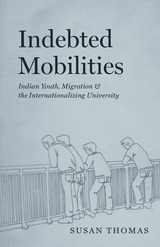 Indebted Mobilities: Indian Youth, Migration, and the Internationalizing University
Susan Thomas
University of Chicago Press, 2024 An ethnographic rendering of overseas students' fraught encounters studying at an American public university.
As states have reduced funding to public universities, many of those institutions have turned to overseas students as a vital, alternative source of revenue. Students from India have especially been seen as among the most desirable populations, as they’re typically fluent in English and overwhelmingly enroll in professional fields deemed critical to the knowledge economy. The large numbers of these youth migrating for their education tend to be viewed as a shining example of the value of the contemporary global university and how it enables ambitious people to secure opportunities not available to them in their home nation.
However, a deeper examination of these young people’s encounters reveals a more complicated story than glossy brochures and paeans to American higher education would suggest. Indebted Mobilities draws on Susan Thomas’s close shadowing of a group of middle-class Indian migrant men who attended a public university in New York just as the institution sought to “internationalize” its campus in the wake of ongoing withdrawal of state funding. Thomas takes the reader along with the young men as they study, work, and socialize, pursuing the successful futures they believed to be promised when they migrated for an American education. All the while, they must face their marginalization as they become enmeshed in the fraught inclusion politics of contemporary university life in the United States. At the heart of these encounters is these students’ relationship to debt—not just material ones that include student loans, but moral and affective debts as well. This indebtedness, which keeps them tied to both India and the United States, is meaningful to how Indian middle-class men make sense of their experiences as student-migrants. These youth long to be modern “men of the world.” Yet Thomas illuminates how the complex realities that arise for them, informed by the logic of US exceptionalism, force a reckoning with their anxieties about successful masculinities and the precarity of being drawn into the global knowledge economy as indebted migrants.
InDEBTed to Intervene: Critical Lessons in Debt, Communication, Art, and Theoretical Practice
Oliver Vodeb and Nikola Janovic Kolenc
Intellect Books, 2013 As governments and individuals struggle with growing indebtedness, the topic of debt itself—what it is, what it means, and how we understand it—has never been more salient. This collection brings together a range of contributions from many disciplines and around the world to consider debt through various lenses, including design, art, technology, political economy, social justice, surveillance, protest, education, urban and virtual spaces, and more. Aiming not just to advance scholarship, but to push ahead real change in the world, the book offers not only analytical insights and conceptual apparatuses, but practical tools and radical inspirations as well. A powerful analysis of a concept that has become ever more central to everyday society, Indebted to Intervene will be essential reading for scholars and citizens alike.
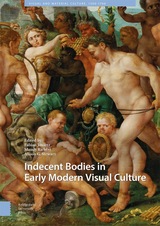 Indecent Bodies in Early Modern Visual Culture
Fabian Jonietz
Amsterdam University Press, 2023 The life-like depiction of the body became a central interest and defining characteristic of the European Early Modern period that coincided with the establishment of which images of the body were to be considered ‘decent’ and representable, and which disapproved, censored, or prohibited. Simultaneously, artists and the public became increasingly interested in the depiction of specific body parts or excretions. This book explores the concept of indecency and its relation to the human body across drawings, prints, paintings, sculptures, and texts. The ten essays investigate questions raised by such objects about practices and social norms regarding the body, and they look at the particular function of those artworks within this discourse. The heterogeneous media, genres, and historical contexts north and south of the Alps studied by the authors demonstrate how the alleged indecency clashed with artistic intentions and challenges traditional paradigms of the historiography of Early Modern visual culture.
indecent hours
James Fujinami Moore
Four Way Books, 2022 For award-winning poet James Fujinami Moore, the past is never past. In this brutal debut, sensual, political, and imagined worlds collide, tracing a history of diaspora and trauma that asks: what do we do in the aftermath of violence, and why do we long to inflict it? From Vegas boxing rings and the restless sands of Manzanar to the scrolling horrors of a Facebook feed, Moore’s poems trace over intimate details with surprising humor, fierce eroticism, and a restless eye.
 Indecent Liberties
Robert Schmuhl
University of Notre Dame Press, 2000 "In Indecent Liberties, Robert Schmuhl wisely suggests that we remember the value of moderation. But, happily, he is immoderate when it comes to offering us intelligence, sharp insight, and independence of mind. At a time when so much commentary lives on polarization and exaggeration, Schmuhl is a national treasure. This book is a trove of some of his best thinking and writing." —E. J. Dionne, Jr., Syndicated Columnist, Senior Fellow at the Brookings Institution, and author of Why Americans Hate Politics and They Only Look Dead: Why Progressives Will Dominate the Next Political Era
“Professor Schmuhl is one of the nation’s most insightful observers of the media, politics, and government.” —Marc Racicot, Governor of Montana
This series of eight provocative essays examines why Americans have a penchant for going to extremes in their arts, popular culture, politics, social movements, and other aspects of life. Robert Schmuhl considers historical examples (the hunting of the buffalo in the West, Prohibition, business ventures in the Gilded Age) but concentrates on contemporary subjects, including the emphasis on what shocks the audience as entertainment today, tensions among specific groups, the decline of private life, and the excesses of news media coverage in the O.J. Simpson and Bill Clinton/Monica Lewinsky stories.
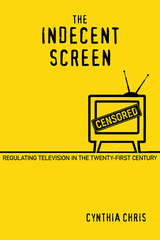 The Indecent Screen: Regulating Television in the Twenty-First Century
Chris, Cynthia
Rutgers University Press, 2019 The Indecent Screen explores clashes over indecency in broadcast television among U.S.-based media advocates, television professionals, the Federal Communications Commission, and TV audiences. Cynthia Chris focuses on the decency debates during an approximately twenty-year period since the Telecommunications Act of 1996, which in many ways restructured the media environment. Simultaneously, ever increasing channel capacity, new forms of distribution, and time-shifting (in the form of streaming and on-demand viewing options) radically changed how, when, and what we watch. But instead of these innovations quelling concerns that TV networks were too often transmitting indecent material that was accessible to children, complaints about indecency skyrocketed soon after the turn of the century. Chris demonstrates that these clashes are significant battles over the role of family, the role of government, and the value of free speech in our lives, arguing that an uncensored media is so imperative to the public good that we can, and must, endure the occasional indecent screen.
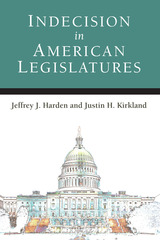 Indecision in American Legislatures
Jeffrey J. Harden and Justin H. Kirkland
University of Michigan Press, 2018 Lawmaking provides many opportunities for proposals to be altered, amended, tabled, or stopped completely. The ideal legislator should assess evidence, update his or her beliefs with new information, and sometimes be willing to change course. In practice, however, lawmakers face criticism from the media, the public, and their colleagues for “flip-flopping.” Legislators may also only appear to change positions in some cases as a means of voting strategically.
This book presents a systematic examination of legislative indecision in American politics. This might occur via “waffling”—where a legislator cosponsors a bill, then votes against it at roll call. Or it might occur when a legislator votes one way on a bill, then switches her vote to the other side. In Indecision in American Legislatures, Jeffrey J. Harden and Justin H. Kirkland develop a theoretical framework to explain indecision itself, as well as the public’s attitudes toward indecision. They test their expectations with data sources from American state legislatures, the U.S. Congress, and survey questions administered to American citizens. Understanding legislative indecision from both the legislator and citizen perspectives is important for discussions about the quality of representation in American politics.
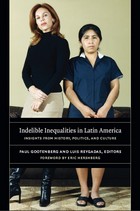 Indelible Inequalities in Latin America: Insights from History, Politics, and Culture
Paul Gootenberg and Luis Reygadas, eds.
Duke University Press, 2010 Since the earliest years of European colonialism, Latin America has been a region of seemingly intractable inequalities, marked by a stark divide between the haves and the have-nots. This collection illuminates the diverse processes that have combined to produce and reproduce inequalities in Latin America, as well as some of the implications of those processes for North Americans. Anthropologists, cultural critics, historians, and political scientists from North and South America offer new and varied perspectives, building on the sociologist Charles Tilly’s relational framework for understanding enduring inequalities. While one essay is a broad yet nuanced analysis of Latin American inequality and its persistence, another is a fine-grained ethnographic view of everyday life and aspirations among shantytown residents living on the outskirts of Lima. Other essays address topics such as the initial bifurcation of Peru’s healthcare system into one for urban workers and another for the rural poor, the asymmetrical distribution of political information in Brazil, and an evolving Cuban “aesthetics of inequality,” which incorporates hip-hop and other transnational cultural currents. Exploring the dilemmas of Latin American inequalities as they are playing out in the United States, a contributor looks at new immigrant Mexican farmworkers in upstate New York to show how undocumented workers become a vulnerable rural underclass. Taken together, the essays extend social inequality critiques in important new directions. Contributors
Jeanine Anderson
Javier Auyero
Odette Casamayor
Christina Ewig
Paul Gootenberg
Margaret Gray
Eric Hershberg
Lucio Renno
Luis Reygadas
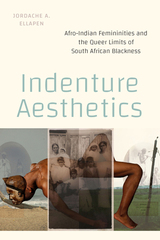 Indenture Aesthetics: Afro-Indian Femininities and the Queer Limits of South African Blackness
Jordache A. Ellapen
Duke University Press, 2025 In Indenture Aesthetics, Jordache A. Ellapen examines the visual and performance art practices of feminist, queer, femme, and gender-nonconforming Afro-Indian and South African black artists to understand the paradoxes of freedom in contemporary South Africa. Tracing the afterlife of apartheid-era racial categories and revisiting Bantu Stephen Biko’s Black Consciousness, Ellapen theorizes South African blackness through the Indian Ocean World, showing how the development of an Afro-Indian identity after generations of indentured labor and segregation troubles persistent racial hierarchies. Staging unexpected encounters between artists such as Sharlene Khan, Mohau Modisakeng, Lebohang Kganye, and Reshma Chhiba, he analyzes how their works challenge these racial categories to create new imaginaries of freedom. Situated in a context in which the authentic (hetero)normative black subject of the post-apartheid state is bracketed from other formulations of blackness, these artists' aesthetic practices, alongside those of other artists like Ellapen himself, disrupt desires for national belonging and catalyze alternative and transgressive politics and subjects. By rethinking the relationship between blackness, Afro-Indianness, and Africanness, Ellapen highlights the role of the aesthetic in crafting a blueprint for coalitional building across difference in contemporary South Africa.
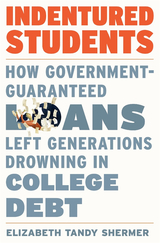 Indentured Students: How Government-Guaranteed Loans Left Generations Drowning in College Debt
Elizabeth Tandy Shermer
Harvard University Press, 2021 The untold history of how America’s student-loan program turned the pursuit of higher education into a pathway to poverty.
It didn’t always take thirty years to pay off the cost of a bachelor’s degree. Elizabeth Tandy Shermer untangles the history that brought us here and discovers that the story of skyrocketing college debt is not merely one of good intentions gone wrong. In fact, the federal student loan program was never supposed to make college affordable.
The earliest federal proposals for college affordability sought to replace tuition with taxpayer funding of institutions. But Southern whites feared that lower costs would undermine segregation, Catholic colleges objected to state support of secular institutions, professors worried that federal dollars would come with regulations hindering academic freedom, and elite-university presidents recoiled at the idea of mass higher education. Cold War congressional fights eventually made access more important than affordability. Rather than freeing colleges from their dependence on tuition, the government created a loan instrument that made college accessible in the short term but even costlier in the long term by charging an interest penalty only to needy students. In the mid-1960s, as bankers wavered over the prospect of uncollected debt, Congress backstopped the loans, provoking runaway inflation in college tuition and resulting in immense lender profits.
Today 45 million Americans owe more than $1.5 trillion in college debt, with the burdens falling disproportionately on borrowers of color, particularly women. Reformers, meanwhile, have been frustrated by colleges and lenders too rich and powerful to contain. Indentured Students makes clear that these are not unforeseen consequences. The federal student loan system is working as designed.
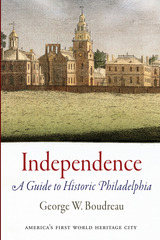 Independence: A Guide to Historic Philadelphia
George Boudreau
Westholme Publishing, 2012 An Intimate Illustrated Tour of America’s Most Iconic Colonial City From its beginning as a haven for English Quakers in the colony William Penn founded in 1681, the city of Philadelphia prospered, becoming a leading port in the English Atlantic World and a center of American culture and politics. Grounded in enlightenment ideals, Philadelphia attracted diverse settlers from the Old and New Worlds. By the 1760s, a cash-strapped England set its sights on taxing the American colonies to pay its debts. Philadelphia assumed roles as a center of revolutionary protests, a meeting place for colonial delegates to decide on independence and a new form of government, and, finally, the first capital of the United States of America. Richly illustrated with both new photography and an amazing array of early American art drawn from the collections of some of America’s leading museums and archives, Independence: A Guide to Historic Philadelphia reveals the stories of the persons who experienced the early years of the new nation in America’s first capital. Based on meticulous research, Independence walks its readers through the lives of the residents and visitors of the revolutionary city, and through the streets and buildings that they knew. Famous names are here: Franklin, Jefferson, Adams, Washington. But Independence also focuses on the fascinating stories of less famous American founders. Enslaved and free, women and men, rich and poor, patriot and Tory, shaped Philadelphia’s and America’s experience in the revolutionary era, and all have their say here. In addition, this guide tells the stories of the iconic buildings and streets where America was founded. The book explores the dozens of buildings that make up Independence National Historical Park and connects these with neighboring sites that are also intimately associated with the story of America’s birth. Independence will enrich the experience of those who travel to these historic sites, as well as offer a vivid and fascinating story for the general reader.
Independence: A Novel
Evan Balkan
University of Wisconsin Press, 2021 Paris, South Dakota, summer 1976. Fifteen-year-old Lilly is crushed by the news that her mother’s boyfriend will become her father, making her feel lonelier and more invisible than ever. That same morning, she runs into Lee, a handsome and mysterious stranger. It isn’t long before she takes off with him, deeming it a grand adventure across the Great Plains.
New Orleans, Louisiana, autumn 1992. Fifteen-year-old Lindsey has just learned that her father is not, in fact, dead—but will be shortly if the state of South Dakota has its way. As she and her mother embark on a long bus ride north, Lilly slowly opens up, revealing to her daughter the true story of her past: why she and Lee went on the run, how Lindsey came to be, and the reason Lee is about to be executed for a crime of passion. Independence is an evocative story of true love, youthful mistakes, desperation, and breath-taking betrayal.
Independence and Revolution in Spanish America: Perspectives and Problems
Edited by Eduardo Posada-Carbo and Anthony McFarlane
University of London Press, 1999 The essays in this volume re-examine, from a number of different angles the process of Independence in Spanish America. The focus is to a large extent on the consequences of the wars of Independence for the newly established republics. However the first section deals with a critical review of the historiography the ‘revolutionary’ nature of Independence and the comparative elements of Independence in the Americas. The remainder of the book examines the development of the wars and the impact that Independence had on political instability culture citizenship and the formation of new nations. In addition to general chapters there are individual chapters devoted to New Granada Venezuela Mexico Chile and Argentina.
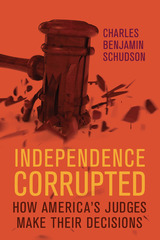 Independence Corrupted: How America's Judges Make Their Decisions
Charles Benjamin Schudson
University of Wisconsin Press, 2018 With experience as both a trial and appellate judge, Charles Benjamin Schudson knows the burdens on judges. With engaging candor, he takes readers behind the bench to probe judicial minds analyzing actual trials and sentencings—of abortion protesters, murderers, sex predators, white supremacists, and others. He takes us into chambers to hear judges forging appellate decisions about life and death, multimillion-dollar damages, and priceless civil rights. And, most significantly, he exposes the financial, political, personal, and professional pressures that threaten judicial ethics and independence.
As political attacks on judges increase, Schudson calls for reforms to protect judicial independence and for vigilance to ensure justice for all. Independence Corrupted is invaluable for students and scholars, lawyers and judges, and all citizens concerned about the future of America's courts.
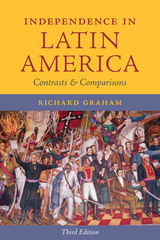 Independence in Latin America: Contrasts and Comparisons
By Richard Graham
University of Texas Press, 2013 In the course of fifteen momentous years, the Spanish- and the Portuguese-American empires that had endured for three centuries came to an end in the mid-1820s. How did this come about? Not all Latin Americans desired such a change, and the independence wars were civil wars, often cruel and always violent. What social and economic groups lined up on one side or the other? Were there variations from place to place, region to region? Did men and women differ in their experience of war? How did Indians and blacks participate and how did they fare as a result? In the end, who won and who lost? Independence in Latin America is about the reciprocal effect of war and social dislocation. It also demonstrates that the war itself led to national identity and so to the creation of new states. These governments generally acknowledged the novel principle of constitutionalism and popular sovereignty, even when sometimes carving out exceptions to such rules. The notion that society consisted of individuals and was not a body made up of castes, guilds, and other corporate orders had become commonplace by the end of these wars. So international politics and military confrontations are only part of the intriguing story recounted here. For this third edition, Richard Graham has written a new introduction and extensively revised and updated the text. He has also added new illustrations and maps.
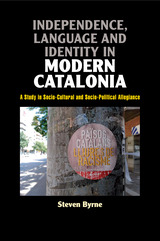 Independence, Language and Identity in Modern Catalonia: A Study in Socio-Cultural and Socio-Political Allegiance
Steven Byrne
Sussex Academic Press, 2022 The processes associated with globalisation have seen Catalonia become an increasingly ethnolinguistically diverse region. A vibrant civic and political movement for an independence has brought a renewed urgency to questions about what it means, personally and politically, to speak or not to speak Catalan or Spanish in 21st century Catalonia. This book examines the attitudes of members of independence organisations toward the Catalan and Spanish languages against the backdrop of the independence movement. A multifaceted socio-political and socio-cultural situation is reflected in what speakers think about the languages, how they perceive them, and how understanding this can reveal the complex configuration of language and identity politics. Research using focus groups and narrative interviews was conducted with members of independence organisations operating in the Catalan city of Girona. Analysis of the data reveals a diversity of attitudes toward both Catalan and Spanish, with both languages being mobilised in diverse combinations for a wide range of purposes. Qualitative methodology revealed the ways in which Catalan and Spanish are currently being practised, and the symbolic and functional role the languages play in articulating a sense of modern-day Catalan identity. Respondents indicate that, against the backdrop of the independence process in the region, globalisation and migration, bilingualism and multilingualism, have become highly valued in modern Catalonia for a myriad of different reasons. Research findings bring to the fore the complex matrix of political, ethnic, and linguistic allegiance which has important implications for similar national independence situations in the rest of the world.
The Independence of the Media and its Regulatory Agencies: Shedding New Light on Formal and Actual Independence against the National Context
Edited by Wolfgang Schulz, Peggy Valcke, and Kristina Irion
Intellect Books, 2013 Media independence is vital for media democracies, and so is the independence of the regulatory bodies governing it. The Independence of the Media and its Regulatory Agencies explores the complex relationship between media governance and independence of media regulatory authorities within media systems within Europe, which form part of the wider framework in which media’s independence may flourish or fade. Based on research in more than forty countries, the contributions analyze the independence of regulators from different perspectives and draw links between social, financial, and legal traditions and frameworks.
 Independent Africa: The Challenge to the Legal Profession
L. C. B. Gower
Harvard University Press "My intention [is] to provide a frank criticism of the British colonial legacies to countries which I have come to love and admire and a sincere unsycophantic tribute to those who are now struggling with the problems flowing from these legacies."
In this book, an expanded version of The Oliver Wendell Holmes Lectures he delivered at Harvard University in 1966, Mr. Gower first looks at some of the legacies of colonialism inherited by those nations of Tropical Africa which recently gained independence from Britain: Nigeria, Ghana, Sierra Leone, The Gambia, Kenya, Uganda, and Tanzania. These various legacies include arbitrary national boundaries imposed long before independence; British-style education, government, civil service, military forces, and police; respect for the rule of law (and a residual contempt for it as a result of colonial associations); underdeveloped and unbalanced economies; hostility toward the West, including American "dollar-imperialism," and a hypersensitivity to criticism from that quarter.
Mr. Gower continues with an assessment of what has happened to these legacies since independence and what seems likely to happen to them in the next few decades. His central concern is the challenge thus implied for the indigenous legal professions, but his study has far wider implications.
In conclusion Mr. Gower describes how the legal professions were organized at the time of independence in the various countries and what progress has been made in producing the kinds of lawyers needed to solve the urgent problems these countries face. He suggests what the United States can and should-and occasionally what it should not-do to help.
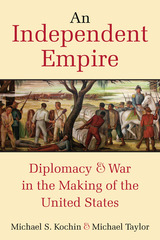 An Independent Empire: Diplomacy & War in the Making of the United States
Michael S. Kochin and Michael Taylor
University of Michigan Press, 2020 Foreign policies and diplomatic missions, combined with military action, were the driving forces behind the growth of the early United States. In an era when the Old and New Worlds were subject to British, French, and Spanish imperial ambitions, the new republic had limited diplomatic presence and minimal public credit. It was vulnerable to hostile forces in every direction. The United States could not have survived, grown, or flourished without the adoption of prescient foreign policies, or without skillful diplomatic operations.
An Independent Empire shows how foreign policy and diplomacy constitute a truly national story, necessary for understanding the history of the United States. In this lively and well-written book, episodes in American history—such as the writing and ratification of the Constitution, Henry Clay’s advocacy of an American System, Pinckney’s Treaty with Spain, and the visionary but absurd Congress of Panama—are recast as elemental aspects of United States foreign and security policy.
An Independent Empire tells the stories of the people who defined the early history of America’s international relationships. Throughout the book are brief, entertaining vignettes of often-overlooked intellectuals, spies, diplomats, and statesmen whose actions and decisions shaped the first fifty years of the United States. More than a dozen bespoke maps illustrate that the growth of the early United States was as much a geographical as a political or military phenomenon.
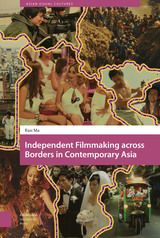 Independent Filmmaking across Borders in Contemporary Asia
Ran Ma
Amsterdam University Press, 2020 Independent Filmmaking across Borders in Contemporary Asia examines an array of auteur-driven fiction and documentary independent film projects that have emerged since the turn of the millennium from East and Southeast Asia, a strand of transnational filmmaking that converges with Asia’s vibrant yet unevenly developed independent film movements amidst global neoliberalism. These projects bear witness to and are shaped by the ongoing historical processes of inter-Asia interaction characterized by geopolitical realignment, migration, and population displacement. This study threads together case studies of internationally acclaimed filmmakers, artists, and collectives such as Zhang Lu, Kuzoku, Li Ying, Takamine Go, Yamashiro Chikako, and Midi Z, all of whose transborder journeys and cinematic imaginations disrupt static identity affiliations built upon national, ethnic, or cultural differences. This border-crossing filmmaking can be viewed as both an aesthetic practice and a political act, reframing how people, places, and their interconnections can be perceived — thereby opening up possibilities to reimagine Asia and its connections to globalization.
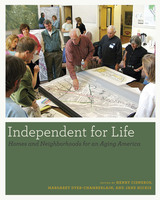 Independent for Life: Homes and Neighborhoods for an Aging America
Edited by Henry Cisneros, Margaret Dyer-Chamberlain, and Jane Hickie
University of Texas Press, 2012 Do you want to age independently in your own home and neighborhood? Staying home, aging in place, is most people's preference, but most American housing and communities are not adapted to the needs of older people. And with the fastest population growth among people over 65, finding solutions for successful aging is important not only for individual families, but for our whole society. In Independent for Life, former HUD Secretary Henry Cisneros and a team of experts on aging, architecture, construction, health, finance, and politics assess the current state of housing and present new possibilities that realistically address the interrelated issues of housing, communities, services, and financial concerns. Independent for Life covers a wide range of smart solutions, including remodeling current housing and building new homes for accessibility and safety, retrofitting existing neighborhoods to connect needed services and amenities, and planning new communities that work well for people of all ages. Case studies show how the proposals can be implemented. The authors offer action plans for working with policy makers at local, state, and national levels to address the larger issues of aging in place, including family financial security, real estate markets, and the limitations of public support. Lists of essential resources, including a detailed "to do" list of aging in place priorities and an individual home assessment, complete the volume.
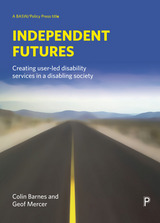 Independent Futures: Creating User-Led Disability Services in a Disabling Society
Colin Barnes and Geof Mercer
Bristol University Press, 2006 The number of disability related support services controlled and run by disabled people themselves has increased significantly in the UK and internationally over the past forty years. As a result, greater user involvement in service provision and delivery is a key priority for many western Governments. This book provides the first comprehensive review and analysis of these developments in the UK.Drawing on evidence from a range of sources, including material from the first national study of user-controlled services, this book provides a critical evaluation of the development and organisation of user-controlled services in the UK and identifies the principal forces - economic, political and cultural - that influence and inhibit their further development. It summarises and discusses the policy implications for the future development of services and includes an up-to-date and comprehensive literature and research review."Independent futures" is essential reading for academics and students on a range of courses including: health and social care; social work; allied health professions, such as nursing, occupational therapy and speech therapy; social policy; sociology; and psychology. It will also be of interest to practitioners and policy makers who need a reliable overview of current policy and critical analysis of key issues affecting future policy and practice.
Independent Historical Societies: An Enquiry into Their Research and Publication Functions and Their Financial Future
Walter Muir Whitehill
Harvard University Press In the course of his exploration of independent historical societies, Walter Whitehill has visited private and public institutions throughout the country, finding both a diversity of forms and a unity of purpose. The author’s verve and candor make his book a stimulating picture of these societies and their fundamental contribution to American historical scholarship. His insights into developing trends will help to define their role and to shape their future course; his authoritative treatment of the present context provides a basis for closer collaboration among the societies and for more efficient use of their facilities.
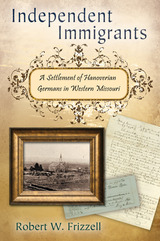 Independent Immigrants: A Settlement of Hanoverian Germans in Western Missouri
Robert W. Frizzell
University of Missouri Press, 2007 Between 1838 and the early 1890s, German peasant farmers from the Kingdom of Hanover made their way to Lafayette County, Missouri, to form a new community centered on the town of Concordia. Their story has much to tell us about the American immigrant experience—and about how newcomers were caught up in the violence that swept through their adoptive home. Robert Frizzell grew up near Concordia, and in this first book-length history of the German settlement, he chronicles its life and times during those formative years. Founded by Hanoverian Friedrich Dierking—known as “Dierking the Comforter” for the aid he gave his countrymen—the Concordia settlement blossomed from 72 households in 1850 to 375 over the course of twenty years. Frizzell traces that growth as he examines the success of early agricultural efforts, but he also tells how the community strayed from the cultural path set by its freethinker founder to become a center of religious conservatism. Drawing on archival material from both sides of the Atlantic, Frizzell offers a compelling account for scholars and general readers alike, showing how Concordia differed from other German immigrant communities in America. He also explores the conditions in Hanover—particularly the village of Esperke, from which many of the settlers hailed—that caused people to leave, shedding new light on theological, political, and economic circumstances in both the Old World and the New. When the Civil War came, the antislavery Hanoverians found themselves in the Missouri county with the greatest number of slaves, and the Germans supported the Union while most of their neighbors sympathized with Confederate guerrillas. Frizzell tells how the notorious “Bloody Bill” Anderson attacked the community three times, committing atrocities as gruesome as any recorded in the state—then how the community flourished after the war and even bought out the farmsteads of former slaveholders. Frizzell’s account challenges many historians’ assumptions about German motives for immigration and includes portraits of families and individuals that show the high price in toil and blood required to meet the challenges of making a home in a new land. Independent Immigrants reveals the untold story of these newcomers as it reveals a little-known aspect of the Civil War in Missouri.
The Independent Reflector: Or, Weekly Essays on Sundry Important Subjects, More Particularly Adapted to the Province of New-York
William Livingston and Others
Harvard University Press The Independent Reflector, a polemical essay-journal, here republished for the first time since its appearance in 1752–53, is a pungently written commentary on the culture of pre-Revolutionary America. Seeking to awaken New Yorkers to contemporary social problems, William Livingston urged reforms of all kinds and took advanced positions on key issues religious freedom, freedom of the press, public education. Since each of the issues is discussed in a framework of general ideas, the volume provides a compendium of progressive thought in America on the eve of the Revolutionary controversy.
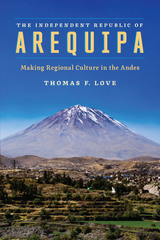 The Independent Republic of Arequipa: Making Regional Culture in the Andes
By Thomas F. Love
University of Texas Press, 2017 Arequipa, Peru’s second largest city, has the most intense regional culture in the central Andes. Arequipeños fiercely conceive of themselves as exceptional and distinctive, yet also broadly representative of the nation’s overall hybrid nature—a blending of coast (modern, “white”) and sierra (traditional, “indigenous”). The Independent Republic of Arequipa investigates why and how this regional identity developed in a boom of cultural production after the War of the Pacific (1879–1884) through the mid-twentieth century. Drawing on decades of ethnographic fieldwork, Thomas F. Love offers the first anthropological history of southwestern Peru’s distinctive regional culture. He examines both its pre-Hispanic and colonial altiplano foundations (anchored in continuing pilgrimage to key Marian shrines) and the nature of its mid-nineteenth century “revolutionary” identity in cross-class resistance to Lima’s autocratic control of nation-building in the post-Independence state. Love then examines Arequipa’s early twentieth-century “mestizo” identity (an early and unusual case of “browning” of regional identity) in the context of raging debates about the “national question” and the “Indian problem,” as well as the post-WWII development of extravagant displays of distinctive bull-on-bull fighting that now constitute the very performance of regional identity. Love’s research reveals that Arequipa’s “traditional” local culture, symbolically marked by populist, secular, and rural elements, was in fact a project of urban-based, largely middle-class cultural entrepreneurs, invented to counter continuing Limeño autocratic power, marked by nostalgia, and anxious about the inclusion of the nation’s indigenous majority as full modern citizens.
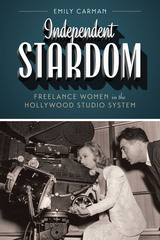 Independent Stardom: Freelance Women in the Hollywood Studio System
By Emily Carman
University of Texas Press, 2015 Bringing to light an often-ignored aspect of Hollywood studio system history, this book focuses on female stars who broke the mold of a male-dominated, often manipulative industry to dictate the path of their own careers through freelancing.
Runner-up, Richard Wall Memorial Award, Theatre Library Association, 2016 During the heyday of Hollywood’s studio system, stars were carefully cultivated and promoted, but at the price of their independence. This familiar narrative of Hollywood stardom receives a long-overdue shakeup in Emily Carman’s new book. Far from passive victims of coercive seven-year contracts, a number of classic Hollywood’s best-known actresses worked on a freelance basis within the restrictive studio system. In leveraging their stardom to play an active role in shaping their careers, female stars including Irene Dunne, Janet Gaynor, Miriam Hopkins, Carole Lombard, and Barbara Stanwyck challenged Hollywood’s patriarchal structure. Through extensive, original archival research, Independent Stardom uncovers this hidden history of women’s labor and celebrity in studio-era Hollywood. Carman weaves a compelling narrative that reveals the risks these women took in deciding to work autonomously. Additionally, she looks at actresses of color, such as Anna May Wong and Lupe Vélez, whose careers suffered from the enforced independence that resulted from being denied long-term studio contracts. Tracing the freelance phenomenon among American motion picture talent in the 1930s, Independent Stardom rethinks standard histories of Hollywood to recognize female stars as creative artists, sophisticated businesswomen, and active players in the then (as now) male-dominated film industry.
 An Independent Woman: The Autobiography of Edith Guerrier
Edith Guerrier
University of Massachusetts Press Edith Guerrier (1870-1958) embodied the ideals of the "New Women" who emerged by the thousands in turn-of-the-century America to take advantage of greater economic and educational opportunities for their sex. At the age of twenty-one, she began working with children in a settlement house in Boston's North End, where she soon maintained a reading room and a Boston Public Library delivery station. A pioneer in the new field of librarianship just opening to women, she founded many library clubs and eventually became the supervisor of branch libraries in Boston. Guerrier is perhaps best remembered for her work on behalf of young immigrant women in Boston's North End. Among the numerous "girls" clubs she founded was the Saturday Evening Girls, composed of young women of Jewish and Italian ancestry. Wanting to do more than simply "keep the girls off the street," she devised a plan to enable her charges to become financially self-sufficient. In 1908, with her lifelong companion Edith Brown, she began to develop what eventually became the Paul Revere Pottery. Potters worked an eight-hour day in an airy, healthful atmosphere, and received a decent wage, an annual paid vacation, and a daily hot lunch--all of which were virtually unheard of in the early twentieth-century workplace. Paul Revere Ware today is valued as a collector's item. Guerrier's autobiography has never been published. Her story takes us from her New England girlhood through her years on the midwestern frontier, to her education at Vermont Methodist Seminary and Female College, and finally through her odyssey in Boston, where she lived for most of her adult life. Molly Matson provides an introduction that examines Guerrier's life and several careers and discusses the history of turn-of-the-century Boston. In a substantive foreword, Polly Welts Kaufman situates Guerrier's autobiography within the context of recent scholarship on the changing roles of women during this period of American history.
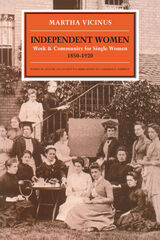 Independent Women: Work and Community for Single Women, 1850-1920
Martha Vicinus
University of Chicago Press, 1985 Martha Vicinus's subject is the middle-class English woman, the first of her sex who could afford to live on her own earnings 'outside heterosexual domesticity or church governance.' She wanted and needed to work. Meticulous, resonant, original, triumphant, Independent Women tells of the efforts and endurance of this Victorian woman; of her courage and the constraints that she rejected, accepted, and created. . . . The independent women are the 'foremothers' of any women today who seeks significant work, emotionally satisfying friendships, and a morally charged freedom."—from the Foreword by Catharine R. Stimpson
"Feminist insight combines with vast research to produce a dramatic narrative. Independent Women chronicles the energetic lives and imaginative communal structures invented by women who 'pioneered new occupations, new living conditions, and new public roles.'"—Lee R. Edwards, Ms.
"Vicinus is to be congratulated for her brave and unflinching portraits of twisted spinsters as well as stolid saints. That she stretches her net up into the '20s and covers the women's suffrage momement is a brilliant stroke, for one may see clearly how it was possible for women to mount such an enormous and successful political campaign."—Jane Marcus, Chicago Tribune Book World
"Vicinus' beautifully written book abounds in rich historical detail and in subtle psychological insights in the character of its protagonists. The author understands the complexities of the interplay between economic and social conditions, cultural values, and the aims and aspirations of individual personalities who act in history. . . . A superb achievement."—Gerda Lerner, Reviews in American History
"Martha Vicinus has with intelligence and energy paved and landscaped the road on which scholars and students of activist women all travel for many years."—Blanche Wiesen Cook, Women's Review of Books
"Independent Women can be read by anyone with an interest in women's history. But for all contemporary women, unconsciously enjoying privileges and freedoms once bought so dearly, this book should be required reading."—Catharine E. Boyd, History
 The Indescribable and the Undiscussable: Reconstructing Human Discourse after Trauma
Dan Bar-On
Central European University Press, 1998 People--laymen and practitioners alike--face serious difficulties in making sense of each other's feelings, behavior, and discourse in everyday life and after traumatic experiences. Acknowledging and working through these difficulties is the subject of this extremely interesting and highly readable book. After a critical look at the psychological and philosophical literature, Dan Bar-On identifies two groups of impediments. First, the indescribable, as it appears when individuals try to understand and integrate their first heart attack into their previous life-experience, when a group of pathfinders talk about their different maps of the mind and nature, or when a team of welfare practitioners tries to develop a common approach to their regional population. Second, the undiscussable, as it appears in the transmission, from generation to generation, of the traumatic experiences of the families of both Holocaust survivors and Nazi perpetrators, the book showing how their descendants can work through the burden of the past by confronting themselves and each other through a prolonged group encounter. This book provides a unique way of looking at life experiences, individual as well as inter-personal. It proposes a new psychological theoretical framework in a way to which both laymen and professionals can relate while confronting similar issues in their everyday experiences and discourse. The book is of especial relevance to present-day Central and East European societies, relating as it does to the problems of psychological adaptation arising from the transition from totalitarian to democratic regimes.
An Index to Reproductions of Paintings by Twentieth-Century Chinese Artists
Ellen Johnston Laing
University of Michigan Press, 1998 In the second half of the twentieth century, studies in Chinese painting history have been greatly aided by several major lists of Chinese artists and their works. Published between 1956 and 1980, these lists were limited to Imperial China. The current index covers the period from 1912 to around 1980. It includes the names of approximately 3,500 traditional-style artists along with lists of their works, reproduced in some 264 monographs, books, journals, and catalogs published from the 1920s to around 1980. With a few exceptions, artists working after 1949 outside continental China are excluded. Revised Edition, 1998; first published by the Asian Studies Program, University of Oregon, 1984.
Index to the Imperial Register of Tz’u Prosody (Ch’in-ting Tz’u-p’u)
Glen W. Baxter
Harvard University Press The Imperial Register, compiled in twenty volumes in the early eighteenth century by order of Emperor K’ang-hsi (Kangxi), is a guide to 826 basic melodic patterns, and 2306 metrical or tonal variants of the song poem known as tz’u practiced in China since the ninth century. The original Register had no index. The present work supplies this lack, listing each variant title (alphabetically by romanization accompanied by Chinese characters), followed by authors’ names and location in the twenty-volume compendium.
Index to the Imperial Register of Tz’u Prosody (Ch’in-ting Tz’u-p’u)
Glen W. Baxter
Harvard University Press The Imperial Register, compiled in the early eighteenth century by order of Emperor K’ang-hsi, is a guide to 826 basic melodic patterns and 2306 metrical or tonal variants of the song poem known as tz’u practiced in China since the ninth century. The present work supplies an index, listing each variant title followed by authors’ names and location.
Index to the Imperial Register of Tz’u Prosody (Ch’in-ting Tz’u-p’u)
Glen W. Baxter
Harvard University Press The Imperial Register, compiled in the early eighteenth century by order of Emperor K’ang-hsi, is a guide to 826 basic melodic patterns and 2306 metrical or tonal variants of the song poem known as tz’u practiced in China since the ninth century. The present work supplies an index, listing each variant title followed by authors’ names and location.
Indexes: A Chapter from The Chicago Manual of Style, 15th Edition
University of Chicago Press Staff
University of Chicago Press, 2003 For nearly one hundred years, The Chicago Manual of Style has been the authoritative reference for writers, editors, and publishers. Now in its fifteenth edition, the Manual has been thoroughly revised and updated. The chapter on indexing presented here has been reorganized, streamlined, and revised for the electronic age. It provides examples and recommendations on style and method for professionals, authors, and others who prepare indexes for published works.
Indexes: A Chapter from The Chicago Manual of Style, 16th ed.
University of Chicago Press Staff
University of Chicago Press, 2010 This volume contains all the material from The Chicago Manual of Style, 16th Edition that relates to indexes and the work of indexing. Thoroughly updated to reflect current accepted practices, it is an indispensable guide for anyone preparing an index.
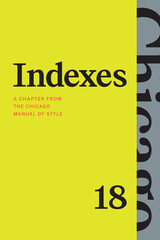 Indexes: A Chapter from "The Chicago Manual of Style," Eighteenth Edition
The University of Chicago Press Editorial Staff
University of Chicago Press, 2024 Indexing A–Z from The Chicago Manual of Style—the undisputed authority for style, usage, and grammar.
In this age of searchable text, the need for an index made with human input is sometimes questioned. But a good index can do what a plain search cannot: It gathers all the substantive terms and subjects of the work, sorts them alphabetically, provides cross-references to and from related terms, and includes specific page numbers or other locators or, for electronic formats, direct links to the text. This painstaking intellectual labor serves readers of any longer work, whether it is searchable or not. For searchable texts, an index provides insurance against fruitless queries and unintended results. In a word, a good index makes the text more accessible.
Most book indexes must be assembled swiftly between the time page proofs are issued and the time they are returned to the typesetter—usually about four weeks. An author preparing their own index will have to proofread as well as index the work in that short time span.
This insightful chapter-length booklet will guide both professionals and first-time indexers in assembling an index that will do justice to both the book and the reader.
Indexes: A Chapter from The Chicago Manual of Style, Seventeenth Edition
The University of Chicago Press Editorial Staff
University of Chicago Press, 2017 Preparing an index for a book or other type of publication is a specialized skill. This volume presents the chapter from The Chicago Manual of Style, 17th Edition devoted to best practices for preparing and editing indexes as well as current standards for style and format of indexes. Thoroughly updated, it is an indispensable guide for anyone involved in preparing an index.
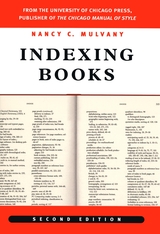 Indexing Books, Second Edition
Nancy C. Mulvany
University of Chicago Press, 2005 Since 1994, Nancy Mulvany's Indexing Books has been the gold standard for thousands of professional indexers, editors, and authors. This long-awaited second edition, expanded and completely updated, will be equally revered.
Like its predecessor, this edition of Indexing Books offers comprehensive, reliable treatment of indexing principles and practices relevant to authors and indexers alike. In addition to practical advice, the book presents a big-picture perspective on the nature and purpose of indexes and their role in published works. New to this edition are discussions of "information overload" and the role of the index, open-system versus closed-system indexing, electronic submission and display of indexes, and trends in software development, among other topics.
Mulvany is equally comfortable focusing on the nuts and bolts of indexing—how to determine what is indexable, how to decide the depth of an index, and how to work with publisher instructions—and broadly surveying important sources of indexing guidelines such as The Chicago Manual of Style, Sun Microsystems, Oxford University Press, NISO TR03, and ISO 999. Authors will appreciate Mulvany's in-depth consideration of the costs and benefits of preparing one's own index versus hiring a professional, while professional indexers will value Mulvany's insights into computer-aided indexing. Helpful appendixes include resources for indexers, a worksheet for general index specifications, and a bibliography of sources to consult for further information on a range of topics.
Indexing Books is both a practical guide and a manifesto about the vital role of the human-crafted index in the Information Age. As the standard indexing reference, it belongs on the shelves of everyone involved in writing and publishing nonfiction books.
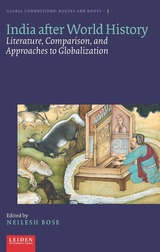 India after World History: Literature, Comparison, and Approaches to Globalization
Neilesh Bose
Amsterdam University Press, 2022 "In the twenty-first century, terms such as globalization, global, and world function as key words at the cusp of new frontiers in both historical writing and literary criticism. Practitioners of these disciplines may appear to be long time intimate lovers when seen from pre and early modern time periods, only to divorce with the coming of Anglophone world history in the twenty-first century. In recent years, works such as Martin Puchner’s The Written World, Maya Jasanoff’s The Dawn Watch, or the three novels that encompass Amitav Ghosh’s Ibis Trilogy, have rekindled a variant of history and literature’s embrace in a global register. This book probes recent scholarship concerning reflections on global history and world literature in the wake of these developments, with a primary focus on India as a site of extensive theoretical and empirical advances in both disciplinary locations. Inclusive of reflections on the meeting points of these disciplines as well as original research in areas such as Neo-Platonism in world history, histories of violence, and literary histories exploring indentured labor and capitalist transformation, the book offers reflections on conceptual advances in the study of globalization by placing global history and world literature in conversation.
 India and Nuclear Asia: Forces, Doctrine, and Dangers
Yogesh Joshi and Frank O'Donnell
Georgetown University Press, 2019 India's nuclear profile, doctrine, and practices have evolved rapidly since the country’s nuclear breakout in 1998. However, the outside world's understanding of India's doctrinal debates, forward-looking strategy, and technical developments are still two decades behind the present. India and Nuclear Asia will fill that gap in our knowledge by focusing on the post-1998 evolution of Indian nuclear thought, its arsenal, the triangular rivalry with Pakistan and China, and New Delhi's nonproliferation policy approaches. Yogesh Joshi and Frank O'Donnell show how India's nuclear trajectory has evolved in response to domestic, regional, and global drivers. The authors argue that emerging trends in all three states are elevating risks of regional inadvertent and accidental escalation. These include the forthcoming launch of naval nuclear forces within an environment of contested maritime boundaries; the growing employment of dual-use delivery vehicles; and the emerging preferences of all three states to employ missiles early in a conflict. These dangers are amplified by the near-absence of substantive nuclear dialogue between these states, and the growing ambiguity of regional strategic intentions. Based on primary-source research and interviews, this book will be important reading for scholars and students of nuclear deterrence and India's international relations, as well as for military, defense contractor, and policy audiences both within and outside South Asia.
India as Kingmaker: Status Quo or Revisionist Power
Michael O. Slobodchikoff and Aakriti A. Tandon
University of Michigan Press, 2022 As India finds itself in the envious position of kingmaker, both the status quo and revisionist major powers are jockeying for India’s support for either upholding or revising the current world order. Using India’s bilateral treaties as a proxy measure of the strength of its relationship with other major powers, Slobodchikoff and Tandon determine whether India will remain neutral in its foreign policy approach or adopt a more assertive role in shaping the future global order. This book provides an in-depth analysis of India’s bilateral ties with major powers that include the United States, Russia, China, Japan, as well as the European Union (including the United Kingdom, France, and Germany) and uses network analysis to study India’s foreign policy positions with other major powers.
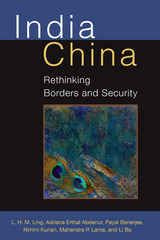 India China: Rethinking Borders and Security
L.H.M. Ling, Adriana Erthal Abdenur, Payal Banerjee, Nimmi Kurian, Mahendra P. Lama, and Li Bo
University of Michigan Press, 2016 Challenging the Westphalian view of international relations, which focuses on the sovereignty of states and the inevitable potential for conflict, the authors from the Borderlands Study Group reconceive borders as capillaries enabling the flow of material, cultural, and social benefits through local communities, nation-states, and entire regions. By emphasizing local agency and regional interdependencies, this metaphor reconfigures current narratives about the China India border and opens a new perspective on the long history of the Silk Roads, the modern BCIM Initiative, and dam construction along the Nu River in China and the Teesta River in India.
Together, the authors show that positive interaction among people on both sides of a border generates larger, cross-border communities, which can pressure for cooperation and development. India China offers the hope that people divided by arbitrary geo-political boundaries can circumvent race, gender, class, religion, and other social barriers, to form more inclusive institutions and forms of governance.
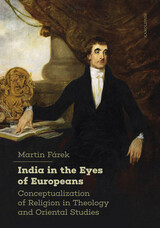 India in the Eyes of Europeans: Conceptualization of Religion in Theology and Oriental Studies
Martin Fárek
Karolinum Press, 2022 A re-examination of Western interpretations—and distortions—of Indian religious traditions.
In India in the Eyes of Europeans, Martin Fárek argues that when Western scholars interpret Indian traditions, they actually present distorted reflections of their own European culture, despite their attempts at unbiased objectivity. This distortion is clearest in the way India is viewed primarily through a religious lens—a lens fashioned from an implicitly Christian design. While discussing the current international dialogue on the topic and the work of such scholars as S. N. Balagangadhara, Fárek’s study presents the results of original research on several key topics: the problems in assigning religious significance to the Indian traditions that gave rise to Hinduism and Buddhism; Europeans’ questioning of Indians’ historical consciousness; the current debate surrounding the arrival of the Aryans in India; and controversial interpretations of the work of the reformer Rammohan Raj. The result is a provocative study that should prove fascinating to Indologists, theologians, anthropologists, and anyone interested in the history of thought.
 The India Museum Revisited
Arthur MacGregor
University College London, 2023 A full examination of the India Museum’s founding manifesto and evolving ambitions.
The museum of the East India Company formed, for a large part of the nineteenth century, one of the sights of London. In recent years, little has been remembered of it beyond its mere existence, while an assumed negative role has been widely attributed to it on the basis of its position at the heart of one of Britain’s arch-colonialist enterprises.
Extensively illustrated, The India Museum Revisited surveys the contents of its multi-faceted collections—with respect to materials, their manufacture, and original functions on the Indian sub-continent—as well as the collectors who gathered them and the manner in which they were mobilized to various ends within the museum.
From this integrated treatment of documentary and material sources, a more accurate, rounded, and nuanced picture emerges of an institution that contributed in major ways, over a period of eighty years, to the representation of India for a European audience, not only in Britain but through the museum’s involvement in the international exposition movement to audiences on the continent and beyond.
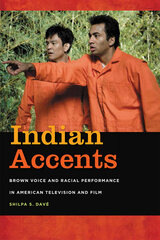 Indian Accents: Brown Voice and Racial Performance in American Television and Film
Shilpa S. Dave
University of Illinois Press, 2013
Amid immigrant narratives of assimilation, Indian Accents focuses on the representations and stereotypes of South Asian characters in American film and television. Exploring key examples in popular culture ranging from Peter Sellers' portrayal of Hrundi Bakshi in the 1968 film The Party to contemporary representations such as Apu from The Simpsons and characters in Harold and Kumar Go to White Castle, Shilpa S. Dave develops the ideas of "accent," "brownface," and "brown voice" as new ways to explore the racialization of South Asians beyond just visual appearance. Dave relates these examples to earlier scholarship on blackface, race, and performance to show how "accents" are a means of representing racial difference, national origin, and belonging, as well as distinctions of class and privilege. While focusing on racial impersonations in mainstream film and television, Indian Accents also amplifies the work of South Asian American actors who push back against brown voice performances, showing how strategic use of accent can expand and challenge such narrow stereotypes.
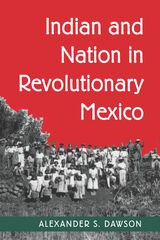 Indian and Nation in Revolutionary Mexico
Alexander S. Dawson
University of Arizona Press, 2004 During the 1920s and 1930s in Mexico, both intellectuals and government officials promoted ethnic diversity while attempting to overcome the stigma of race in Mexican society. Programs such as the Indigenista movement represented their efforts to redeem the Revolution's promise of a more democratic future for all citizens. This book explores three decades of efforts on the part of government officials, social scientists, and indigenous leaders to renegotiate the place of native peoples in Mexican society. It traces the movement's origins as a humanitarian cause among intellectuals, the involvement of government in bringing education, land reform, cultural revival, and social research to Indian communities, and the active participation of Indian peoples.
Traditionally, scholars have seen Indigenismo as an elitist formulation of the "Indian problem." Dawson instead explores the ways that the movement was mediated by both elite and popular pressures over time. By showing how Indigenismo was used by a variety of actors to negotiate the shape of the revolutionary state—from anthropologist Manual Gamio to President Lázaro Cárdenas—he demonstrates how it contributed to a new "pact of domination" between indigenous peoples and the government.
Although the power of the Indigenistas was limited by the face that "Indian" remained a racial slur in Mexico, the indígenas capacitados empowered through Indigenismo played a central role in ensuring seventy years of PRI hegemony. In studying the confluence of state formation, social science, and native activism, Dawson's book offers a new perspective for understanding the processes through which revolutionary hegemony emerged.
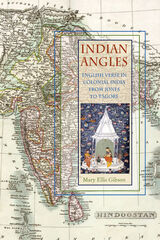 Indian Angles: English Verse in Colonial India from Jones to Tagore
Mary Ellis Gibson
Ohio University Press, 2011 A 2012 CHOICE “Outstanding Academic Title“ A new historical approach to Indian English literature Mary Ellis Gibson shows that poetry, not fiction, was the dominant literary genre of Indian writing in English until 1860 and that poetry written in colonial situations can tell us as much or even more about figuration, multilingual literacies, and histories of nationalism than novels can. Gibson re-creates the historical webs of affiliation and resistance that were experienced by writers in colonial India—writers of British, Indian, and mixed ethnicities. Advancing new theoretical and historical paradigms for reading colonial literatures, Indian Angles makes accessible many writers heretofore neglected or virtually unknown. Gibson recovers texts by British women, by nonelite British men, and by persons who would, in the nineteenth century, have been called Eurasian. Her work traces the mutually constitutive history of English-language poets from Sir William Jones to Toru Dutt and Rabindranath Tagore. Drawing on contemporary postcolonial theory, her work also provides new ways of thinking about British internal colonialism as its results were exported to South Asia. In lucid and accessible prose, Gibson presents a new theoretical approach to colonial and postcolonial literatures.
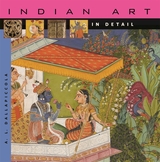 Indian Art in Detail
A. L. Dallapiccola
Harvard University Press, 2007 The rich and diverse cultures of India are represented in exquisite detail in this book, which begins with a simple question: what is Indian art? The answer is as complex as the history of a nation that is only sixty years old and a civilization that is one of the oldest in the world. The vocabulary of Indian art is syncretic and is shaped by a variety of religious influences such as Hindu, Muslim, and Buddhist. Persian, Turkish, Central Asian, Chinese, Japanese, as well as a host of European artistic traditions have also left their imprint on India. And the stunning topography of the subcontinent--the majestic Himalayas in the north, the dramatic deserts of Rajasthan, the fertile Gangetic plain, a southern coastline washed by the waves of the Arabian Sea, the Indian Ocean, and the Bay of Bengal--continues to shape the Indian artistic imagination.
Each thematically organized chapter in this book delves into such topics as religion and myth, epics, festivals, courtly and village life, and the natural world. The gorgeous close-ups of paintings, textiles, and sculptures in metal, ivory, and wood illuminate the aesthetics and workmanship, as well as recurrent motifs that are distinctly Indian. The objects are all part of the extraordinary Indian Art collection in the British Museum. The beauty of the smallest details are magnified and contextualized through the accompanying essays written by an expert on Indian art and culture.
Indian Assimilation in the Franciscan Area of Nueva Vizcaya
William B. Griffen
University of Arizona Press, 1979 Examines the processes of disappearance during the late 16th and 17th centuries--through assimilation or extermination--of the native Indians encountered by Spaniards in present-day Chihuahua, Mexico.
 Indian Captive, Indian King: Peter Williamson in America and Britain
Timothy J. Shannon
Harvard University Press, 2018 In 1758 Peter Williamson appeared on the streets of Aberdeen, Scotland, dressed as a Native American and telling a remarkable tale. He claimed that as a young boy he had been kidnapped from the city and sold into slavery in America. In performances and in a printed narrative he peddled to his audiences, Williamson described his tribulations as an indentured servant, Indian captive, soldier, and prisoner of war. Aberdeen’s magistrates called him a liar and banished him from the city, but Williamson defended his story.
Separating fact from fiction, Timothy J. Shannon explains what Williamson’s tale says about how working people of eighteenth-century Britain, so often depicted as victims of empire, found ways to create lives and exploit opportunities within it. Exiled from Aberdeen, Williamson settled in Edinburgh, where he cultivated enduring celebrity as the self-proclaimed “king of the Indians.” His performances and publications capitalized on the curiosity the Seven Years’ War had ignited among the public for news and information about America and its native inhabitants. As a coffeehouse proprietor and printer, he gave audiences a plebeian perspective on Britain’s rise to imperial power in North America.
Indian Captive, Indian King is a history of empire from the bottom up, showing how Williamson’s American odyssey illuminates the real-life experiences of everyday people on the margins of the British Empire and how those experiences, when repackaged in travel narratives and captivity tales, shaped popular perceptions about the empire’s racial and cultural geography.
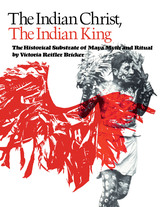 The Indian Christ, the Indian King: The Historical Substrate of Maya Myth and Ritual
By Victoria Reifler Bricker
University of Texas Press, 1981 Victoria Bricker shows that "history" sometimes rests on mythological foundations and that "myth" can contain valid historical information. Her book, which is a highly original critique of postconquest historiography about the Maya, challenges major assumptions about the relationship between myth and history implicit in structuralist interpretations. The focus of the book is ethnic conflict, a theme that pervades Maya folklore and is also well documented historically. The book begins with the Spanish conquest of the Maya. In chapters on the postconquest history of the Maya, five ethnic conflicts are treated in depth: the Cancuc revolt of 1712, the Quisteil uprising of 1761, the Totonicapan rebellion of 1820, the Caste War of Yucatan (1847-1901), and the Chamulan uprising in 1869. Analytical chapters consider the relationship between historical events and modern folklore about ethnic conflict. Bricker demonstrates that myths and rituals emphasize structure at the expense of temporal and geographical provenience, treating events separated by centuries or thousands of miles as equivalent and interchangeable. An unexpected result of Bricker's research is the finding that many seemingly aboriginal elements in Maya folklore are actually of postconquest origin, and she shows that it is possible to determine precisely when and, more important, why they become part of myth and ritual. Furthermore, she finds that the patterning of the accretion of events in folklore over time provides clues to the function, or meaning, of myth and ritual for the Maya. Bricker has made use of many unpublished documents in Spanish, English, and Maya, as well as standard synthetic historical works. The appendices contain extensive samples of the oral traditions that are explained by her analysis.
Indian Conceptions of Immortality
Walter Eugene Clark
Harvard University Press India has opposed a constant challenge to western Christian thought as it has developed under Hebrew guidance, with its insistence on individual immortality and on a personal God whose essential nature is based on an absolute distinction between good and evil. Indian postulates are very different from those which the Christian West has been taught to regard as the only logical and the only possible ones. This book sketches in broad outline the essential ideas behind the Indian outlook upon the universe and upon human life.
 Indian Country, God's Country: Native Americans And The National Parks
Philip Burnham
Island Press, 2000 The mythology of "gifted land" is strong in the Park Service, but some of our greatest parks were "gifted" by people who had little if any choice in the matter. Places like the Grand Canyon's south rim and Glacier had to be bought, finagled, borrowed -- or taken by force -- when Indian occupants and owners resisted the call to contribute to the public welfare. The story of national parks and Indians is, depending on perspective, a costly triumph of the public interest, or a bitter betrayal of America's native people.In Indian Country, God's Country historian Philip Burnham traces the complex relationship between Native Americans and the national parks, relating how Indians were removed, relocated, or otherwise kept at arm's length from lands that became some of our nation's most hallowed ground. Burnham focuses on five parks: Glacier, the Badlands, Mesa Verde, the Grand Canyon, and Death Valley. Based on archival research and extensive personal visits and interviews, he examines the beginnings of the national park system and early years of the National Park Service, along with later Congressional initiatives to mainstream American Indians and expand and refurbish the parks. The final chapters visit the parks as they are today, presenting the thoughts and insights of superintendents and rangers, tribal officials and archaeologists, ranchers, community leaders, curators, and elders. Burnham reports on hard-won compromises that have given tribes more autonomy and greater cultural recognition in recent years, while highlighting stubborn conflicts that continue to mark relations between tribes and the parks.Indian Country, God's Country offers a compelling -- and until now untold -- story that illustrates the changing role of the national parks in American society, the deep ties of Native Americans to the land, and the complicated mix of commerce, tourism, and environmental preservation that characterize the parks system. Anyone interested in Native American culture and history, the history of the American West, the national park system, or environmental history will find it a fascinating and engaging work.
Indian Country: Telling a Story in a Digital Age
Victoria L. LaPoe
Michigan State University Press, 2017 Storytelling has always been an important part of Native culture. Stories play a part in everyday Native life—they are often oral and rich in detail and language and serve as a form of recording history. Digital media now allow for the extension of this storytelling. This necessary text evaluates how digital media are changing the rich cultural act of storytelling within Native communities, with a specific focus on Native newsroom norms and routines. The authors argue that the non-Native press often leave consumers with a stereotypical view of American Indians, and aim to give a more authentic representation to Native journalism. With interviews from more than forty Native journalists around the country, this book is essential to understanding how digital media possibly advances the distribution of storytelling within the American Indian community.
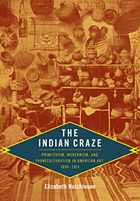 The Indian Craze: Primitivism, Modernism, and Transculturation in American Art, 1890–1915
Elizabeth Hutchinson
Duke University Press, 2009 In the early twentieth century, Native American baskets, blankets, and bowls could be purchased from department stores, “Indian stores,” dealers, and the U.S. government’s Indian schools. Men and women across the United States indulged in a widespread passion for collecting Native American art, which they displayed in domestic nooks called “Indian corners.” Elizabeth Hutchinson identifies this collecting as part of a larger “Indian craze” and links it to other activities such as the inclusion of Native American artifacts in art exhibitions sponsored by museums, arts and crafts societies, and World’s Fairs, and the use of indigenous handicrafts as models for non-Native artists exploring formal abstraction and emerging notions of artistic subjectivity. She argues that the Indian craze convinced policymakers that art was an aspect of “traditional” Native culture worth preserving, an attitude that continues to influence popular attitudes and federal legislation. Illustrating her argument with images culled from late-nineteenth- and early-twentieth-century publications, Hutchinson revises the standard history of the mainstream interest in Native American material culture as “art.” While many locate the development of this cross-cultural interest in the Southwest after the First World War, Hutchinson reveals that it began earlier and spread across the nation from west to east and from reservation to metropolis. She demonstrates that artists, teachers, and critics associated with the development of American modernism, including Arthur Wesley Dow and Gertrude Käsebier, were inspired by Native art. Native artists were also able to achieve some recognition as modern artists, as Hutchinson shows through her discussion of the Winnebago painter and educator Angel DeCora. By taking a transcultural approach, Hutchinson transforms our understanding of the role of Native Americans in modernist culture.
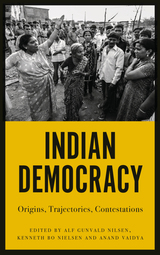 Indian Democracy: Origins, Trajectories, Contestations
Edited by Alf Gunvald Nilsen, Kenneth Bo Nielsen, and Anand Vaidya
Pluto Press, 2019 More than seventy years after its founding, with Narendra Modi’s authoritarian Hindu nationalists in government, is the dream of Indian democracy still alive and well?
India’s pluralism has always posed a formidable challenge to its democracy, with many believing that a clash of identities based on region, language, caste, religion, ethnicity, and tribe would bring about its demise. With the meteoric rise to power of the Bharatiya Janata Party, the nation’s solidity is once again called into question: is Modi’s Hindu majoritarianism an anti-democratic attempt to transform India into a monolithic Hindu nation from which minorities and dissidents are forcibly excluded?
With examinations of the way that class and caste power shaped the making of India’s postcolonial democracy, the role of feminism, the media, and the public sphere in sustaining and challenging democracy, this book interrogates the contradictions at the heart of the Indian democratic project, examining its origins, trajectories, and contestations.
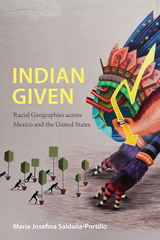 Indian Given: Racial Geographies across Mexico and the United States
María Josefina Saldaña-Portillo
Duke University Press, 2016 In Indian Given María Josefina Saldaña-Portillo addresses current racialized violence and resistance in Mexico and the United States with a genealogy that reaches back to the sixteenth century. Saldaña-Portillo formulates the central place of indigenous peoples in the construction of national spaces and racialized notions of citizenship, showing, for instance, how Chicanos/as in the U.S./Mexico borderlands might affirm or reject their indigenous background based on their location. In this and other ways, she demonstrates how the legacies of colonial Spain's and Britain's differing approaches to encountering indigenous peoples continue to shape perceptions of the natural, racial, and cultural landscapes of the United States and Mexico. Drawing on a mix of archival, historical, literary, and legal texts, Saldaña-Portillo shows how los indios/Indians provided the condition of possibility for the emergence of Mexico and the United States.
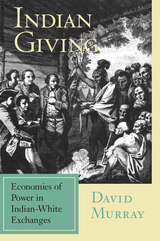 Indian Giving: Economies of Power in Indian-White Exchanges
David Murray
University of Massachusetts Press, 2000 Whether they involved goods, words, or ideas, acts of giving and trading were fundamental in early Indian-white contacts. But how did these transactions function across the two cultures, and what did they mean to each? In this book, David Murray explores a range of early exchanges between Europeans and Indians, showing how they operated within a set of interlocking economies—linguistic, religious, as well as material. Murray begins by examining the crucial role of gift-giving. Like the double function of the key, which both locks and unlocks, the gift—with its simultaneous action of offering something and demanding a return—expressed the paradoxical nature of early Indian-white encounters. Because the power to give was associated with ideas of sovereignty, both sides often preferred to represent exchanges as gift-giving rather than trading or selling. To illustrate the complexities of these cross-cultural transactions, the author looks closely at the work of linguist, trader, and missionary Roger Williams, whose A Key into the Language of America at once serves the purposes of translation, conversion, and trade. Murray also examines the changing meaning and representation of wampum, the quintessential medium of exchange in the early colonial period, as well as the multiple processes of conversion taking place as Christian ideas were incorporated into Indian cultures. According to the author, only by recognizing the ways in which objects and ideas circulated and took on value in interrelated economies can we understand the contested "middle ground" between Europeans and Indians of the colonial Northeast.
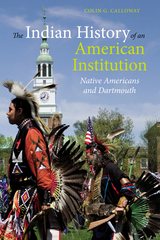 The Indian History of an American Institution: Native Americans and Dartmouth
Colin G. Calloway
Dartmouth College Press, 2010 Dartmouth College began life as an Indian school, a pretense that has since been abandoned. Still, the institution has a unique, if complicated, relationship with Native Americans and their history. Beginning with Samson Occom’s role as the first “development officer” of the college, Colin G. Calloway tells the entire, complex story of Dartmouth’s historical and ongoing relationship with Native Americans. Calloway recounts the struggles and achievements of Indian attendees and the history of Dartmouth alumni’s involvements with American Indian affairs. He also covers more recent developments, such as the mascot controversies, the emergence of an active Native American student organization, and the partial fulfillment of a promise deferred. This is a fascinating picture of an elite American institution and its troubled relationship— at times compassionate, at times conflicted—with Indians and Native American culture.
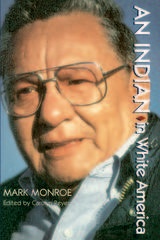 An Indian in White America
Mark Monroe, edited by Carolyn Reyer, afterword by Kenneth Lincoln
Temple University Press, 1994 "At time when most Americans don't realize that over 66 percent of Indians live off the reservation, this book is a powerful witness ... it will reward the reader with an illuminating look into what it means to be a member of America's Native minority."
--Kirkus Reviews
Narrated with intense honesty, this autobiography of Mark Monroe, a Lakota Sioux Indian, is a story of courage, faith, and determination, and a rare opportunity to witness the life of a contemporary American Indian. Despite lifelong confrontations with violence, racism, and personal hardship--alcoholism, family deaths, illness, poverty, and unemployment--Mark Monroe has worked to instill ethnic pride in his fellow Indians.
After an early idyllic childhood at the Rosebud South Dakota reservation, Monroe moved with his parents off-reservation to Alliance, Nebraska. There he first felt the sting of white America's racism from signs outside local businesses that read "No Indians or dogs allowed." As a young man, Monroe enlisted in the military, for the first time experiencing outside acceptance and learning vocational skills. Upon his return to the United States, he worked as a baker. At the same time, however, he was being sucked into a life of alcoholism, begun years earlier with social drinking. Eventually he was unable to eat or to work. After rehabilitation, he ran for Police Magistrate. Monroe was the first Indian ever to have filed for public office in Alliance, and his candidacy divided the town. Though he lost the election, he gained community support and a growing sense of dignity from the campaign.
From the misery and hopelessness he suffered as an alcoholic, and the pains of recovery, Monroe became aware of the cultural difference between Indian alcoholism and white alcoholism. This understanding led to his work with Indian alcoholics at the Panhandle Mental Health Center in Scottsbluff, Nebraska--another first. No Indian had ever served on the Center's staff. Since his recovery, Monroe has been an active participant in his community and continues to fight for the legal rights of American Indians. In 1973 he founded the American Indian Council, which today offers a variety of health, educational, and social programs, including a nutrition program, a hospital busing program, and alcohol counseling.
"[An] interesting representation of Lakota male experiences in the realities of present-day life in the Great Plains."
--Wicazo Sa Review
"Mark Monroe has broken out of society's cage and achieved outstanding things. We are all better off for it. His personality and stature--qualities of leadership, determination, and stamina--quickly override the poverty-stricken times and the tragic aspects that linger constantly at the edges of this Indian world, this seemingly desolate place. Compared with other Native American biographies, An Indian in White America stands near the top."
--Charles Ballard, Institute of Ethnic Studies, University of Nebraska
"I know of no other volume that deals so frankly with the familiar Indian problems of poverty, racism and alcoholism while offering, at the same time, the powerful example of one man's struggle out of those traps which still threaten Native people. Although Mark Monroe describes himself as 'just an ikee wicasa--a common man who's trying to provide for his family,' he provides us all with lessons for healing and survival. His autobiography is an uncommon gift."
--Joseph Bruchac, Editor, Greenfield Press Review
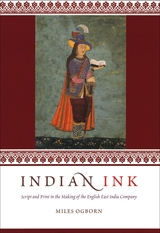 Indian Ink: Script and Print in the Making of the English East India Company
Miles Ogborn
University of Chicago Press, 2007 A commercial company established in 1600 to monopolize trade between England and the Far East, the East India Company grew to govern an Indian empire. Exploring the relationship between power and knowledge in European engagement with Asia, Indian Ink examines the Company at work and reveals how writing and print shaped authority on a global scale in the seventeenth and eighteenth centuries.
Tracing the history of the Company from its first tentative trading voyages in the early seventeenth century to the foundation of an empire in Bengal in the late eighteenth century, Miles Ogborn takes readers into the scriptoria, ships, offices, print shops, coffeehouses, and palaces to investigate the forms of writing needed to exert power and extract profit in the mercantile and imperial worlds. Interpreting the making and use of a variety of forms of writing in script and print, Ogborn argues that material and political circumstances always undermined attempts at domination through the power of the written word.
Navigating the juncture of imperial history and the history of the book, Indian Ink uncovers the intellectual and political legacies of early modern trade and empire and charts a new understanding of the geography of print culture.
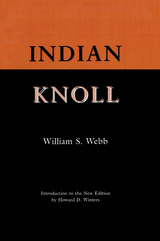 Indian Knoll
William S. Webb
University of Tennessee Press, 2002 With the reprinting of William S. Webb’s Indian Knoll, students of archaeology again have available a classic work on the life and death of a fascinating culture. For the report does much to enhance out understanding of the Archaic, and its author (1882-1964) stands as a pivotal figure in the development of a disciplined and scientific approach to New World archaeology.
The legacy of Webb’s contributions is indeed great. Little had been written about Archaic sites prior to the reports by Webb and his associates on Indian Knoll, on other sites of the Indian Knoll Culture along Green River and Cypress Creek in Kentucky, and on numerous prepottery sites in the Tennessee Valley. Webb’s publications have remained the principal sources on Archaic shell middens in mid-America, and constitute the largest and most comprehensive corpus of excavation derived data on Archaic sites in all of eastern North America. In addition, Webb deals with a number of special topics – the functional analysis of artifacts and the identification of raw materials sources – which are vitally important as antecedents of contemporary research. Such reports as Indian Knoll furnish valuable information on subsistence and settlement patterns; furthermore, they are extremely useful in rethinking the notion of the Archaic as a developmental stage.
Besides supplying significant data, Webb did much to raise the standards of archaeological reporting. In Indian Knoll and other reports, he exhibited a marked degree of sophistication and utilized an interdisciplinary approach by incorporating the analyses of other subject specialties.
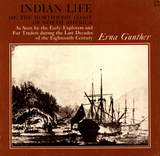 Indian Life on the Northwest Coast of North America as seen by the Early Explorers and Fur Traders during the Last Decades of the Eighteenth Century
Erna Gunther
University of Chicago Press, 1972 A reconstruction of the Haida and Tlingit cultures of the Pacific Northwest during the late eighteenth and early nineteenth centuries.
Drawing on a wide range of evidence, this volume is a carefully researched investigation into the ethnohistory of the Pacific Northwest during the period of European exploration of the region. The book supplements the archeological evidence from the area with a detailed investigation of the journals, diaries, and sketchbooks of Russian, Spanish, and English explorers and traders who reached the region, as well as artifacts that those explorers and traders obtained on their expeditions and that are now held in museums worldwide. In doing so, Gunther's research extends anthropological study of the region a century earlier, and sheds light on the understudied tribal cultures of the Haida and the Tlingit. The volume contains splendid reproductions of contemporary drawings, and appendices mapping the museum locations of artifacts and describing the processes of native technology.
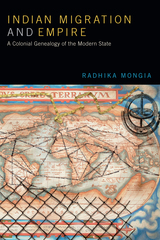 Indian Migration and Empire: A Colonial Genealogy of the Modern State
Radhika Mongia
Duke University Press, 2018 How did states come to monopolize control over migration? What do the processes that produced this monopoly tell us about the modern state? In Indian Migration and Empire Radhika Mongia provocatively argues that the formation of colonial migration regulations was dependent upon, accompanied by, and generative of profound changes in normative conceptions of the modern state. Focused on state regulation of colonial Indian migration between 1834 and 1917, Mongia illuminates the genesis of central techniques of migration control. She shows how important elements of current migration regimes, including the notion of state sovereignty as embodying the authority to control migration, the distinction between free and forced migration, the emergence of passports, the formation of migration bureaucracies, and the incorporation of kinship relations into migration logics, are the product of complex debates that attended colonial migrations. By charting how state control of migration was critical to the transformation of a world dominated by empire-states into a world dominated by nation-states, Mongia challenges positions that posit a stark distinction between the colonial state and the modern state to trace aspects of their entanglements.
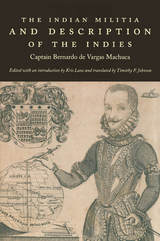 The Indian Militia and Description of the Indies
Captain Bernardo de Vargas Machuca, Edited with an introduction by Kris Lane
Duke University Press, 2008 Sometimes referred to as the first published manual of guerrilla warfare, Bernardo de Vargas Machuca’s Indian Militia and Description of the Indies is actually the first known manual of counterinsurgency, or anti-guerrilla warfare. Published in Madrid in 1599 by a Spanish-born soldier of fortune with long experience in the Americas, the book is a training manual for conquistadors. The Aztec and Inca Empires had long since fallen by 1599, but Vargas Machuca argued that many more Native American peoples remained to be conquered and converted to Roman Catholicism. What makes his often shrill and self-righteous treatise surprising is his consistent praise of indigenous resistance techniques and medicinal practices. Containing advice on curing rattlesnake bites with amethysts and making saltpeter for gunpowder from concentrated human urine, The Indian Militia is a manual in four parts, the first of which outlines the ideal qualities of the militia commander. Addressing the organization and outfitting of conquest expeditions, Book Two includes extended discussions of arms and medicine. Book Three covers the proper behavior of soldiers, providing advice on marching through peaceful and bellicose territories, crossing rivers, bivouacking in foul weather, and carrying out night raids and ambushes. Book Four deals with peacemaking, town-founding, and the proper treatment of conquered peoples. Appended to these four sections is a brief geographical description of all of Spanish America, with special emphasis on the indigenous peoples of New Granada (roughly modern-day Colombia), followed by a short guide to the southern coasts and heavens. This first English-language edition of The Indian Militia includes an extensive introduction, a posthumous report on Vargas Machuca’s military service, and a selection from his unpublished attack on the writings of Fray Bartolomé de Las Casas.
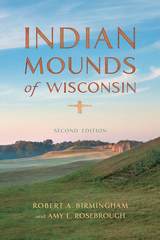 Indian Mounds of Wisconsin
Robert A. Birmingham and Amy L. Rosebrough
University of Wisconsin Press, 2017 More mounds were built by ancient Native Americans in Wisconsin than in any other region of North America—between 15,000 and 20,000, at least 4,000 of which remain today. Most impressive are the effigy mounds, huge earthworks sculpted in the shapes of thunderbirds, water panthers, and other forms, not found anywhere else in the world in such concentrations. This second edition is updated throughout, incorporating exciting new research and satellite imagery. Written for general readers, it offers a comprehensive overview of these intriguing earthworks.
Citing evidence from past excavations, ethnography, the traditions of present-day Native Americans in the Midwest, ground-penetrating radar and LIDAR imaging, and recent findings of other archaeologists, Robert A. Birmingham and Amy L. Rosebrough argue that effigy mound groups are cosmological maps that model belief systems and relations with the spirit world. The authors advocate for their preservation and emphasize that Native peoples consider the mounds sacred places.
This edition also includes an expanded list of public parks and preserves where mounds can be respectfully viewed, such as the Kingsley Bend mounds near Wisconsin Dells, an outstanding effigy group maintained by the Ho-Chunk Nation, and the Man Mound Park near Baraboo, the only extant human-shaped effigy mound in the world.
Indian Names in Michigan
Virgil J. Vogel
University of Michigan Press, 1986 Indian Names in Michigan traces the origin of hundreds of place-names given to counties, towns, lakes, rivers, and topographical features of the Great Lakes State. These melodic names that enrich our appreciation for the romantic past of our state record the culture and history of both the American Indian and the white settler. Most of the Indian names borne by Michigan's cities, counties, lakes, and rivers are those of Indian tribes and individuals. Settlers named places not only fro the resident tribes, but also for tribes in the West that they had never seen. Indian Names in Michigan is written for all local history enthusiasts and anyone interested in Indian history and culture
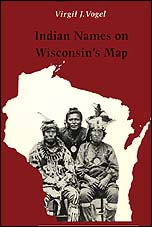 Indian Names on Wisconsin's Map
Virgil J. Vogel
University of Wisconsin Press, 1992 "Of all the states of the American union, none has a name that has been spelled in more ways, or interpreted more variously, than Wisconsin. Among the spellings listed are Mesconsin, Meskousing, Mishkonsing, Ouisconsens, Ouisconsin, Ouisconsing, Ouiscousing, Ouiskonsin, Owisconsing, Quisconsing, Weeskonsan, Wisconsan, Wisconsin, Wishkonsing, and Wiskonsin. The name has been attributed to the French, Menominee, Ojibwa, Potawatami, Sauk-Fox, and Winnebago languages."
Place names are cultural artifacts that tell us as much about how people lived as do relics dug from the ground, writes Virgil Vogel, one of America's foremost authorities on place names. They are historical records from which the location and migration of people, plants, and animals can be charted. Onalaska and Aztalan, not surprisingly, are place names transplanted to Wisconsin from the far north and south. Some names tell of topographic features that have long since disappeared or are little noticed today. Beaver Dam once had an Indian name meaning just that; Sheboygan, "big pipe" in Ojibwa, described the shape of a river bend. Other names are vestiges of ancient languages nowhere else recorded. Some commemorate historic events: Winneconne is believed by many to mean "place of the skulls."
The Indian names of Wisconsin's towns, rivers, and lakes reveal the minds of the Indian peoples, their cosmic views, their values, their relation to their environment , and their ways of life and convey as well something of the history of their white invaders.
Virgil Vogel's thirty years of research into Native American influence on geographical names has resulted in an absorbing account that illuminates the history and culture of Wisconsin Indians. Vogel tells his story thematically—names from the spirit world, names of trails and portages, French-Indian personal names, tribal names, and so on—to show that place names are part of a larger cultural and natural world. In recovering the history and meaning of these names, he has restored an important and colorful part of America's heritage.
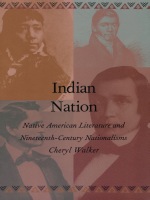 Indian Nation: Native American Literature and Nineteenth-Century Nationalisms
Cheryl Walker
Duke University Press, 1997 Indian Nation documents the contributions of Native Americans to the notion of American nationhood and to concepts of American identity at a crucial, defining time in U.S. history. Departing from previous scholarship, Cheryl Walker turns the "usual" questions on their heads, asking not how whites experienced indigenous peoples, but how Native Americans envisioned the United States as a nation. This project unfolds a narrative of participatory resistance in which Indians themselves sought to transform the discourse of nationhood.
Walker examines the rhetoric and writings of nineteenth-century Native Americans, including William Apess, Black Hawk, George Copway, John Rollin Ridge, and Sarah Winnemucca. Demonstrating with unique detail how these authors worked to transform venerable myths and icons of American identity, Indian Nation chronicles Native American participation in the forming of an American nationalism in both published texts and speeches that were delivered throughout the United States. Pottawattomie Chief Simon Pokagon’s "The Red Man’s Rebuke," an important document of Indian oratory, is published here in its entirety for the first time since 1893.
By looking at this writing through the lens of the best theoretical work on nationality, postcoloniality, and the subaltern, Walker creates a new and encompassing picture of the relationship between Native Americans and whites. She shows that, contrary to previous studies, America in the nineteenth century was intercultural in significant ways.
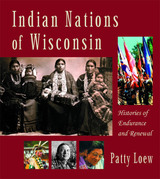 Indian Nations of Wisconsin: Histories of Endurance and Renewal
Patty Loew
Wisconsin Historical Society Press, 2001 An updated and revised edition of Patty Loew's Indian Nations of Wisconsin is now available, ISBN 9780870205033. From origin stories to contemporary struggles over treaty rights and sovereignty issues, Indian Nations of Wisconsin: Histories of Endurance and Renewal explores Wisconsin’s rich Native tradition. Each chapter is a compact tribal history of one of the state’s Indian nations—Ojibwe, Potawatomi, Oneida, Menominee, Mohican and Brothertown, and Ho-Chunk—and the book relies on the historical perspectives of Native people. Author Patty Loew focuses on oral tradition—stories, songs, the recorded words of Indian treaty negotiators, and interviews—as well as other untapped Native sources, such as tribal newspapers, to present a distinctly different view of history.
Elders and tribal historians from each of the twelve Native communities represented in the book participated in the book’s development—making suggestions, recommending sources, and offering criticism. Indian Nations of Wisconsin is illustrated with more than seventy photographs.
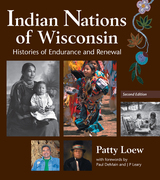 Indian Nations of Wisconsin: Histories of Endurance and Renewal, 2 Edition
Patty Loew
Wisconsin Historical Society Press, 2013 From origin stories to contemporary struggles over treaty rights and sovereignty issues, Indian Nations of Wisconsin explores Wisconsin's rich Native tradition. This unique volume—based on the historical perspectives of the state’s Native peoples—includes compact tribal histories of the Ojibwe, Potawatomi, Oneida, Menominee, Mohican, Ho-Chunk, and Brothertown Indians. Author Patty Loew focuses on oral tradition—stories, songs, the recorded words of Indian treaty negotiators, and interviews—along with other untapped Native sources, such as tribal newspapers, to present a distinctly different view of history. Lavishly illustrated with maps and photographs, Indian Nations of Wisconsin is indispensable to anyone interested in the region's history and its Native peoples. The first edition of Indian Nations of Wisconsin: Histories of Endurance and Renewal, won the Wisconsin Library Association's 2002 Outstanding Book Award.
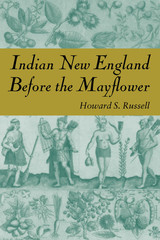 Indian New England Before the Mayflower
Howard S. Russell
University Press of New England, 1983 In offering here a highly readable yet comprehensive description of New England's Indians as they lived when European settlers first met them, the author provides a well-rounded picture of the natives as neither savages nor heroes, but fellow human beings existing at a particular time and in a particular environment. He dispels once and for all the common notion of native New England as peopled by a handful of savages wandering in a trackless wilderness. In sketching the picture the author has had help from such early explorers as Verrazano, Champlain, John Smith, and a score of literate sailors; Pilgrims and Puritans; settlers, travelers, military men, and missionaries. A surprising number of these took time and trouble to write about the new land and the characteristics and way of life of its native people. A second major background source has been the patient investigations of modern archaeologists and scientists, whose several enthusiastic organizations sponsor physical excavations and publications that continually add to our perception of prehistoric men and women, their habits, and their environment. This account of the earlier New Englanders, of their land and how they lived in it and treated it; their customs, food, life, means of livelihood, and philosophy of life will be of interest to all general audiences concerned with the history of Native Americans and of New England.
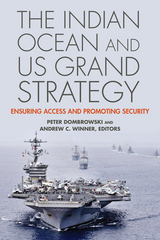 The Indian Ocean and US Grand Strategy: Ensuring Access and Promoting Security
Peter Dombrowski and Andrew C. Winner, Editors
Georgetown University Press, 2014 The Indian Ocean, with its critical routes for global commerce, is a potentially volatile location for geopolitical strife. Even as the region’s role in the international economy and as a highway to conflict zones increases, the US has failed to advance a coherent strategy for protecting its interests in the Indian Ocean or for managing complex diplomatic relationships across the region. The Indian Ocean and US Grand Strategy presents a range of viewpoints about whether and how the US should alter its diplomatic and military strategies for this region. Contributors examine US interests in the Indian Ocean, assess the relative critical importance or imperiled nature of these interests, and propose solutions for American strategy ranging from minimal change to maximum engagement. The book concludes with a comparative assessment of these options and a discussion of their implications for US policymakers. This volume’s perspectives and analysis of the Indian Ocean region will be valued by scholars and students of US foreign policy, South Asia, and security studies as well as by diplomats, military officers, and other practitioners.
 Indian Philosophy: An Introduction to Hindu and Buddhist Thought
Richard King
Georgetown University Press This book provides an introduction to the main schools of Indian philosophy within both the Hindu and Buddhist traditions. Richard King analyzes the schools' different doctrines and compares their approaches to specific philosophical topics — ontology, epistemology, perception, consciousness, and creation and causality. While King's main focus is on the ideas as professed by the major schools of thought, he also takes into account the important contributions made by individual thinkers. Among these are Bhartrhari, who helped introduce linguistic analysis into Indian philosophy; Nagarjuna, the reputed founder of the Mahayana or "Middle Way" school; and Asanga, the believed founder of the Yogacara or "Practice of Yoga" school. This is the first introduction to Indian philosophy written for a western audience to assess Indian thought in its own context and to examine its relationship with the West. King discusses the nature of philosophy in general, examining the shifting usage of the term throughout history. He examines western perceptions of Indian philosophy, exploring the reasons why it has not made substantial inroads into western intellectual discourse. King argues that western scholars will remain tied to a Eurocentric perspective as long as they continue to ignore the possibility of philosophical thought "East of the Suez." This, he argues, highlights the need for a post-colonial and global approach to philosophy. Written in a clear and accessible style, the book can be used for courses in religion, theology, and philosophy.
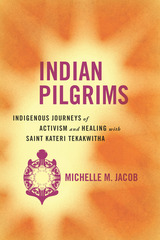 Indian Pilgrims: Indigenous Journeys of Activism and Healing with Saint Kateri Tekakwitha
Michelle M. Jacob
University of Arizona Press, 2016 In 2012 Kateri Tekakwitha became the first North American Indian to be canonized as a saint by the Roman Catholic Church, an event that American Indian Catholics have awaited for generations. Saint Kateri, known as the patroness of the environment, was born in 1656 near present-day Albany, New York, to an Algonquin mother and a Mohawk father. Tekakwitha converted to Christianity at age nineteen and took a vow of perpetual virginity. Her devotees have advocated for her sainthood since her death in 1680. Within historical Catholic writings, Tekakwitha is portrayed as a model of pious, submissive femininity. Indian Pilgrims moves beyond mainstream narratives and shows that Saint Kateri is a powerful feminine figure who inspires decolonizing activism in contemporary Indigenous peoples’ lives.
Author Michelle M. Jacob examines Saint Kateri’s influence on and relation to three important themes—caring for the environment, building community, and reclaiming the Native feminine as sacred—and brings a Native feminist perspective to the story of Saint Kateri. The book demonstrates the power and potential of Indigenous decolonizing activism, as Saint Kateri’s devotees claim the space of the Catholic Church to revitalize traditional cultural practices, teach and learn Indigenous languages, and address critical issues such as protecting Indigenous homelands from environmental degradation. The book is based on ethnographic research at multiple sites, including Saint Kateri’s 2012 canonization festivities in Vatican City and Italy, the Akwesasne Mohawk Reservation (New York and Canada), the Yakama Reservation (Washington), and the National Tekakwitha Conferences in Texas, North Dakota, and Louisiana. Through narratives from these events, Jacob addresses issues of gender justice—such as respecting the autonomy of women while encouraging collectivist thinking and strategizing—and seeks collective remedies that challenge colonial and capitalist filters.
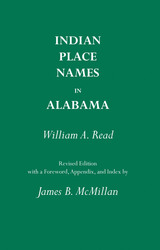 Indian Place Names in Alabama
William A. Read, and revised edition by James B. McMillan
University of Alabama Press, 1984 Learn the Secrets of Alabama’s Fascinating Place Names In Place Names in Alabama, readers embark on a captivating journey through the linguistic and cultural heritage embedded in the state’s geography. This masterful reference work, compiled by a renowned linguist and historian, unveils the origins and meanings of hundreds of towns, rivers, creeks, and landmarks—many rooted in Native American languages, colonial history, and local folklore. From the bustling streets of Tuscaloosa, whose name means “Black Warrior,” to Mobile, rooted in the name of the indigenous Maubila people, this book reveals the deep cultural and linguistic layers that shape Alabama’s identity. Other fascinating examples are Talladega, which traces its name to a Muscogee word meaning “border town” and Opelika, derived from Creek for “large swamp.” Indian Place Names in Alabama is scholarly yet accessible, ideal for historians, educators, genealogists, and curious readers. It is richly annotated and includes historical maps, archival citations, and linguistic insights. Its etymologies include place names of Indigenous, French, Spanish, and English origin. Whether you're tracing ancestral roots, exploring regional history, or simply intrigued by the names on a map, Indian Place Names in Alabama offers a treasure trove of discovery.
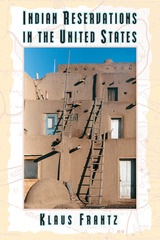 Indian Reservations in the United States: Territory, Sovereignty, and Socioeconomic Change
Klaus Frantz
University of Chicago Press, 1999 In the most comprehensive and detailed cultural-geographic study ever conducted of the American Indian reservations in the forty-eight contiguous states, Klaus Frantz explores the reservations as living environments rather than historical footnotes. Although this study provides well-researched documentation of the generally deplorable living conditions on the reservations, it also seeks to discover and highlight the many possibilities for positive change.
Informed by both historical research and extensive fieldwork, this book pays special attention to the natural resource base and economic outlook of the reservations, as well as the crucial issue of tribal sovereignty. Chapters also cover the demography of American Indian groups and their socioeconomic status (including standard of living, employment, and education). A new afterword treats some of the developments since the book's initial publication in German, such as the effects of the 1988 Indian gaming law that allowed Indian reservations to operate gambling establishments (with mixed success).
"Provides a good overview of the basic questions and problems facing reservation Indians today."—Peter Bolz, Journal of American History (on the German edition)
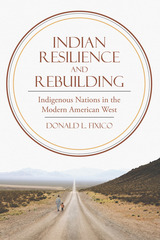 Indian Resilience and Rebuilding: Indigenous Nations in the Modern American West
Donald L. Fixico
University of Arizona Press, 2013 Indian Resilience and Rebuilding provides an Indigenous view of the last one-hundred years of Native history and guides readers through a century of achievements. It examines the progress that Indians have accomplished in rebuilding their nations in the 20th century, revealing how Native communities adapted to the cultural and economic pressures in modern America. Donald Fixico examines issues like land allotment, the Indian New Deal, termination and relocation, Red Power and self-determination, casino gaming, and repatriation. He applies ethnohistorical analysis and political economic theory to provide a multi-layered approach that ultimately shows how Native people reinvented themselves in order to rebuild their nations.
Fixico identifies the tools to this empowerment such as education, navigation within cultural systems, modern Indian leadership, and indigenized political economy. He explains how these tools helped Indian communities to rebuild their nations. Fixico constructs an Indigenous paradigm of Native ethos and reality that drives Indian modern political economies heading into the twenty-first century.
This illuminating and comprehensive analysis of Native nation’s resilience in the twentieth century demonstrates how Native Americans reinvented themselves, rebuilt their nations, and ultimately became major forces in the United States. Indian Resilience and Rebuilding, redefines how modern American history can and should be told.
|
|
